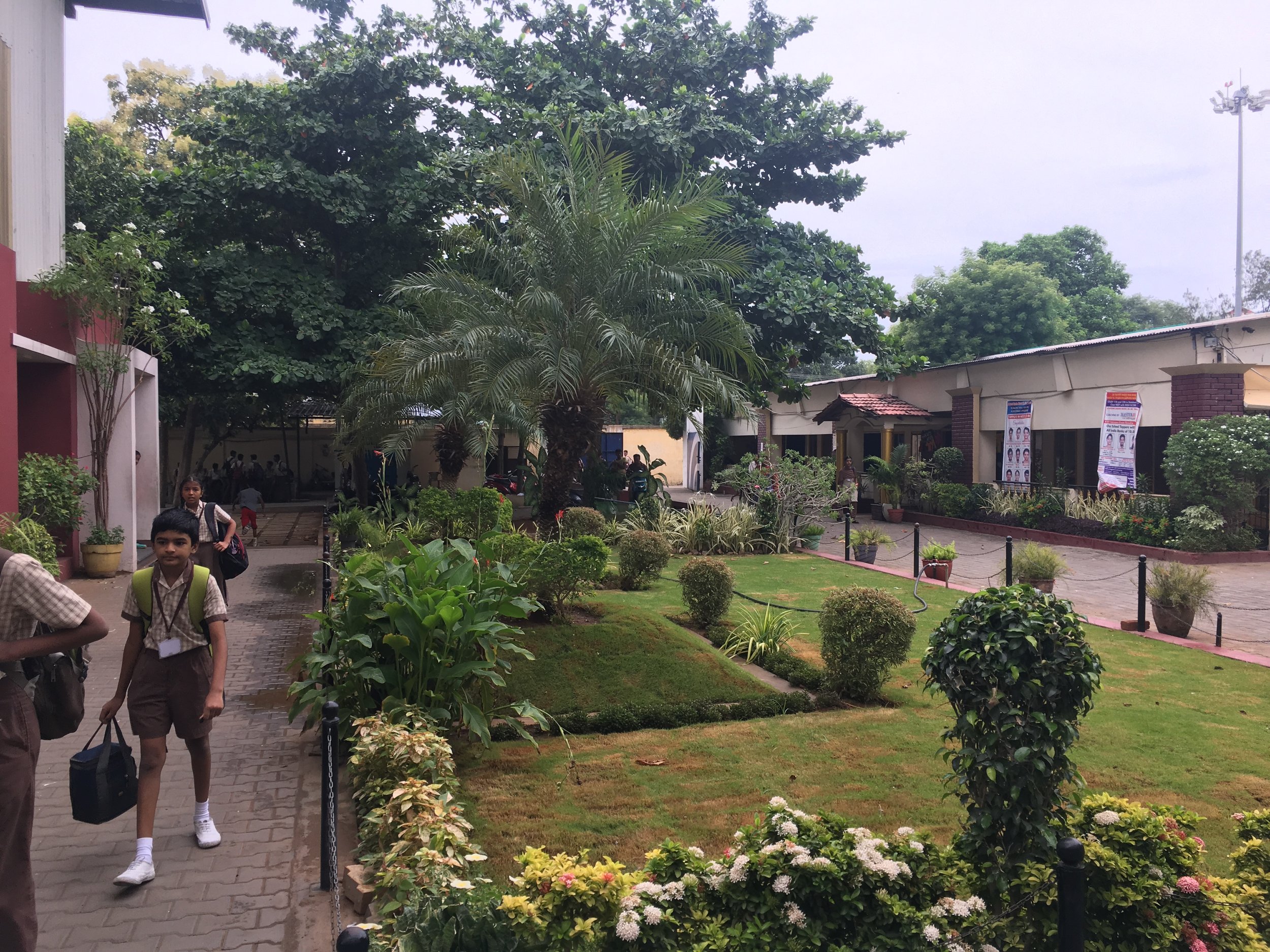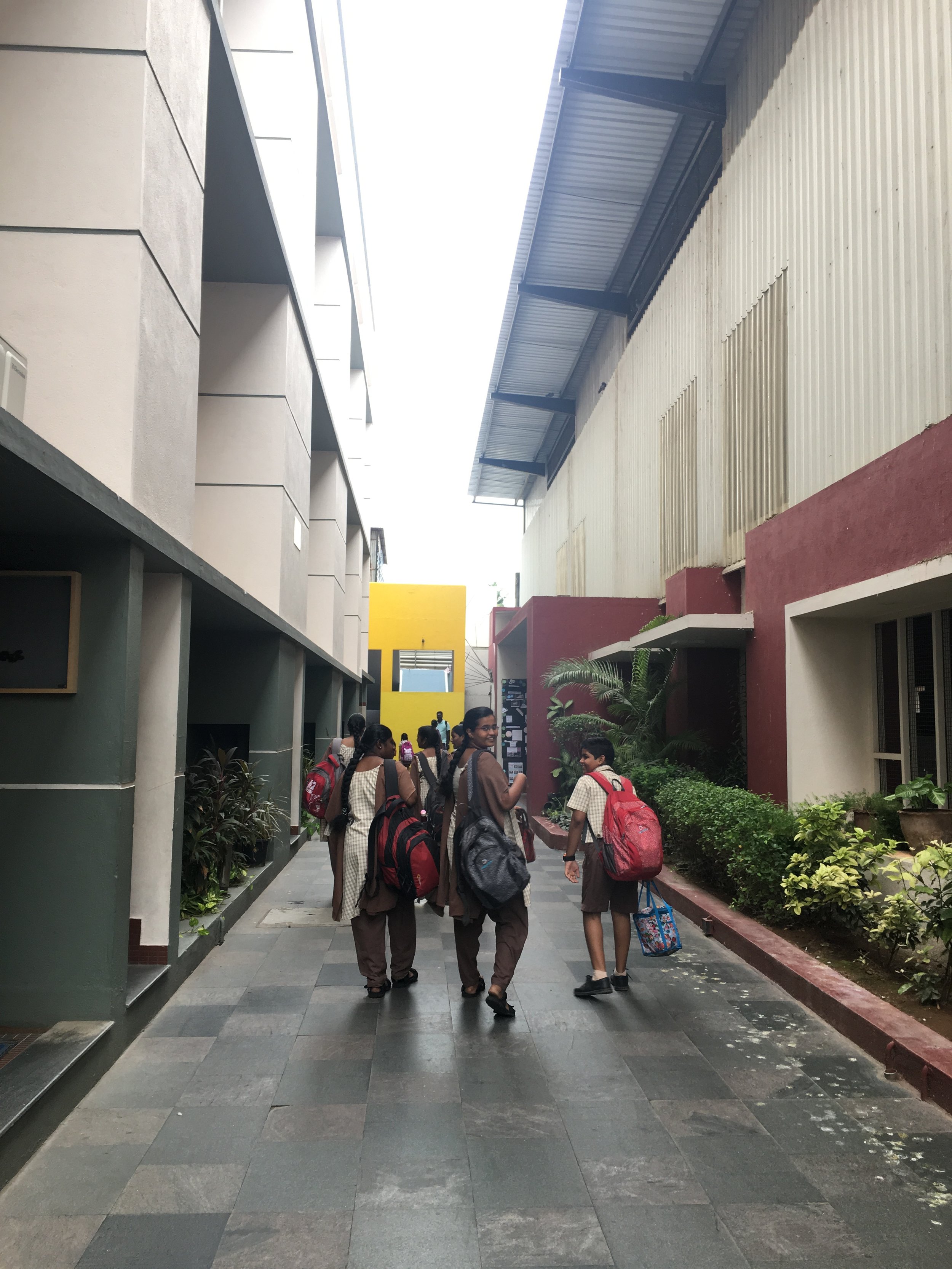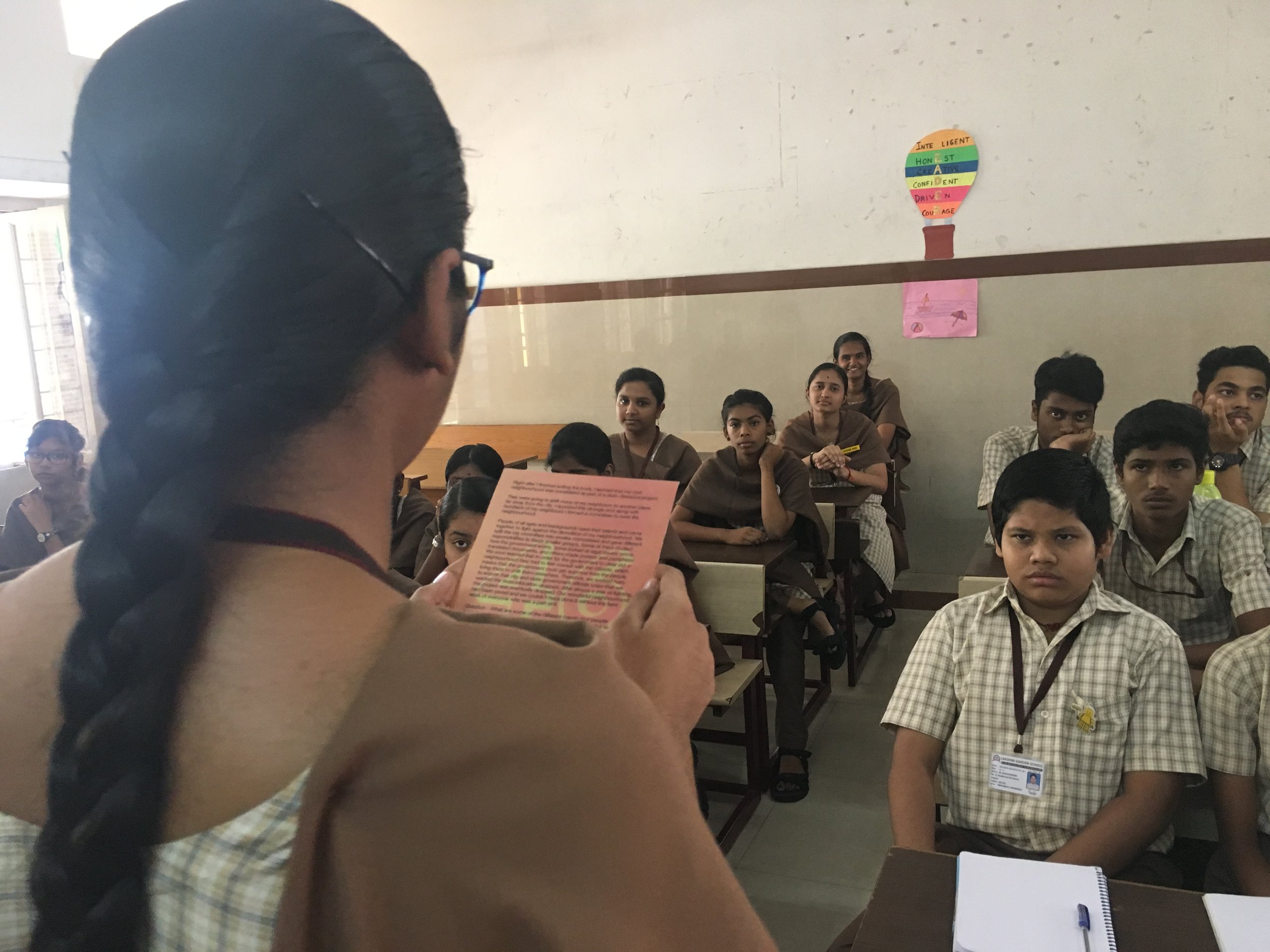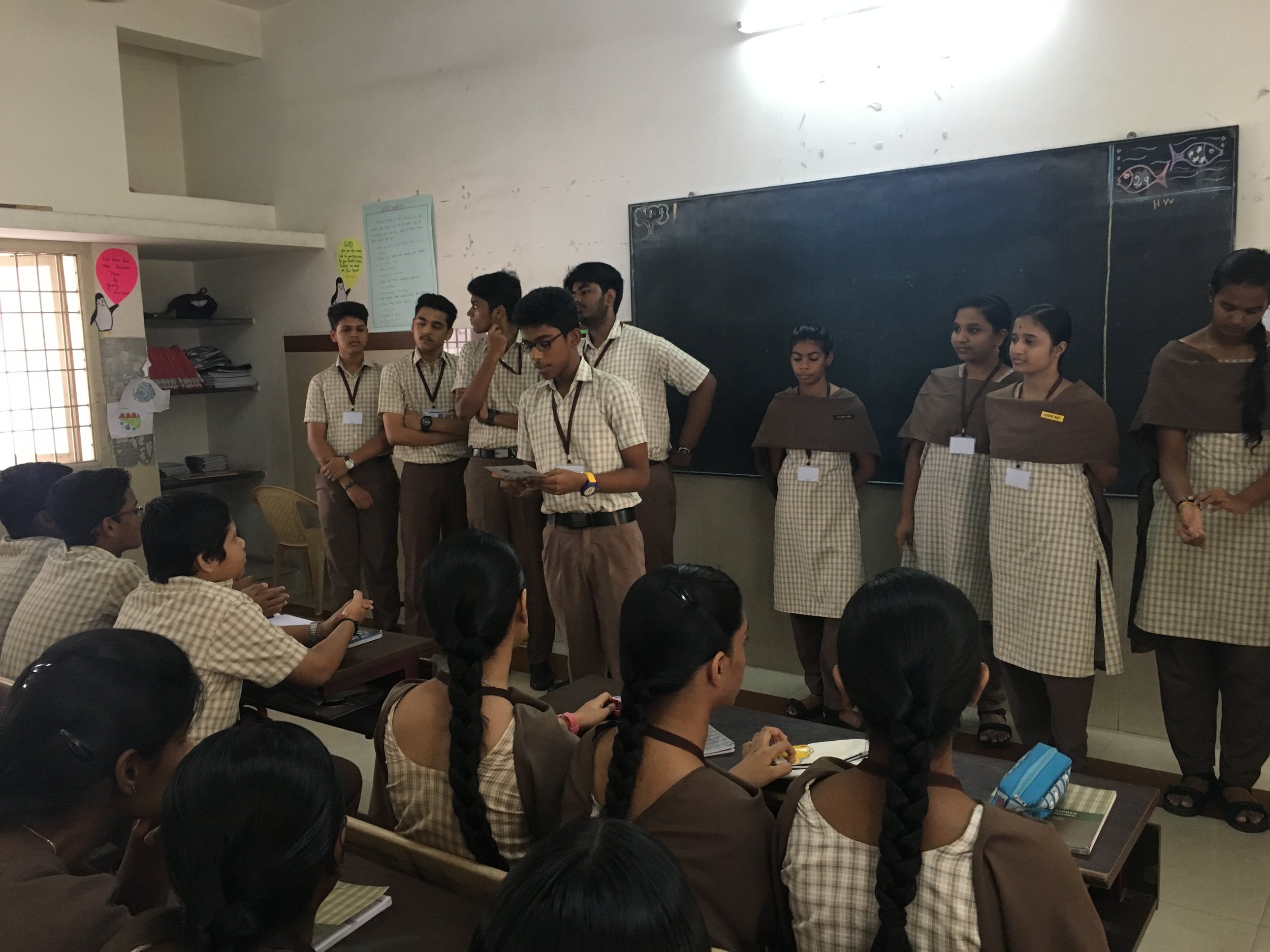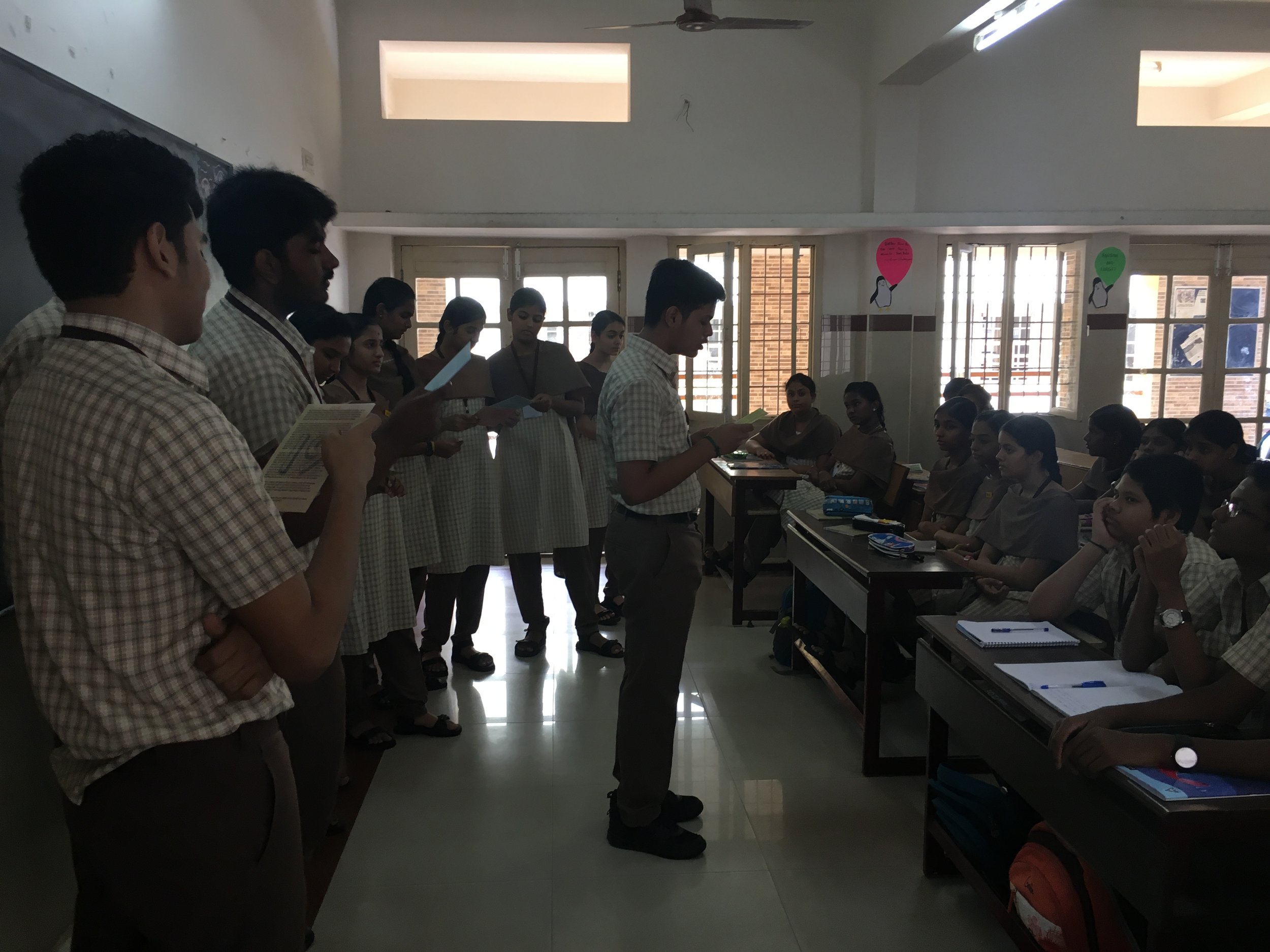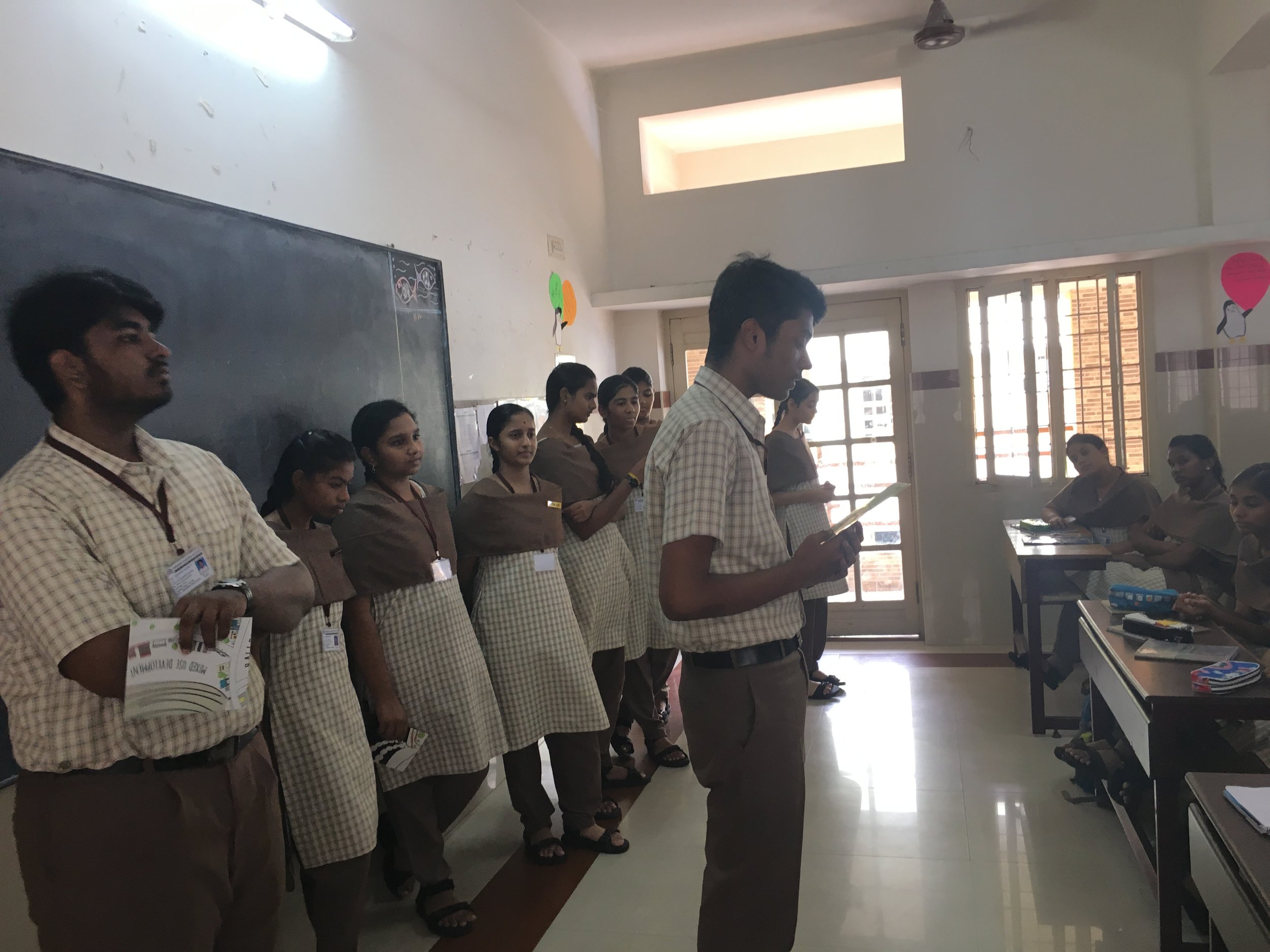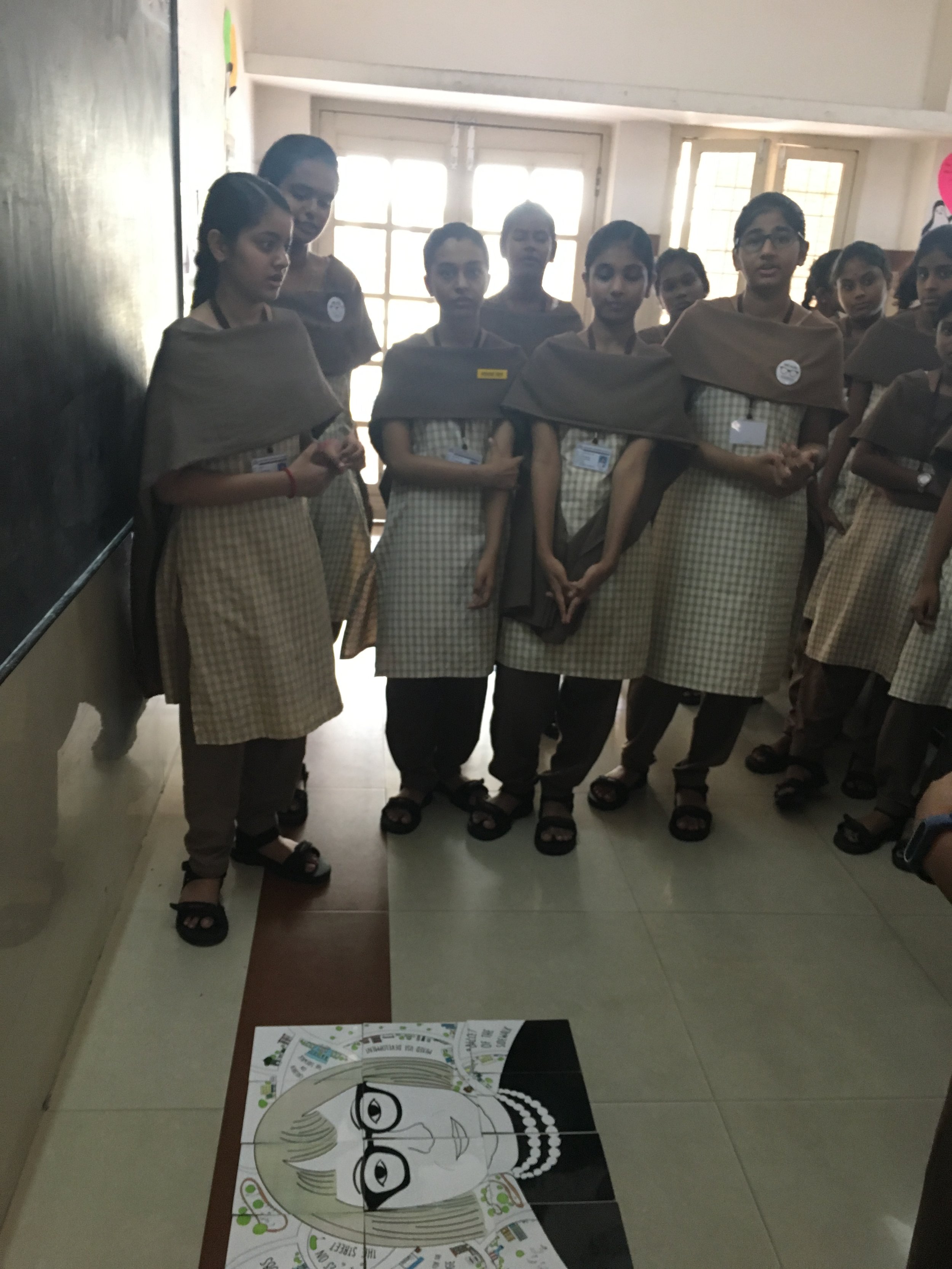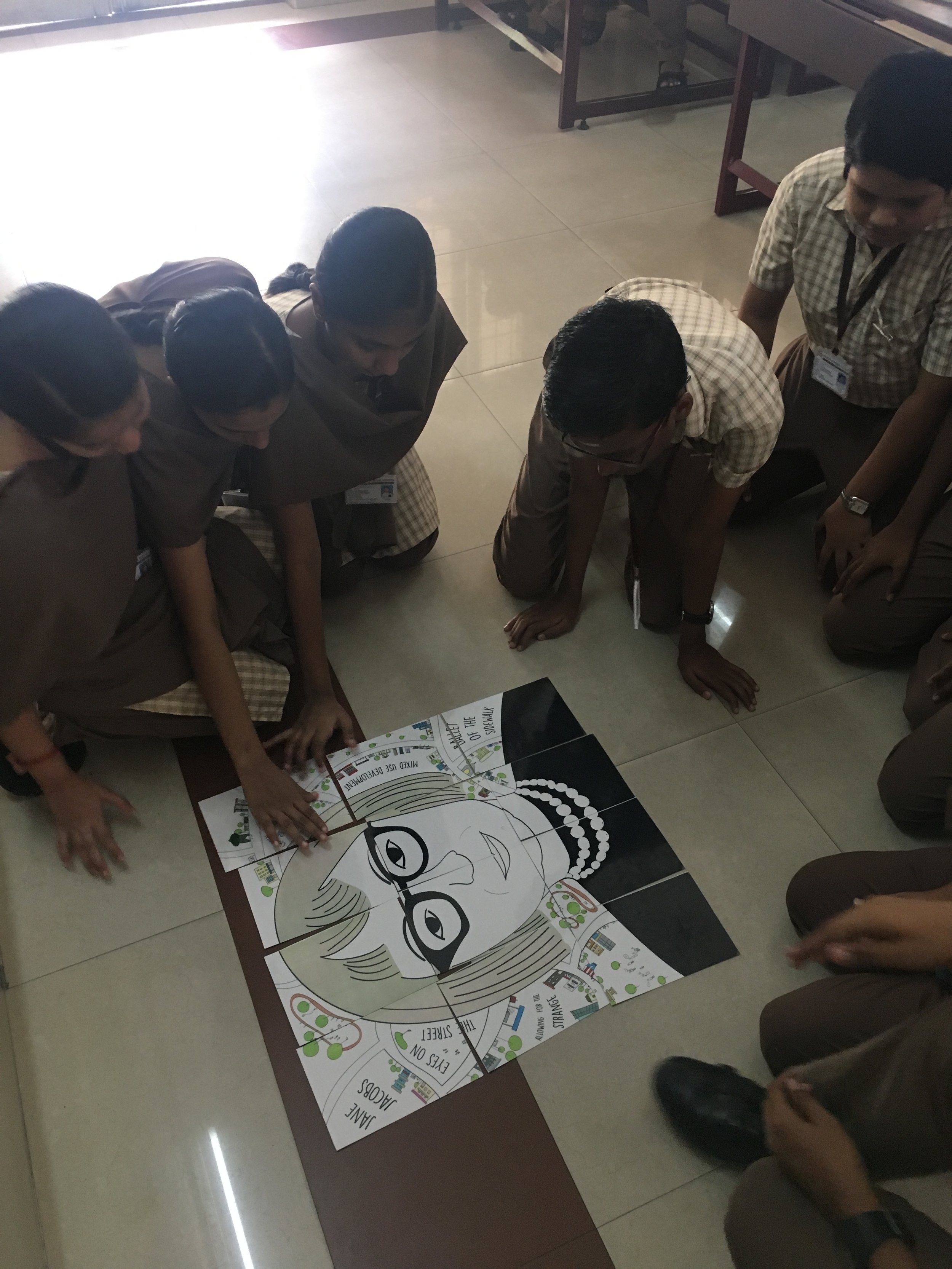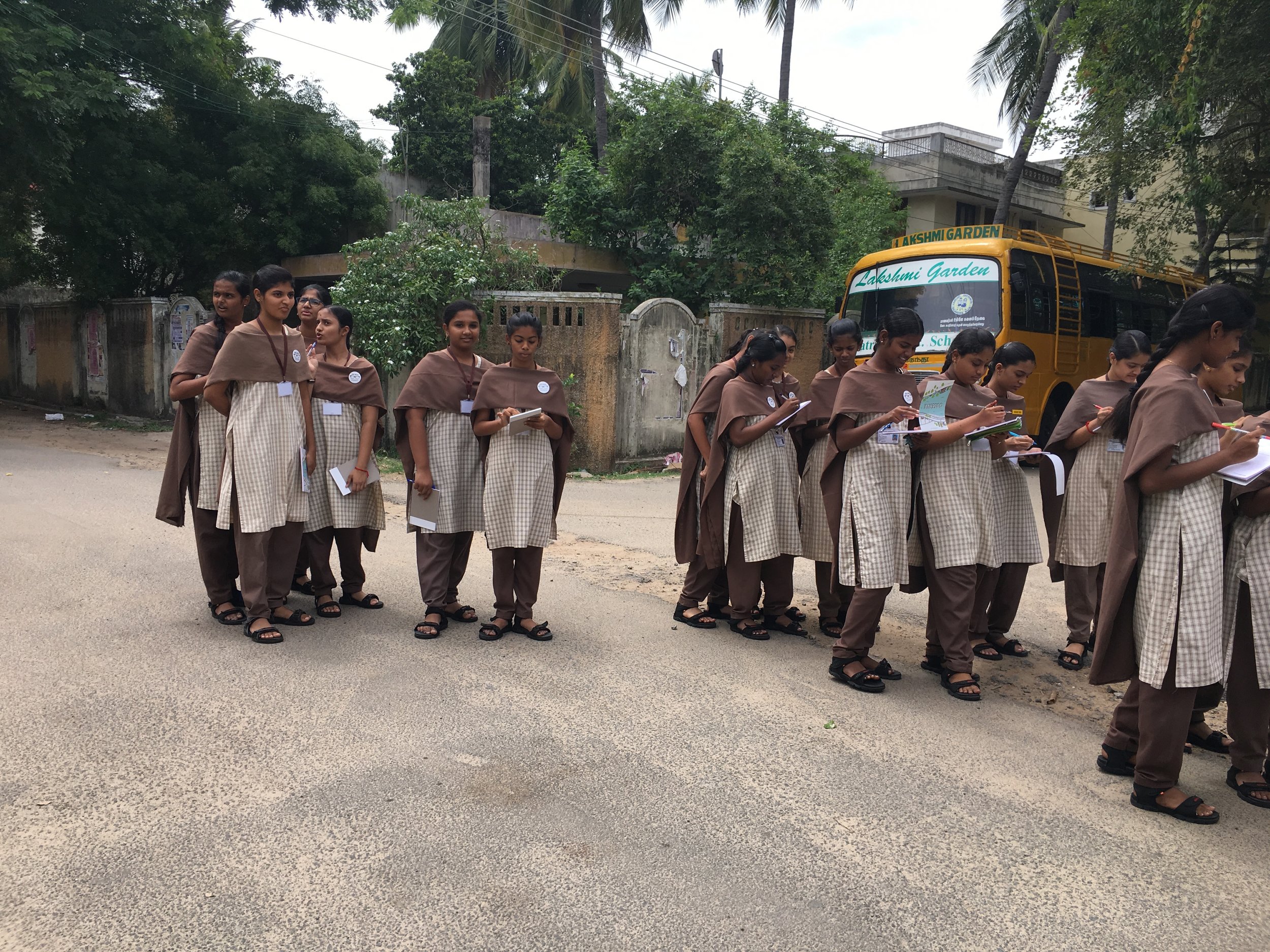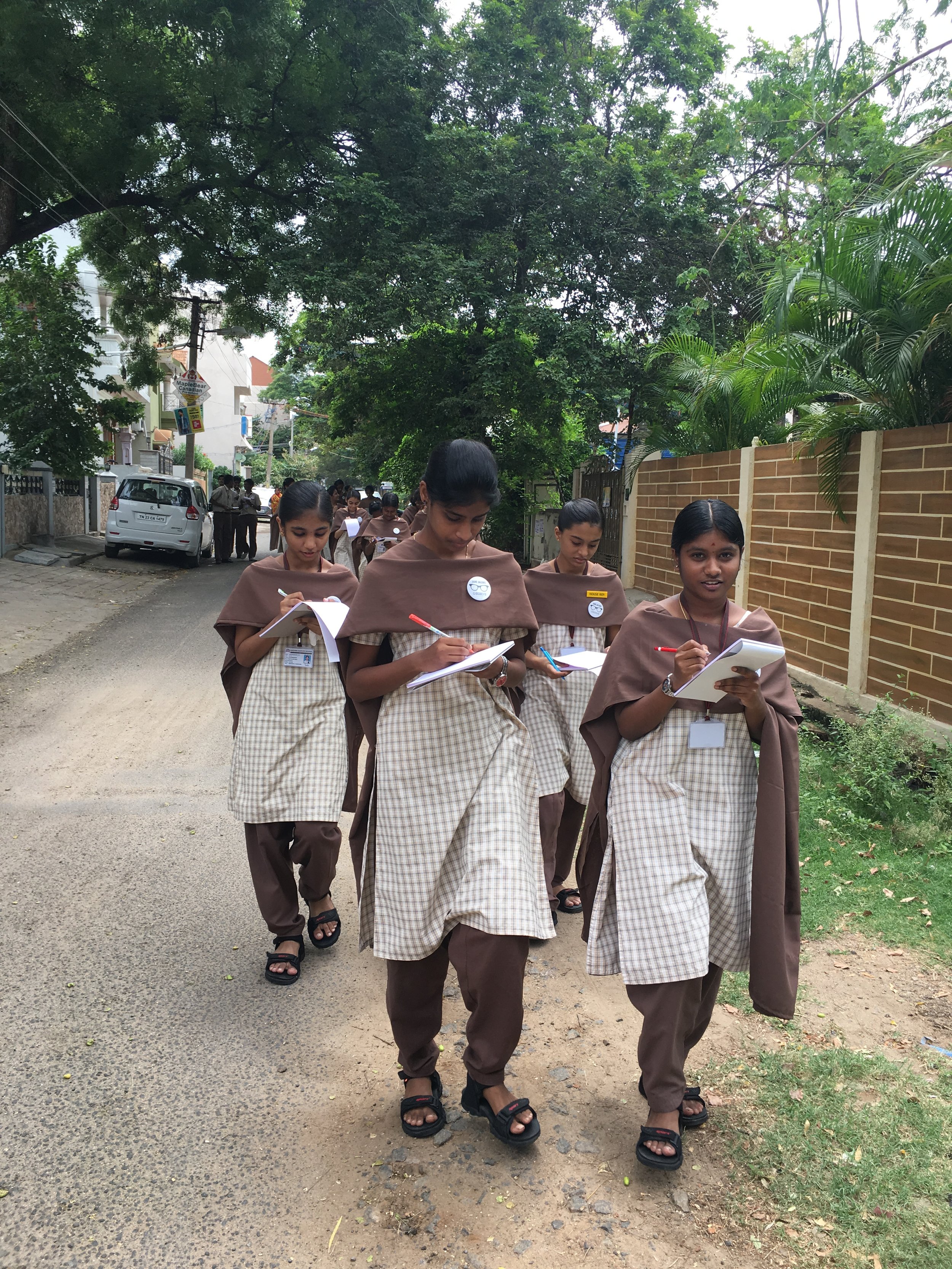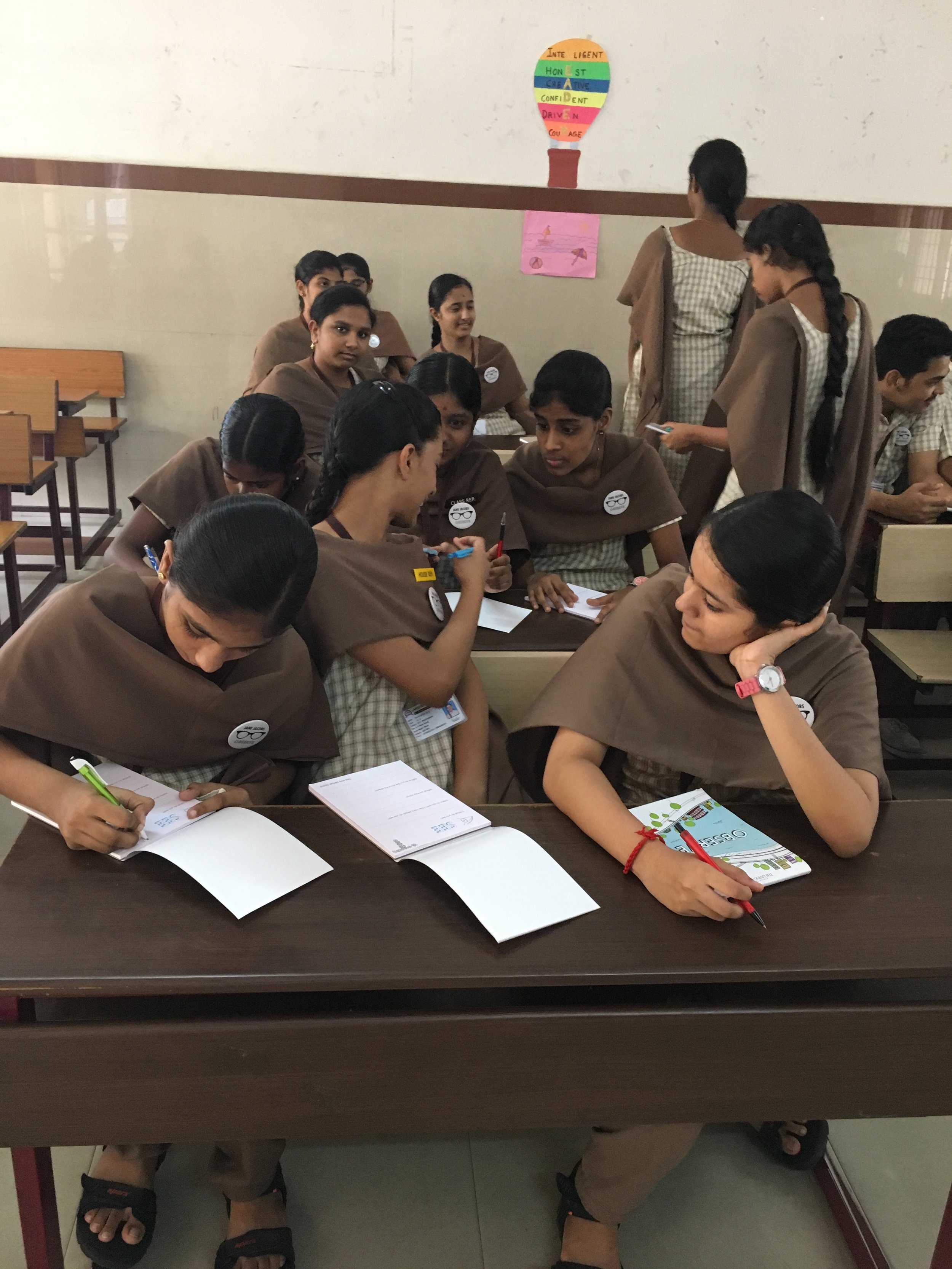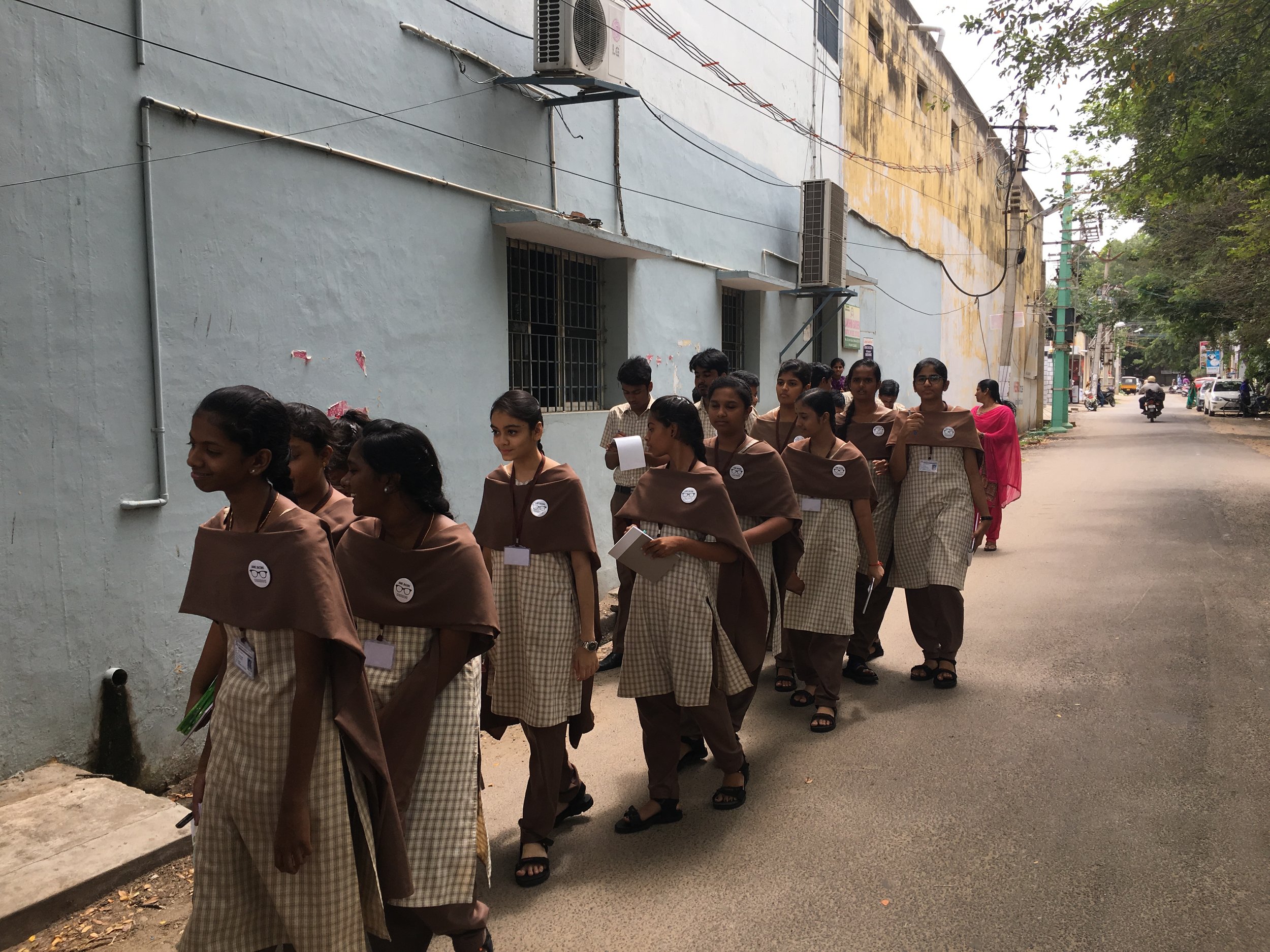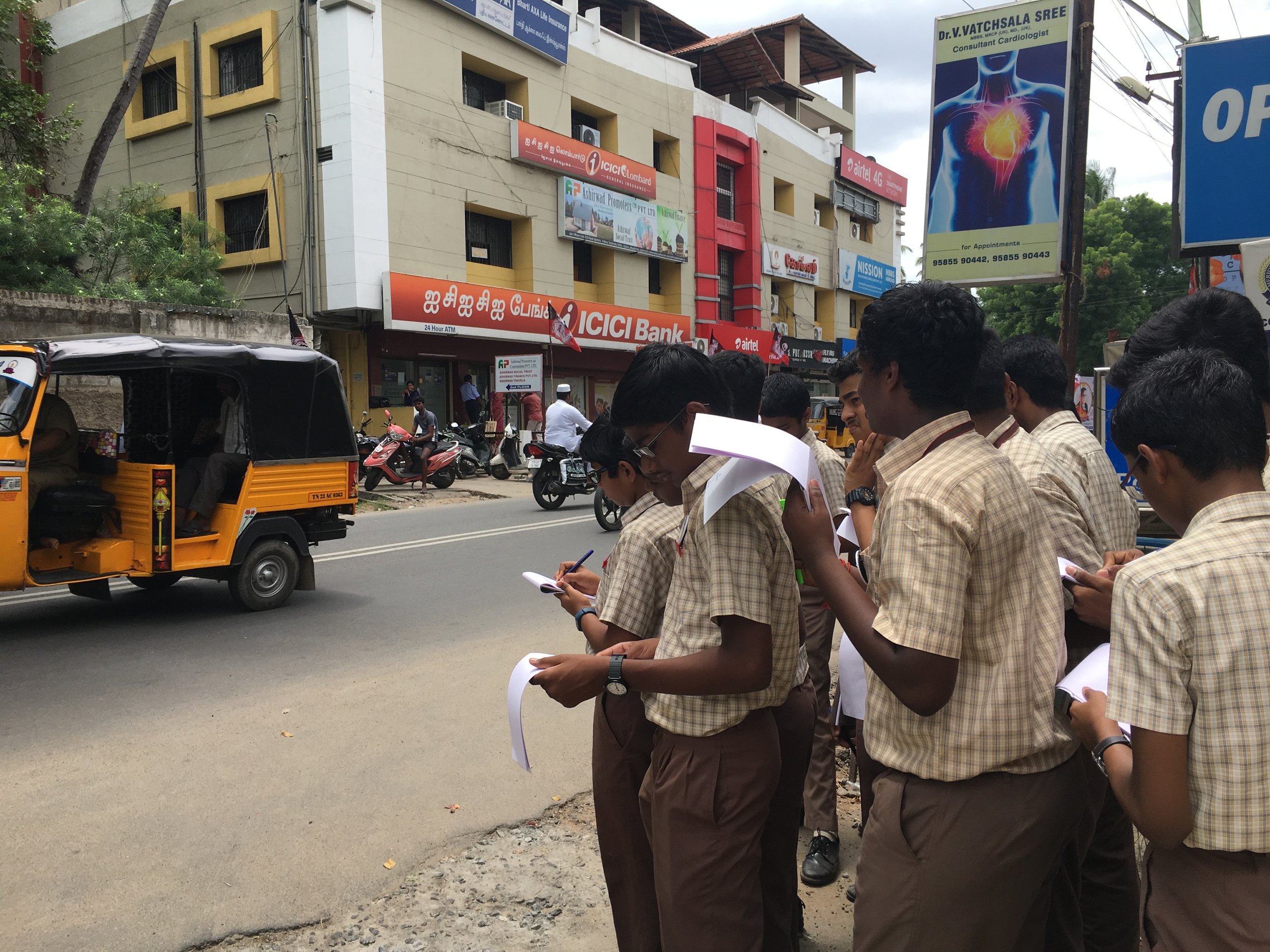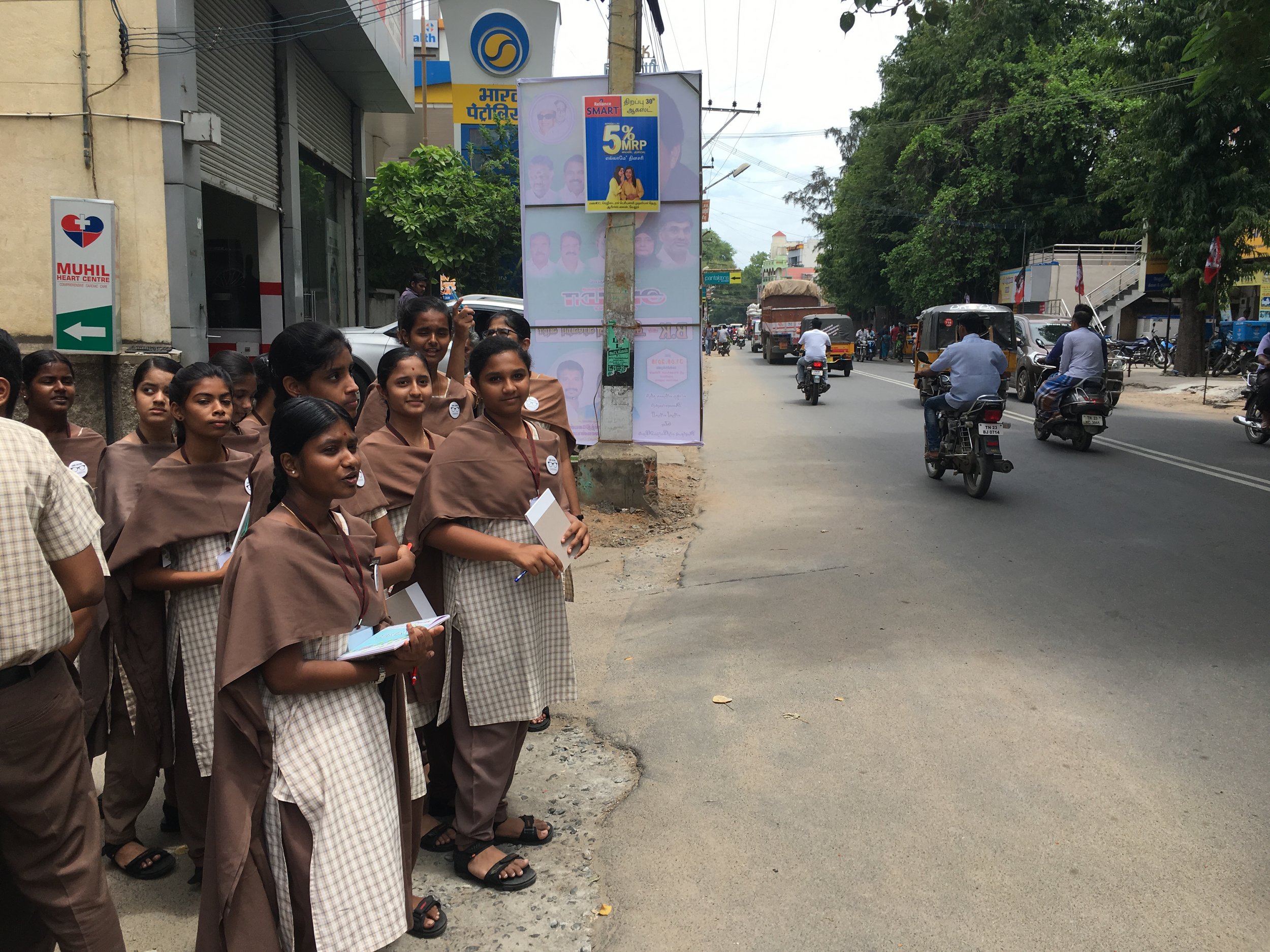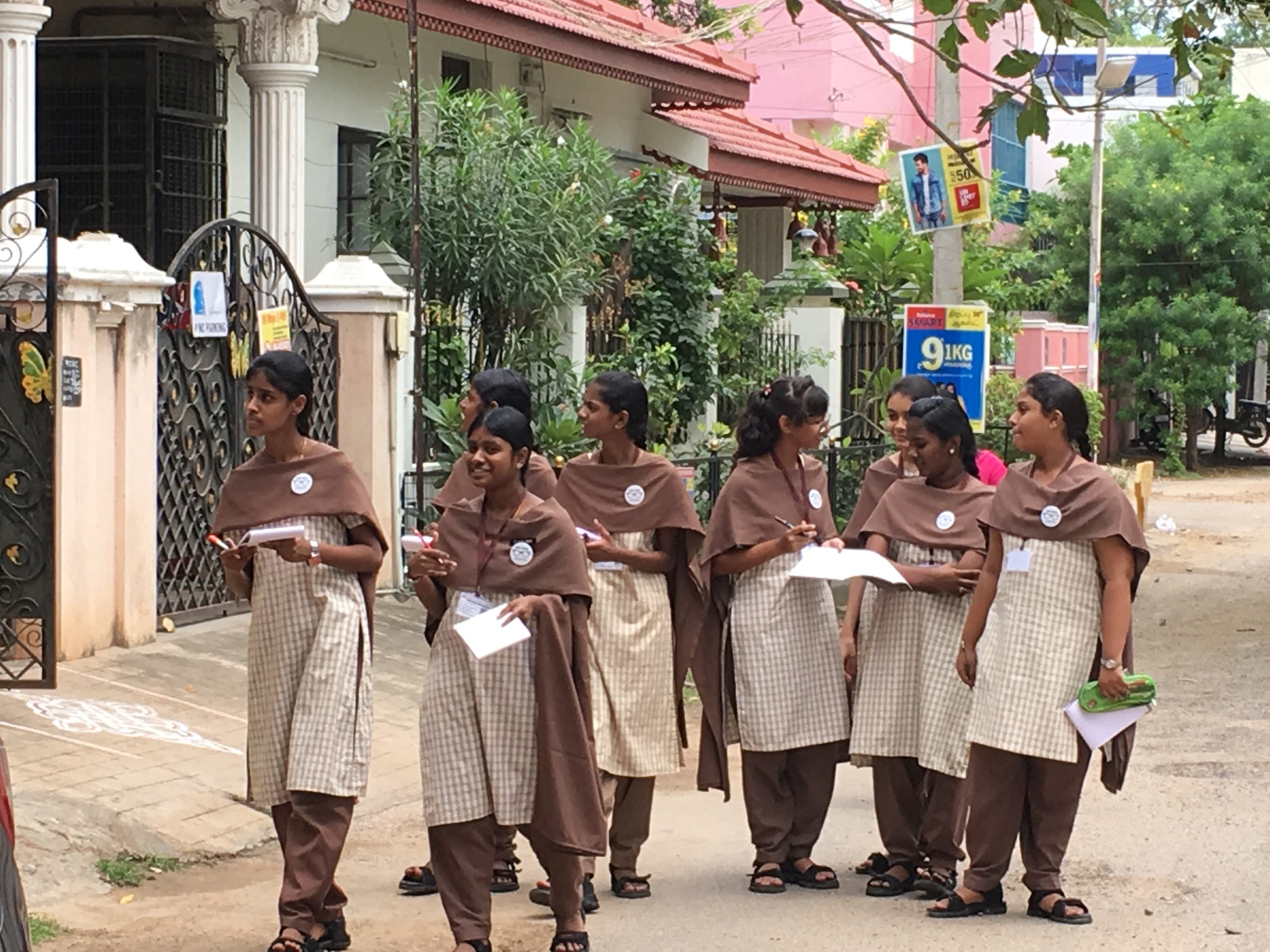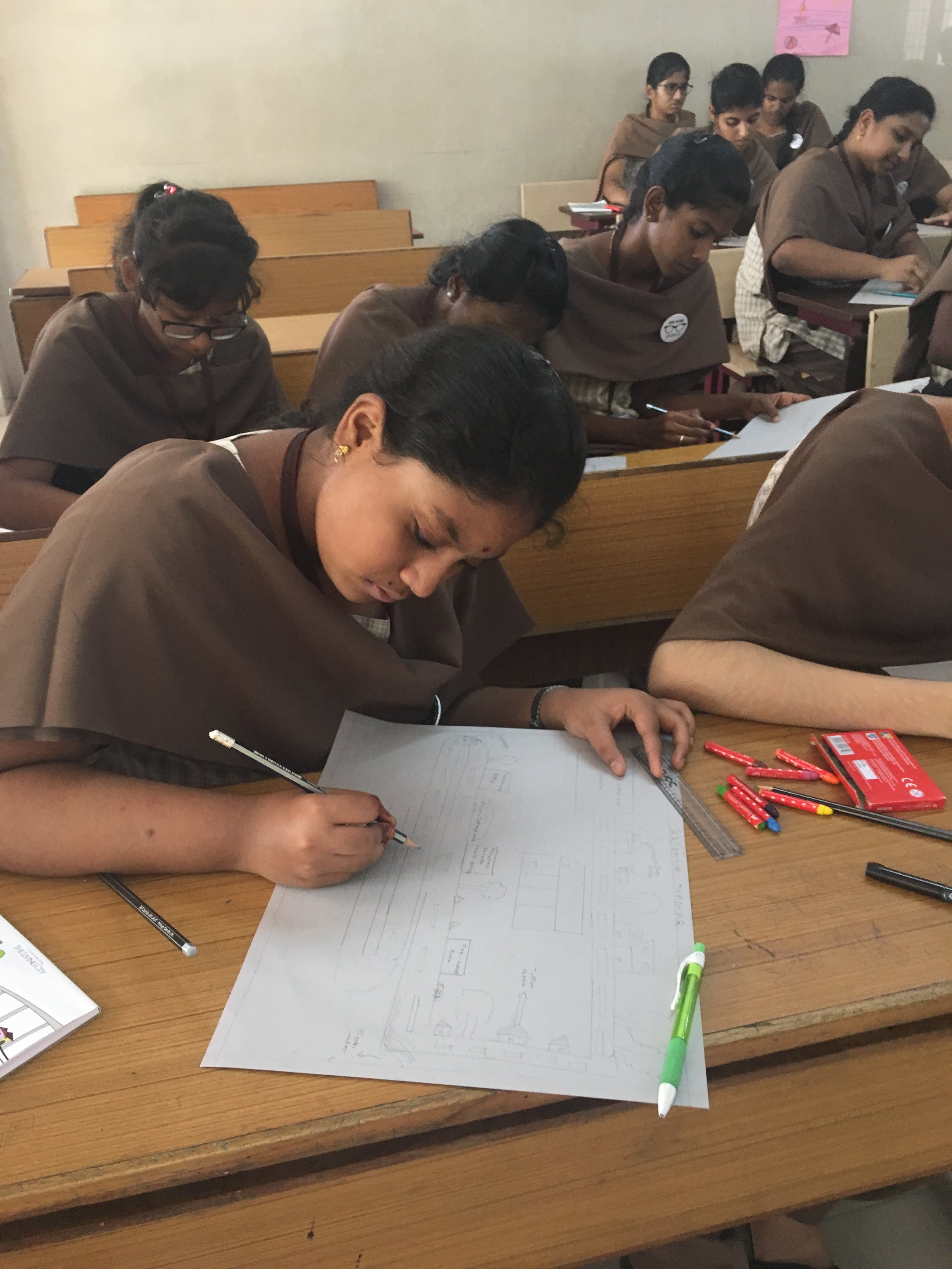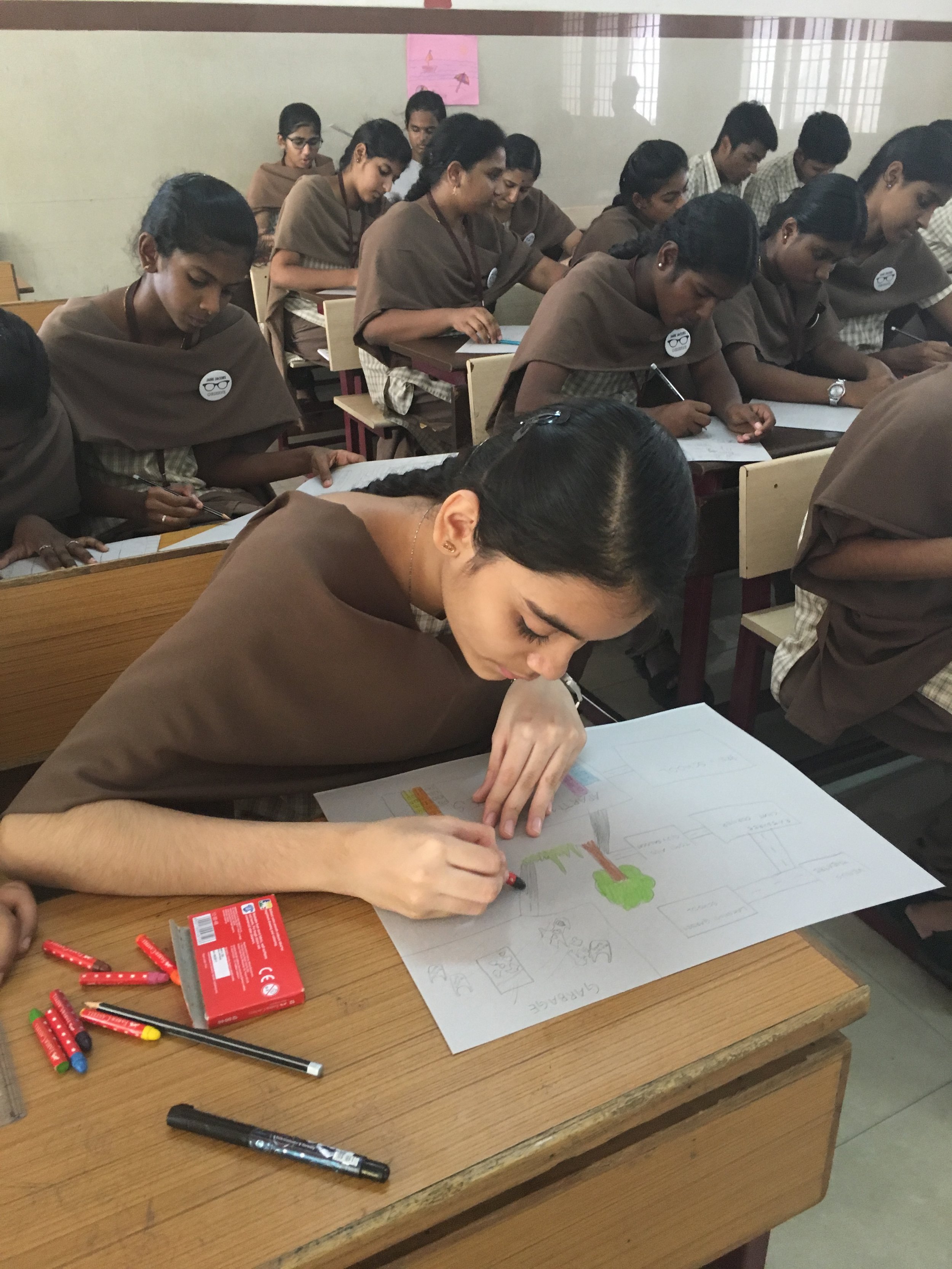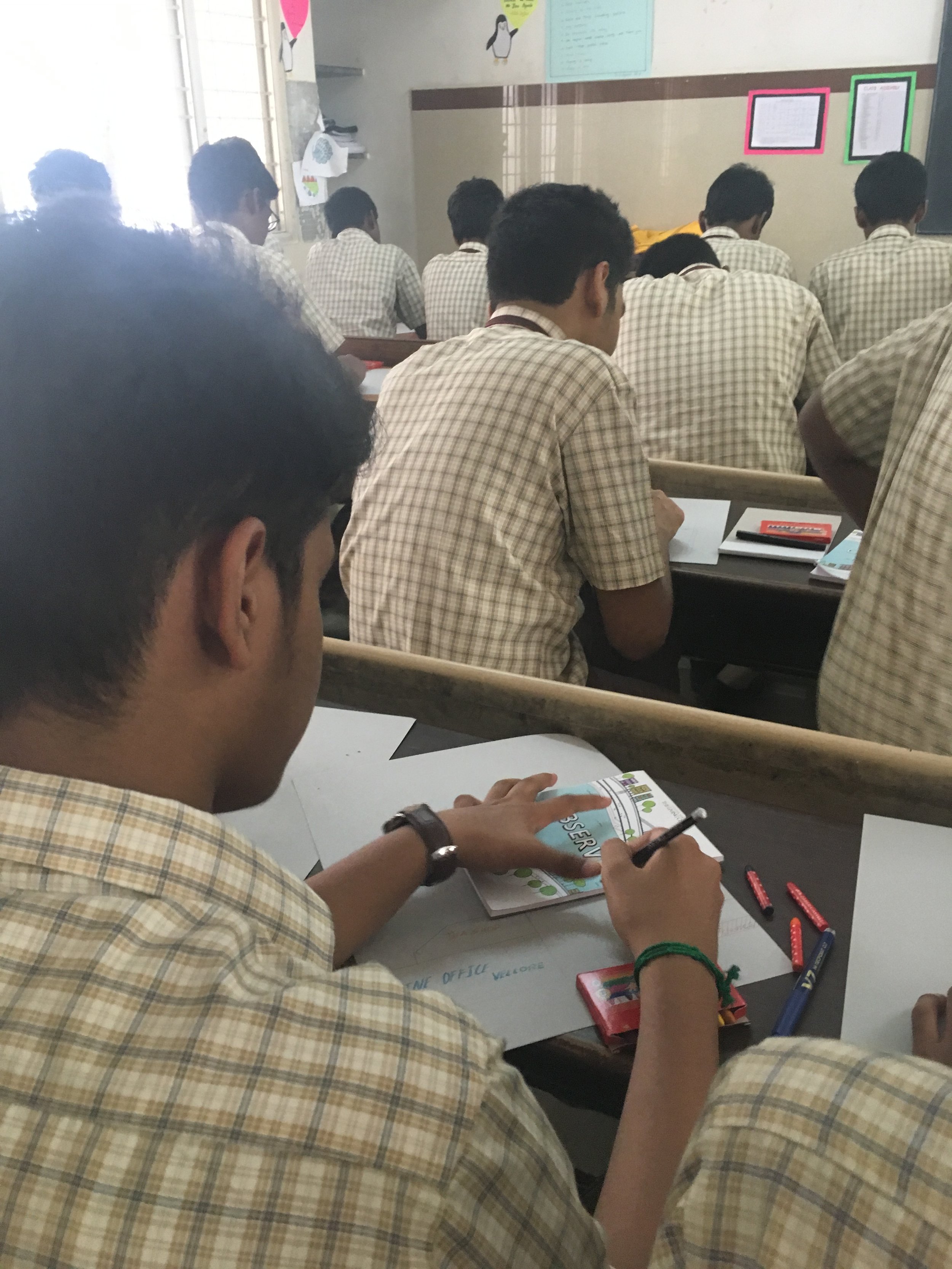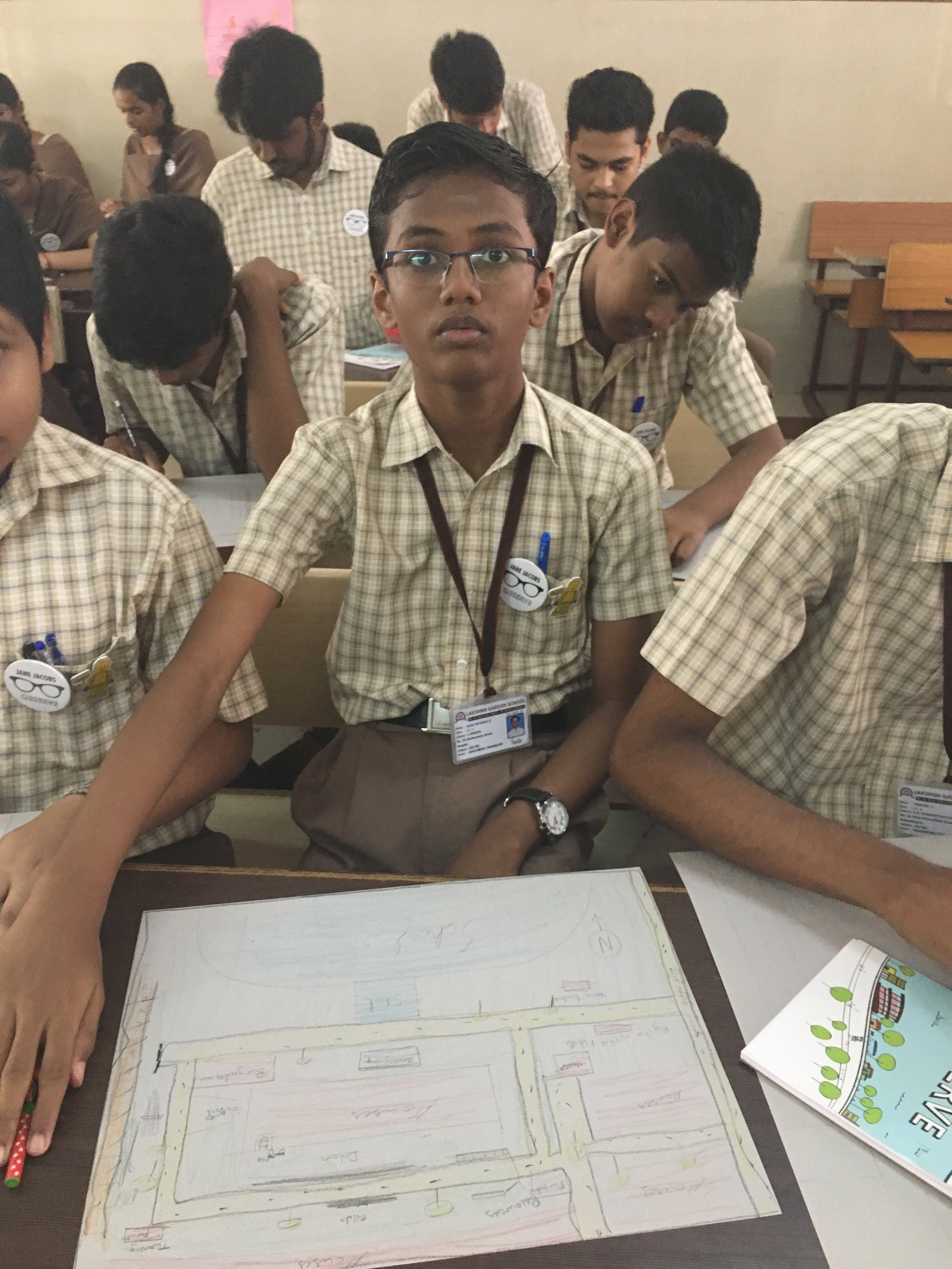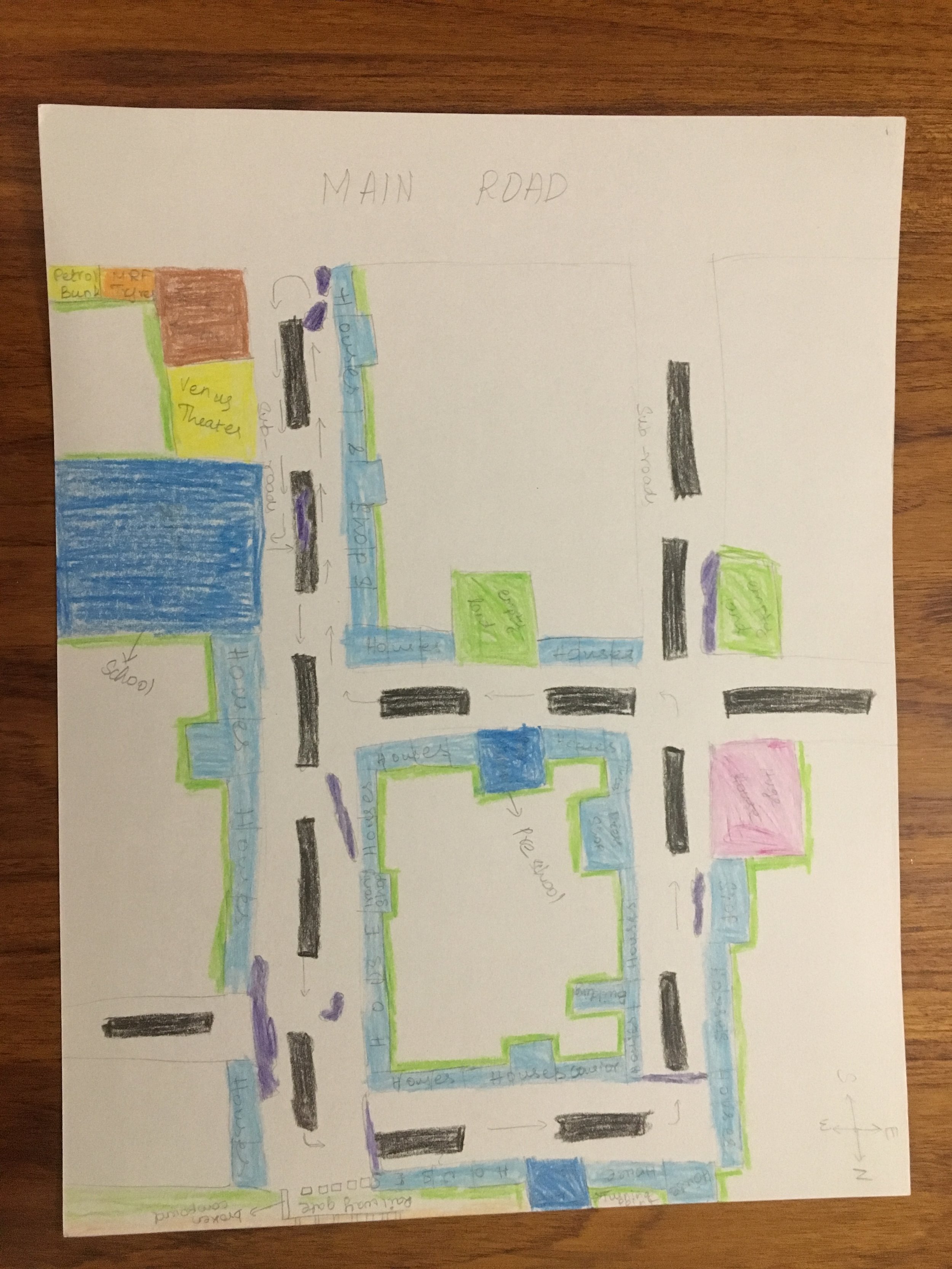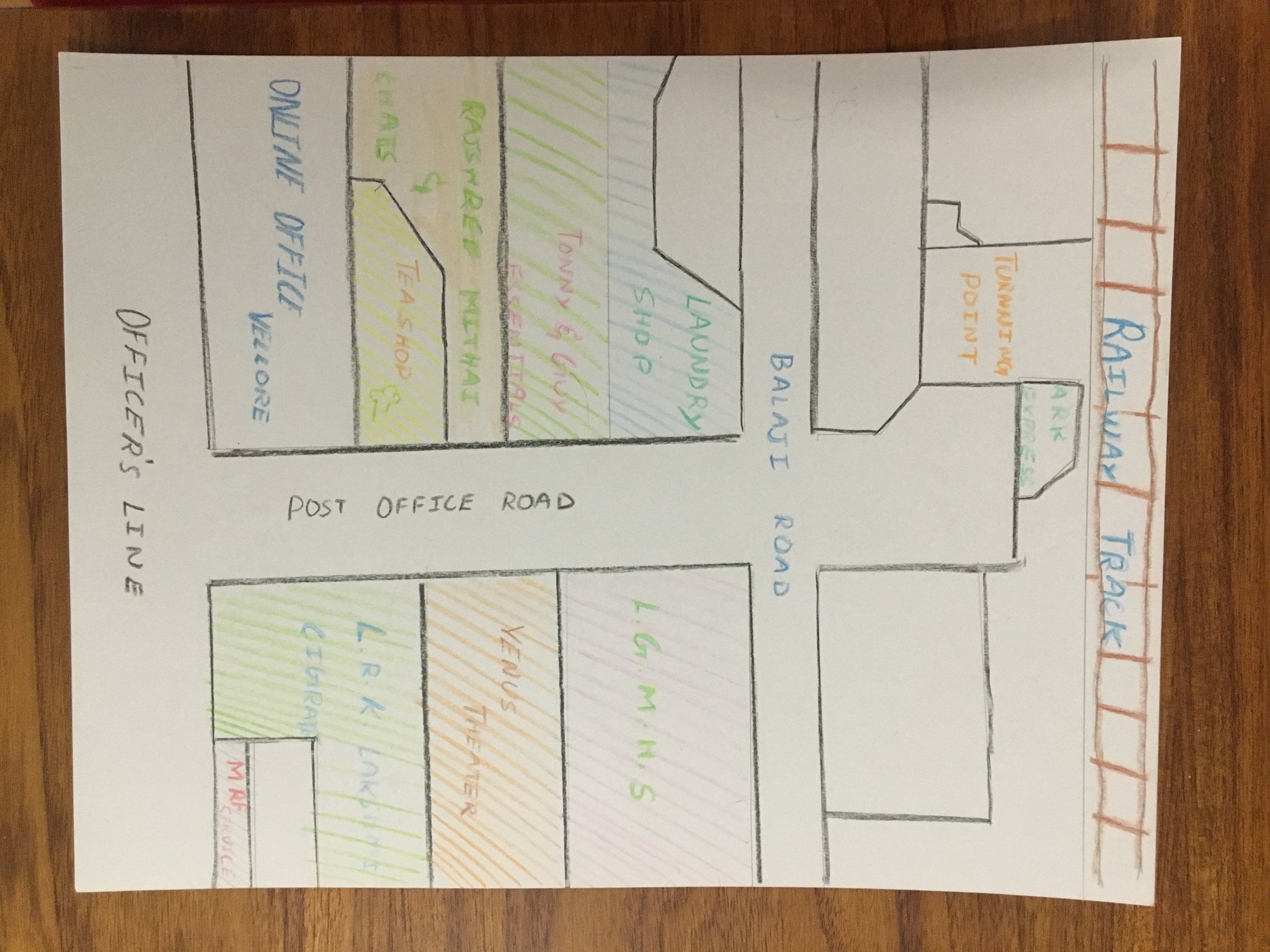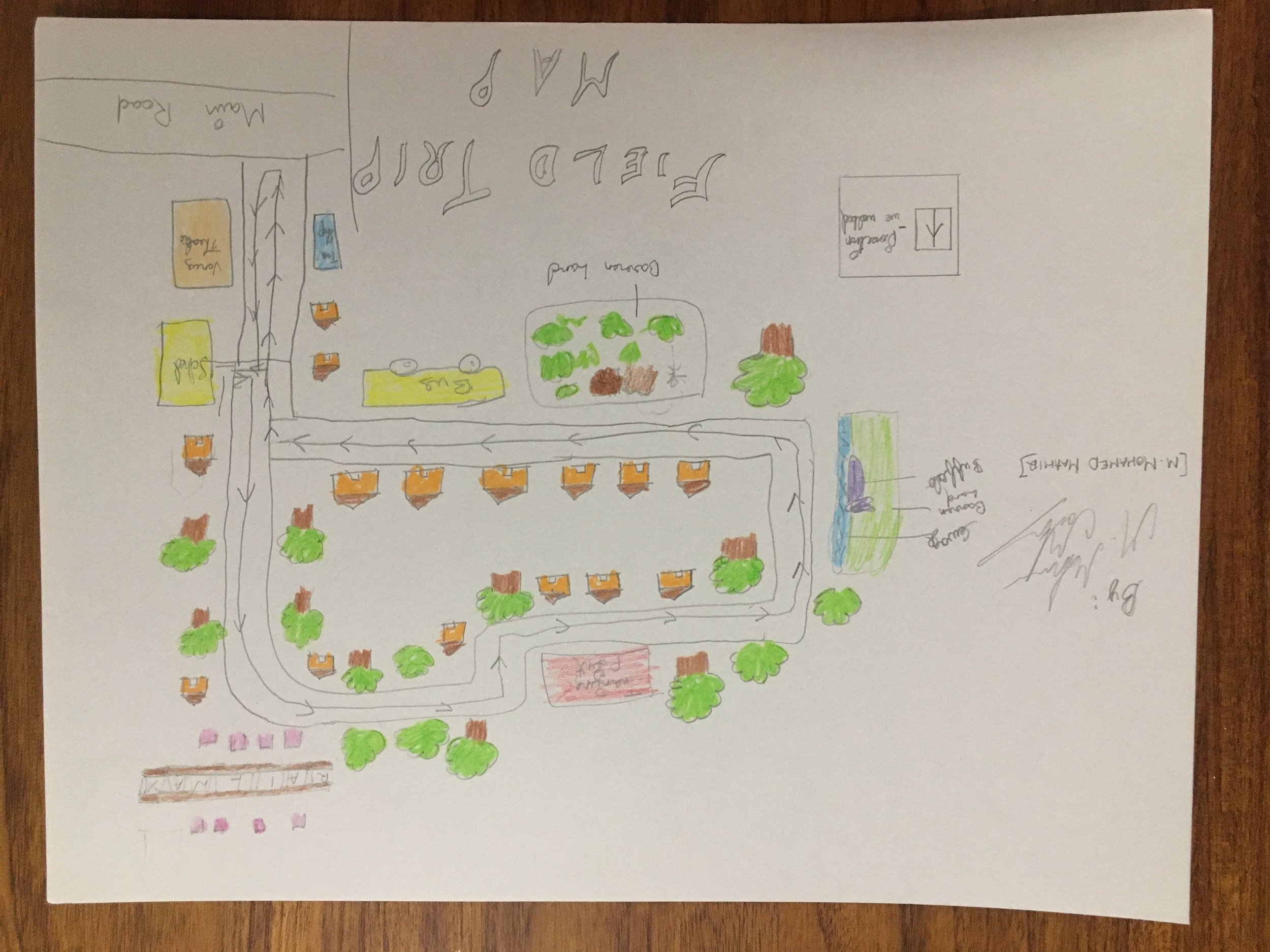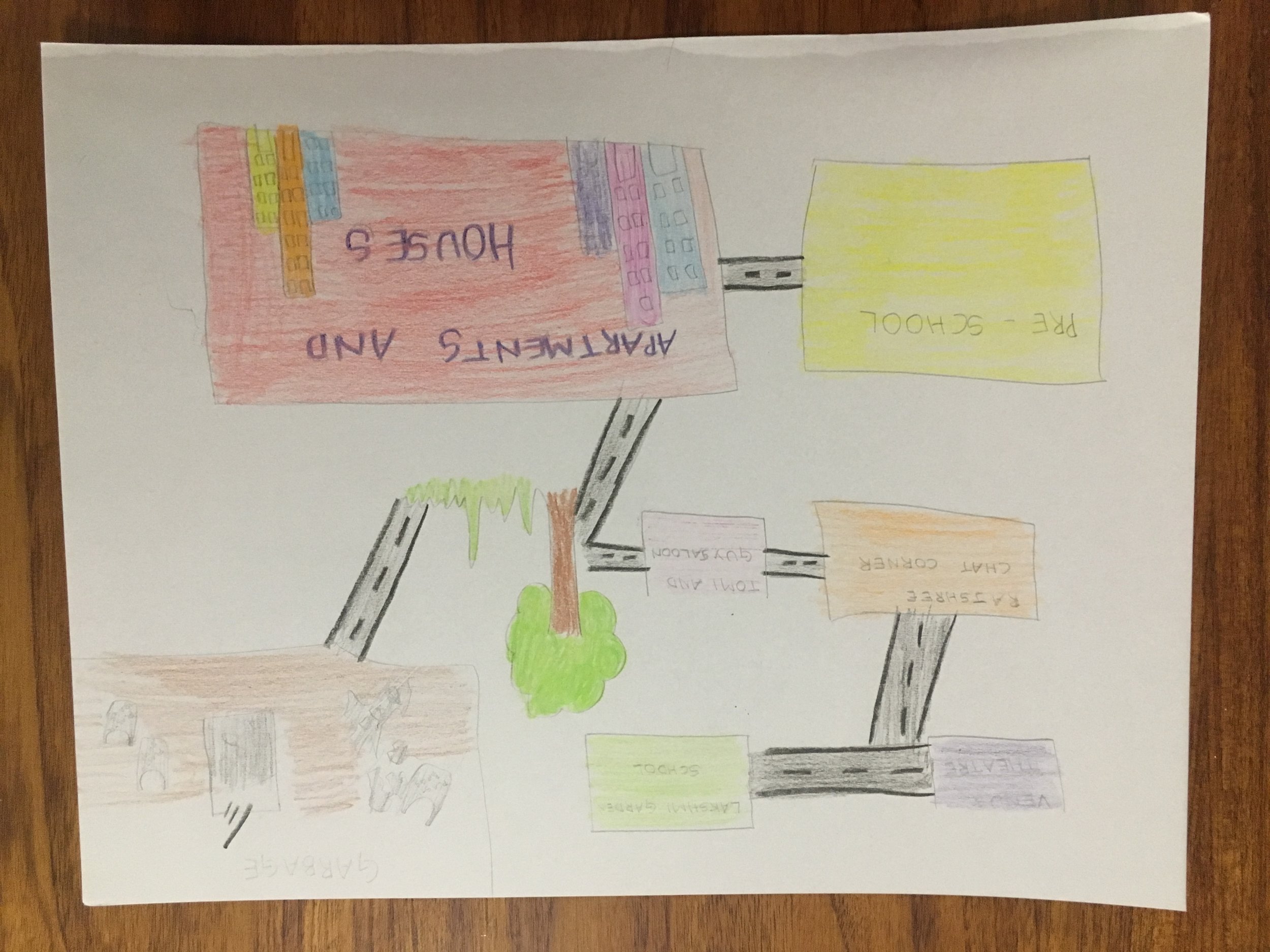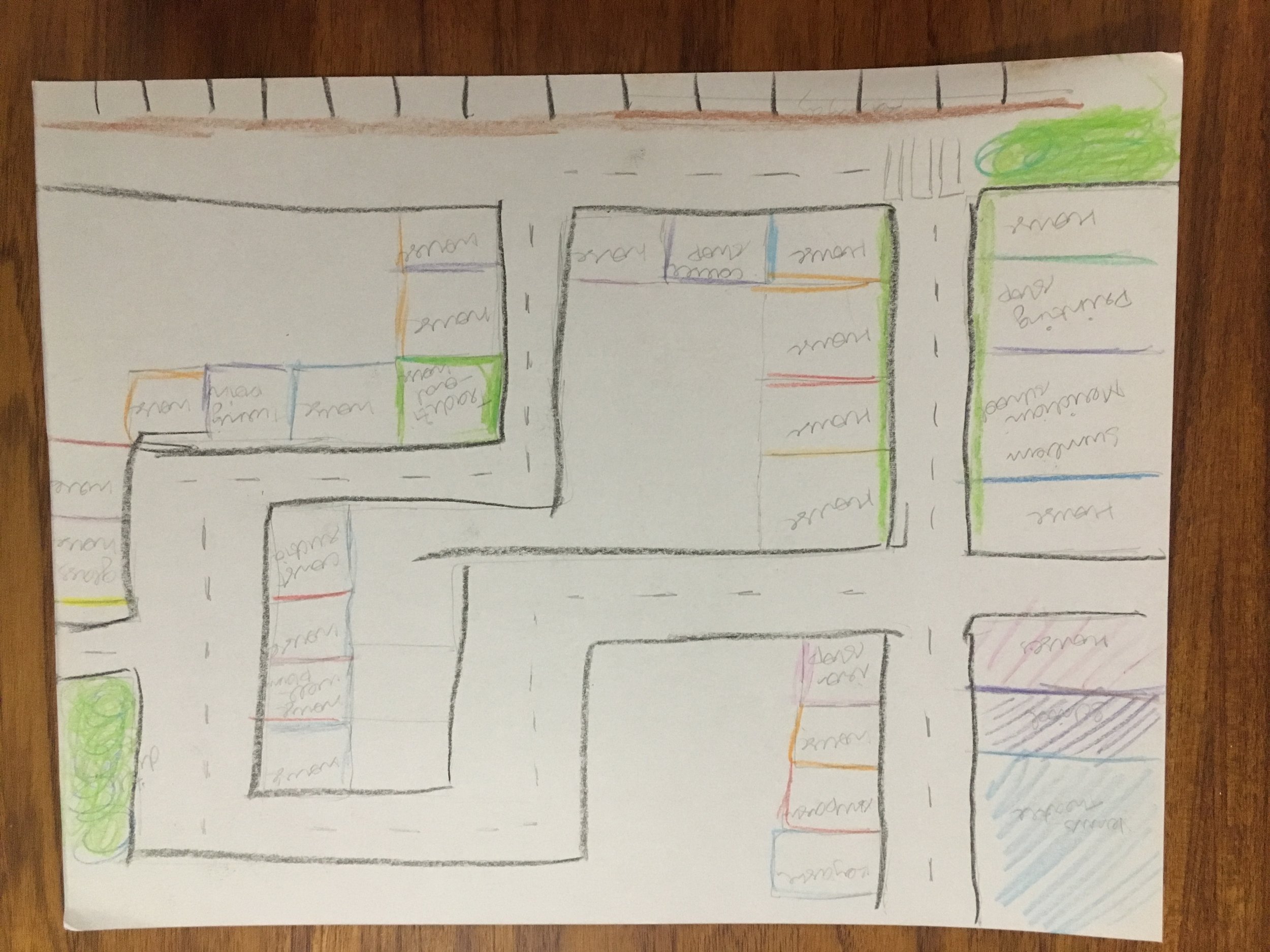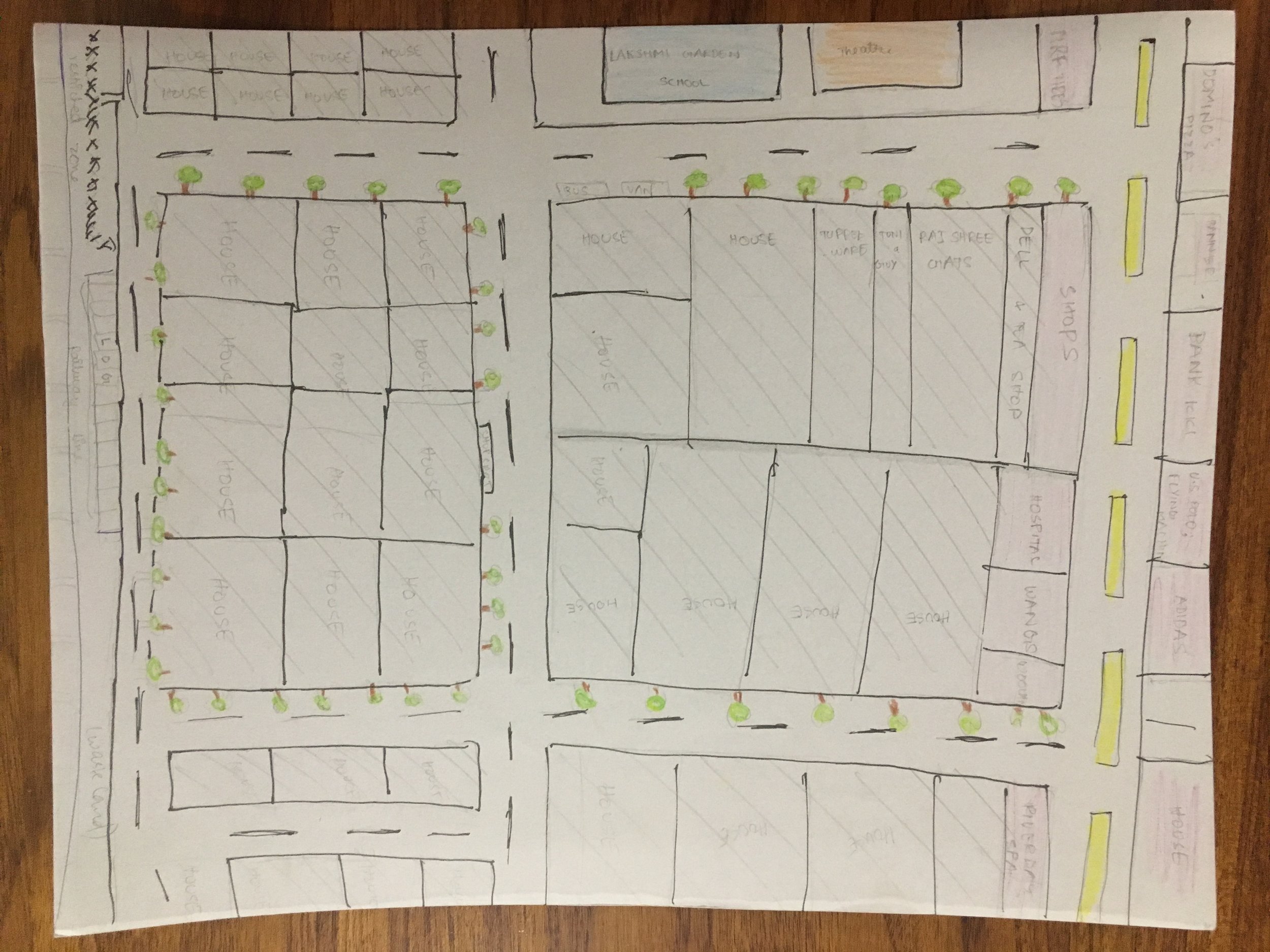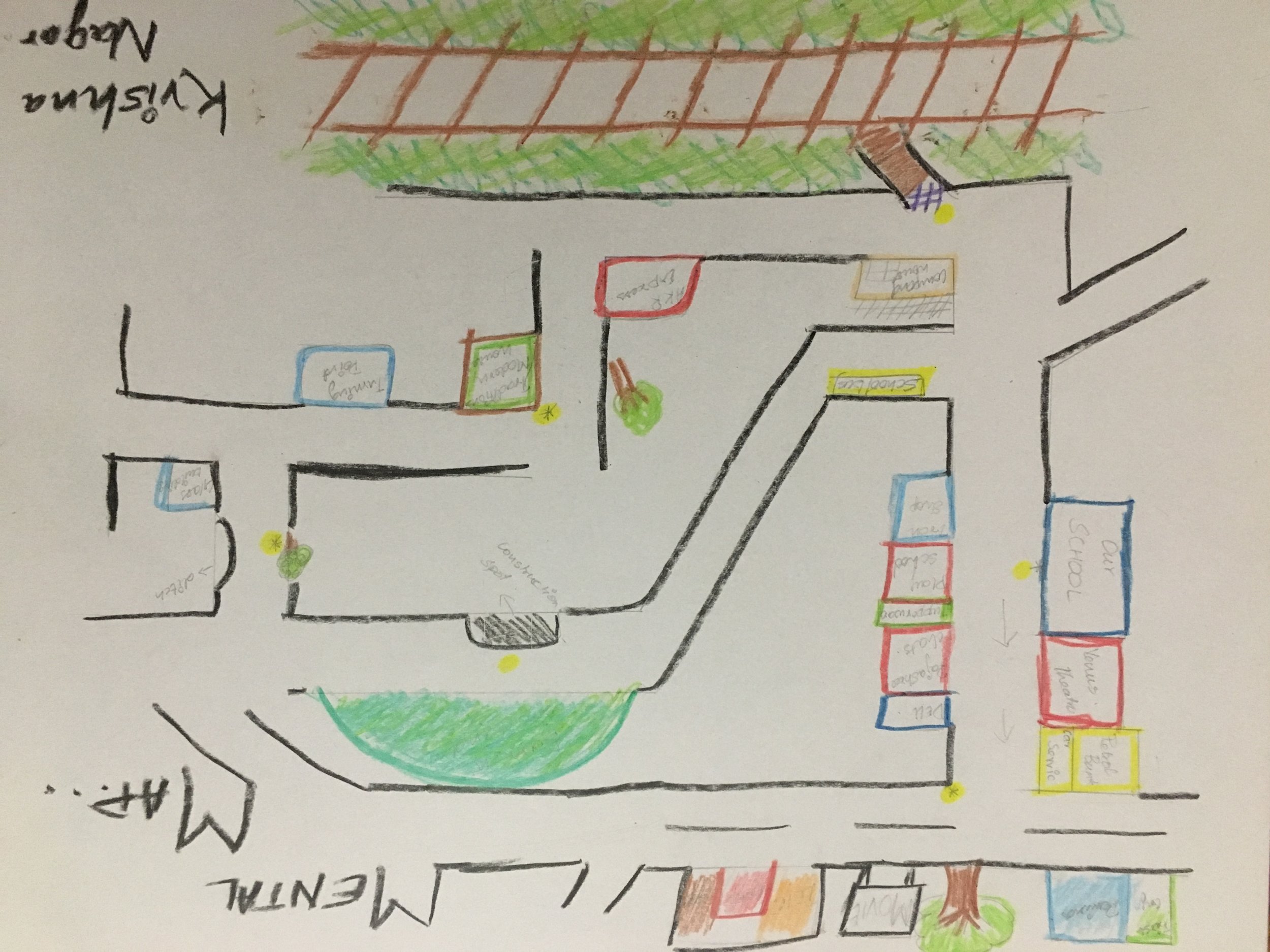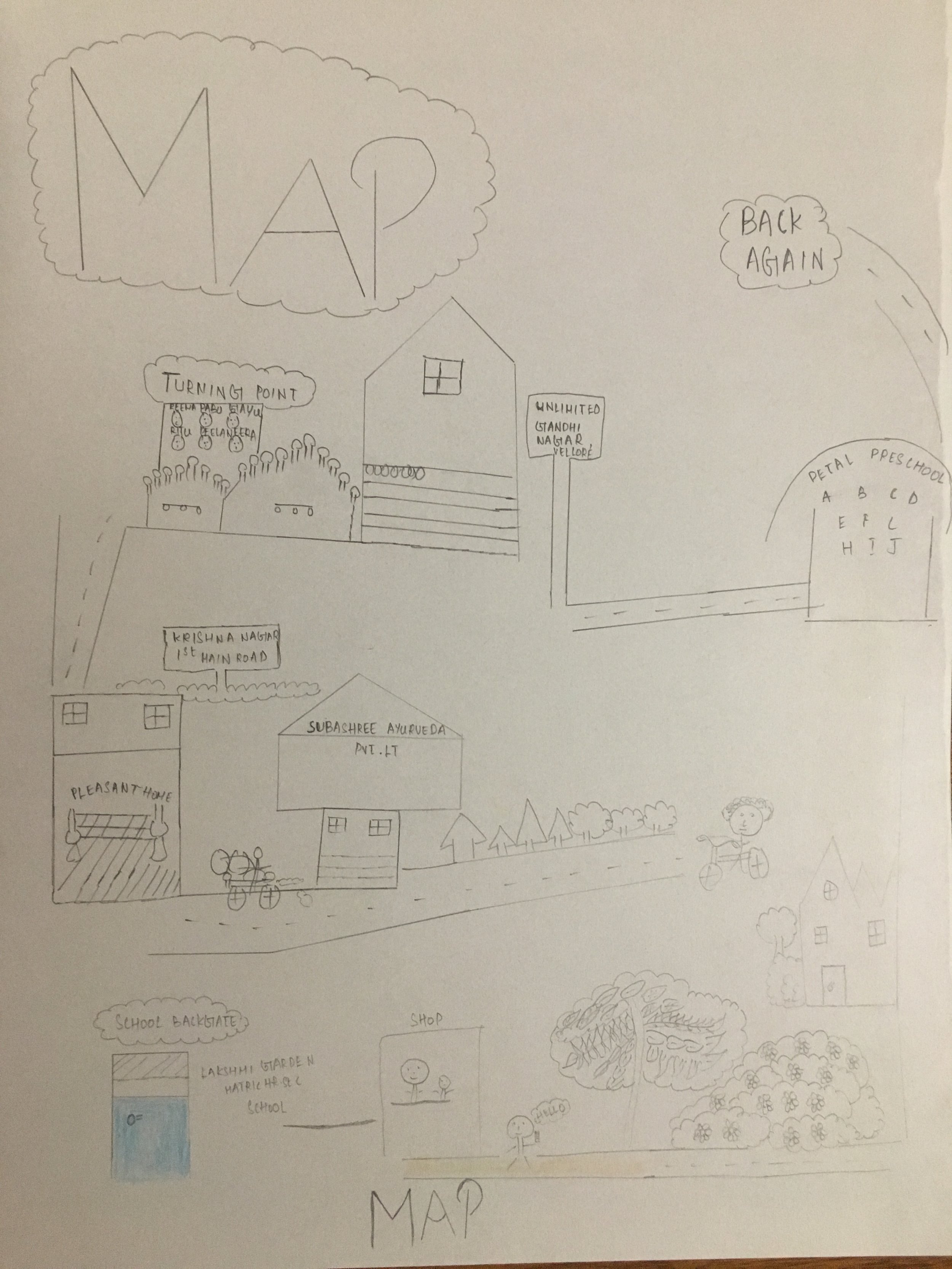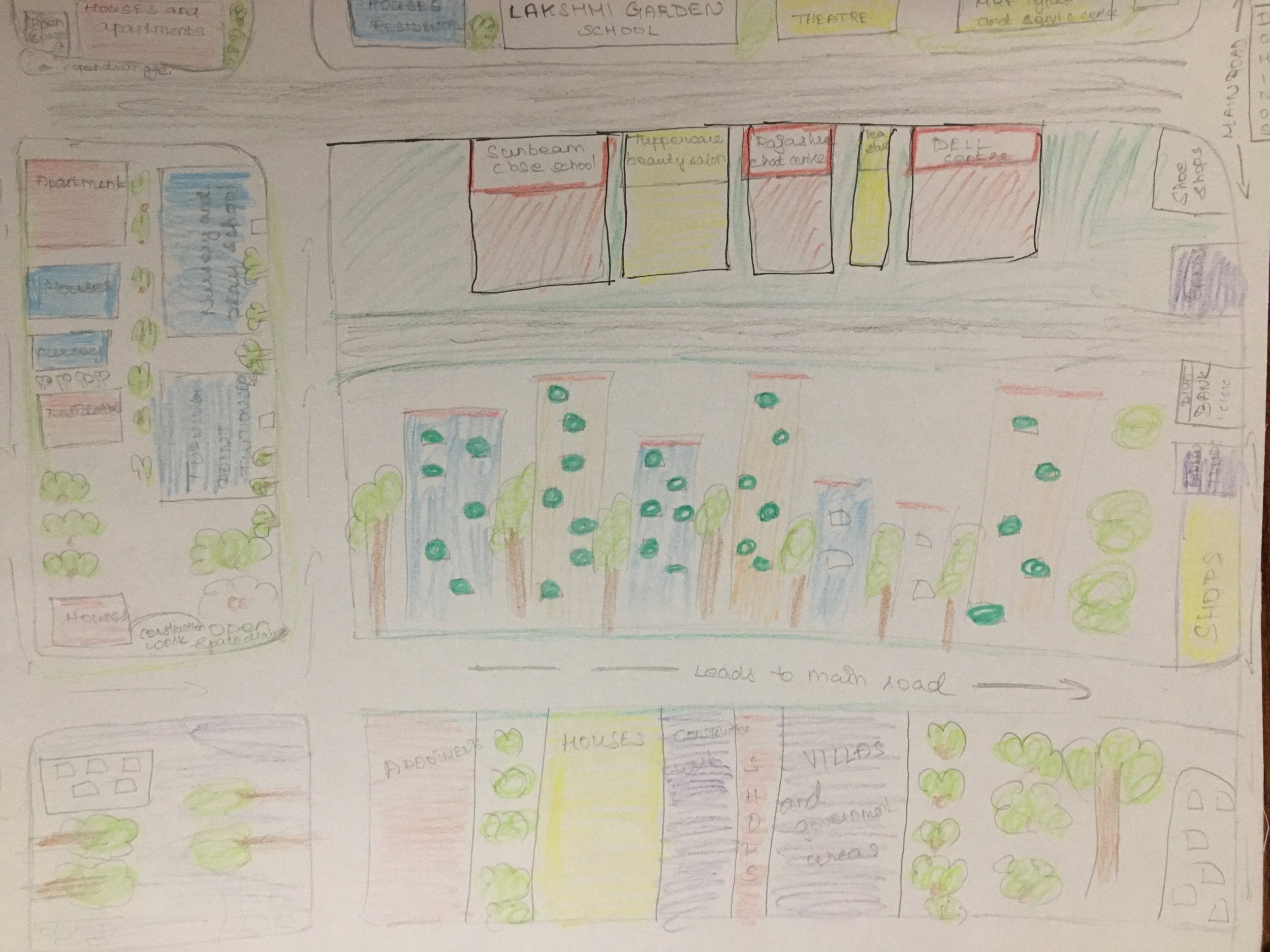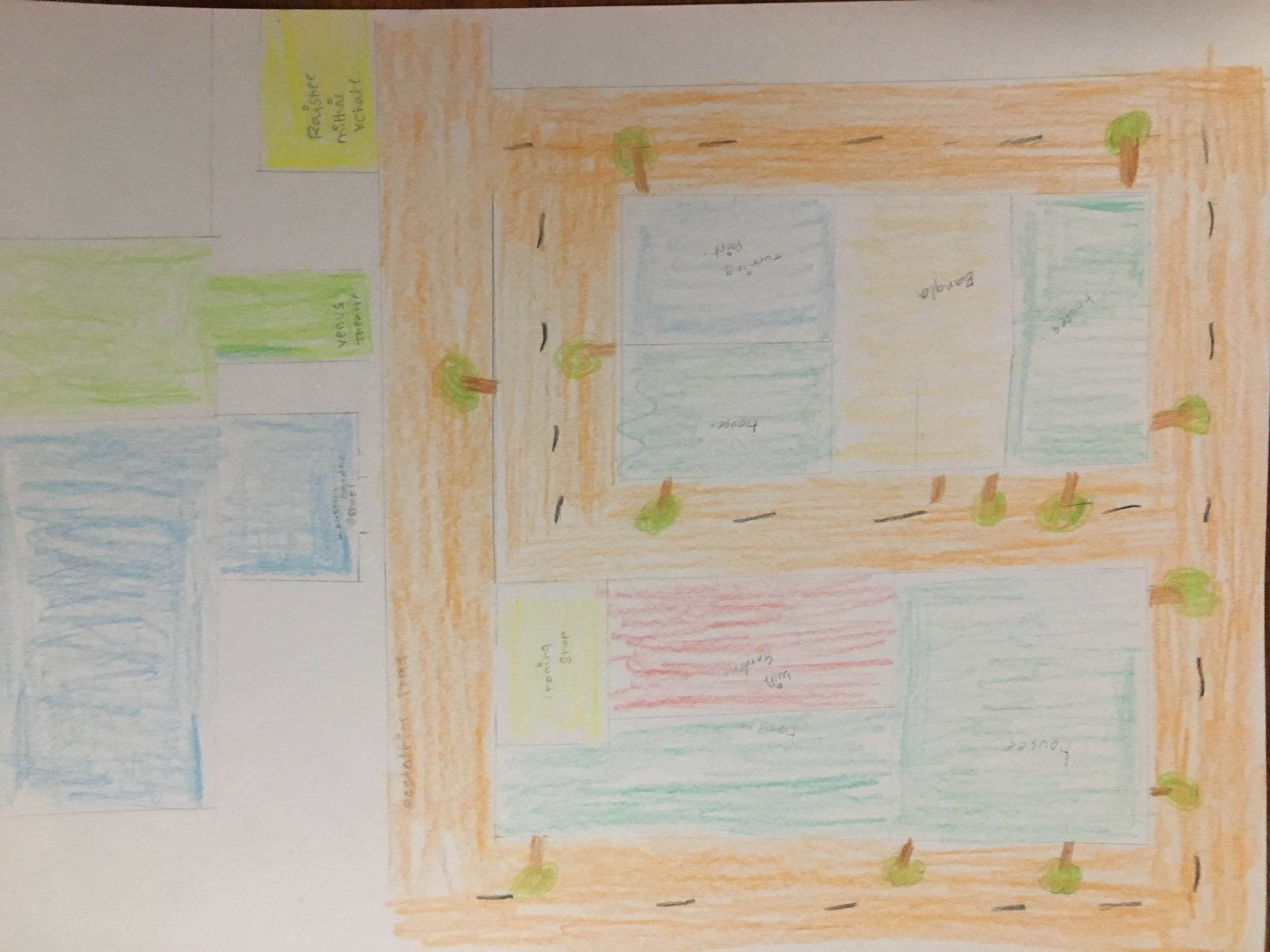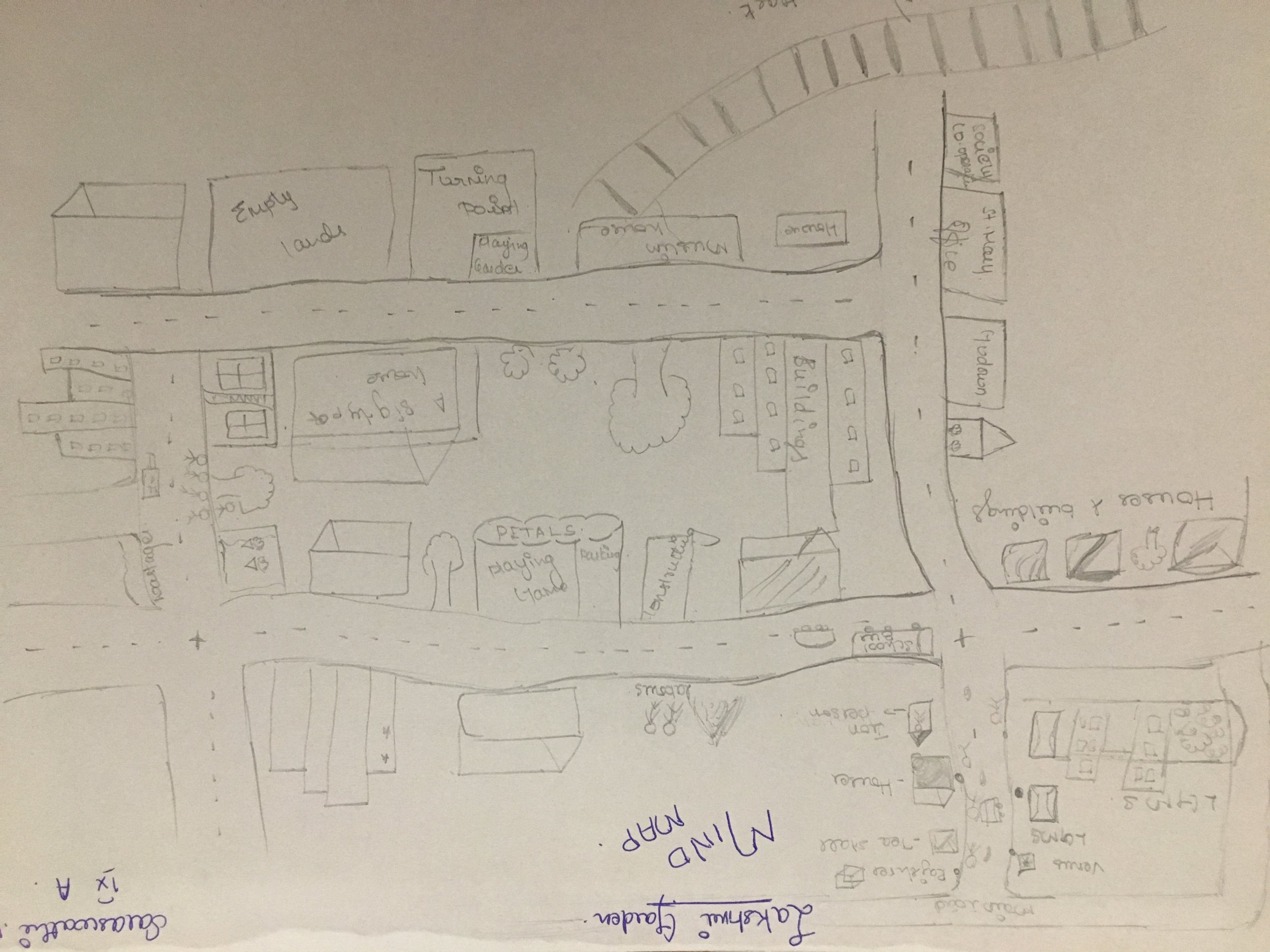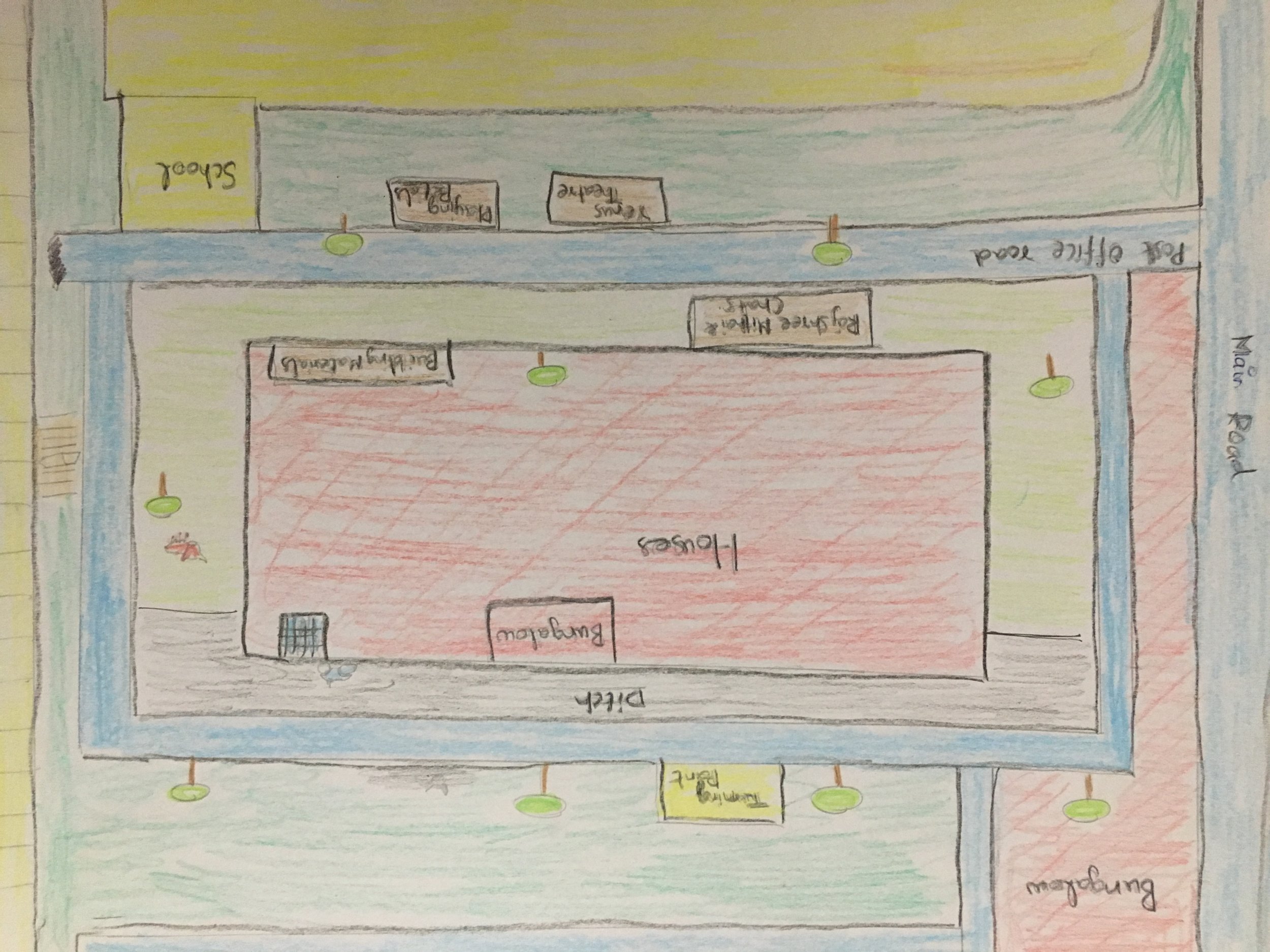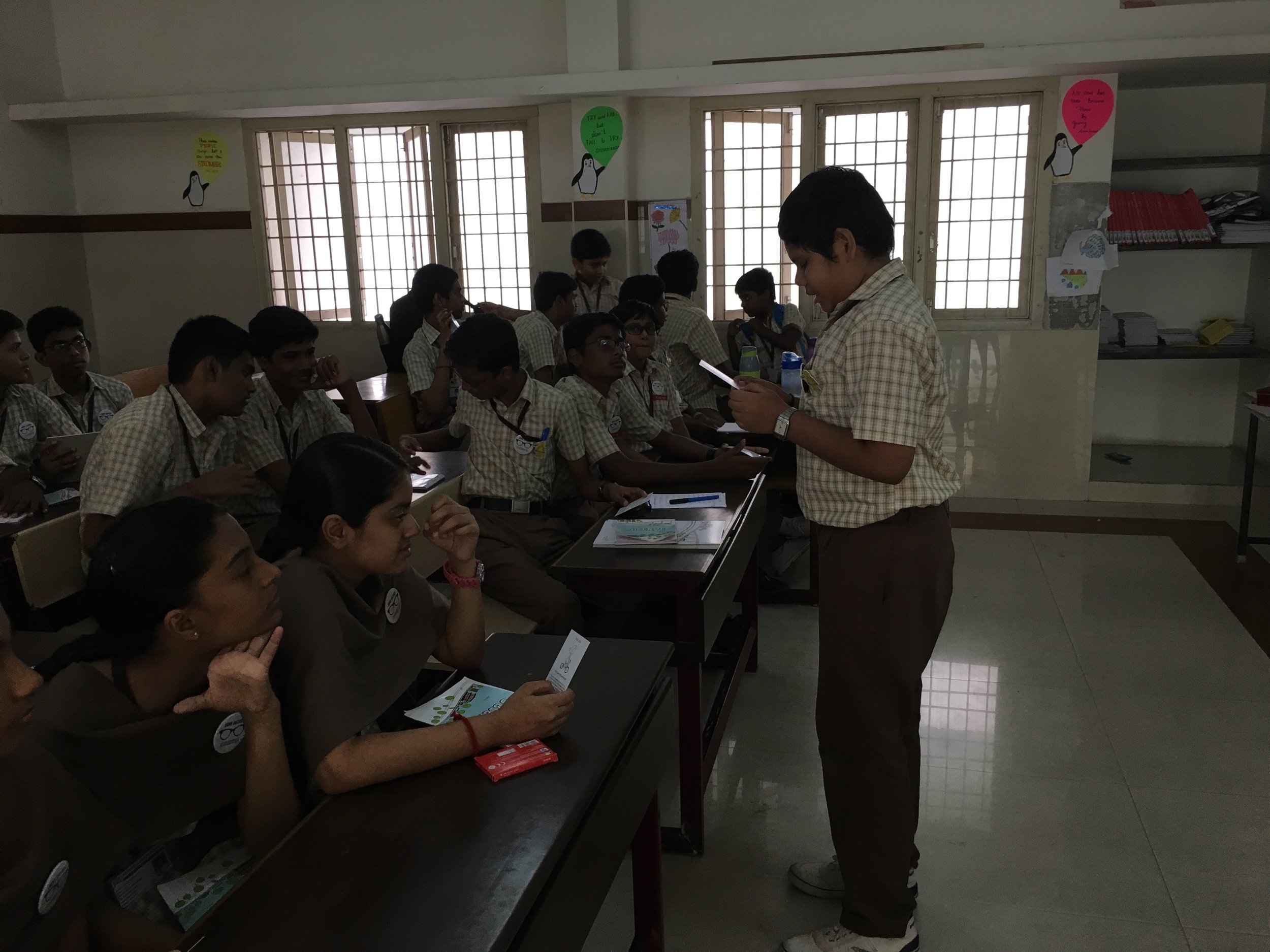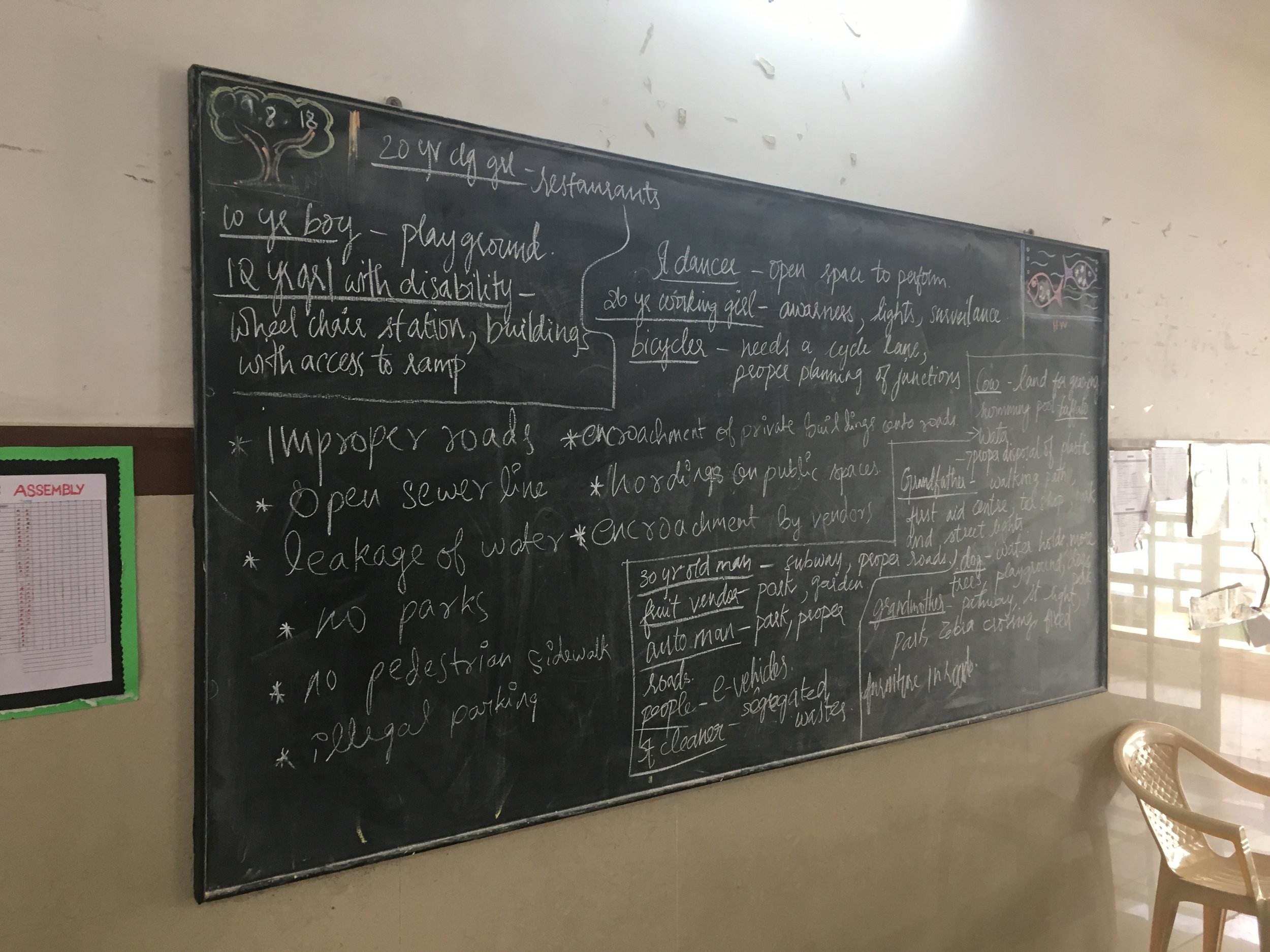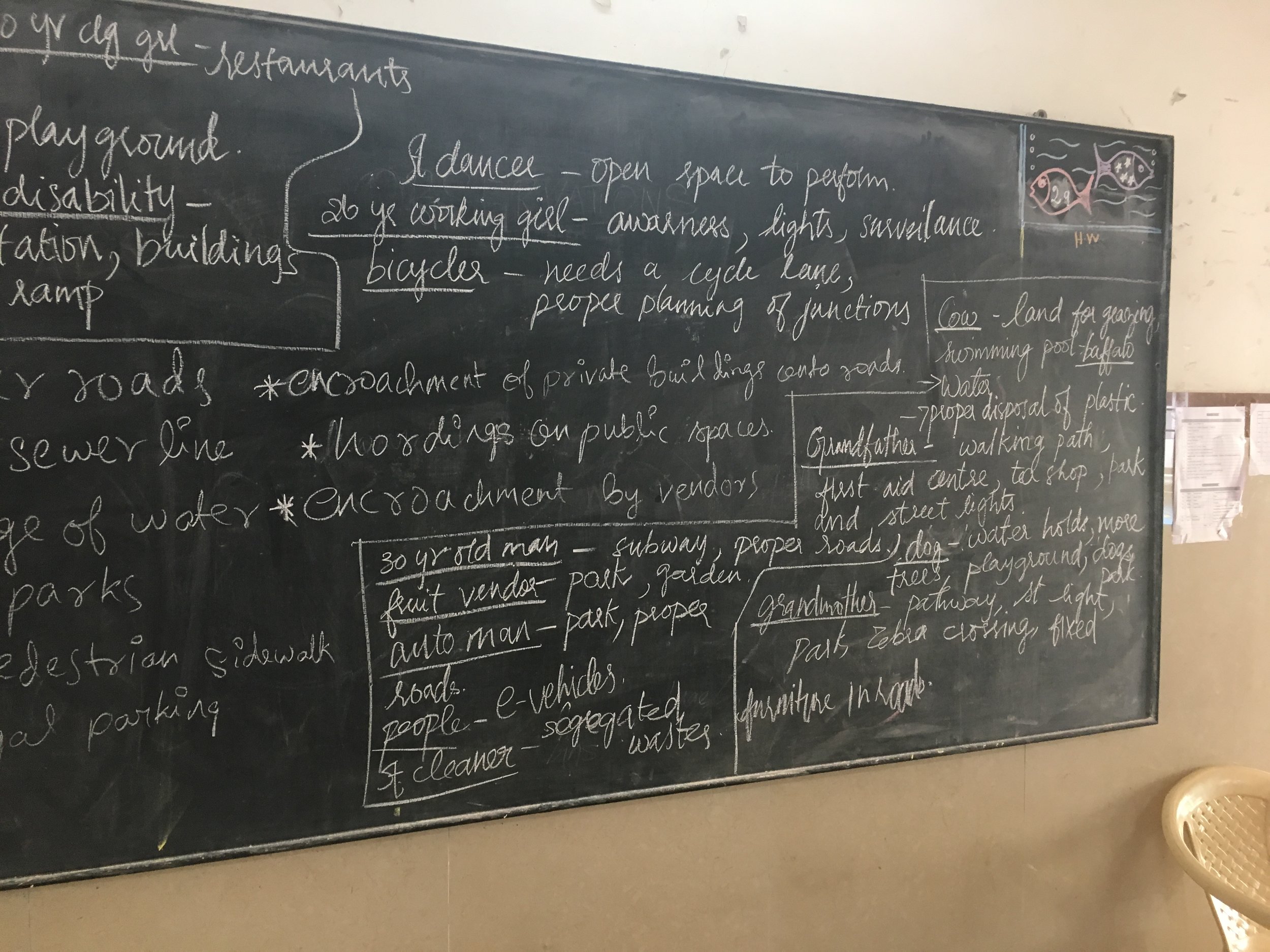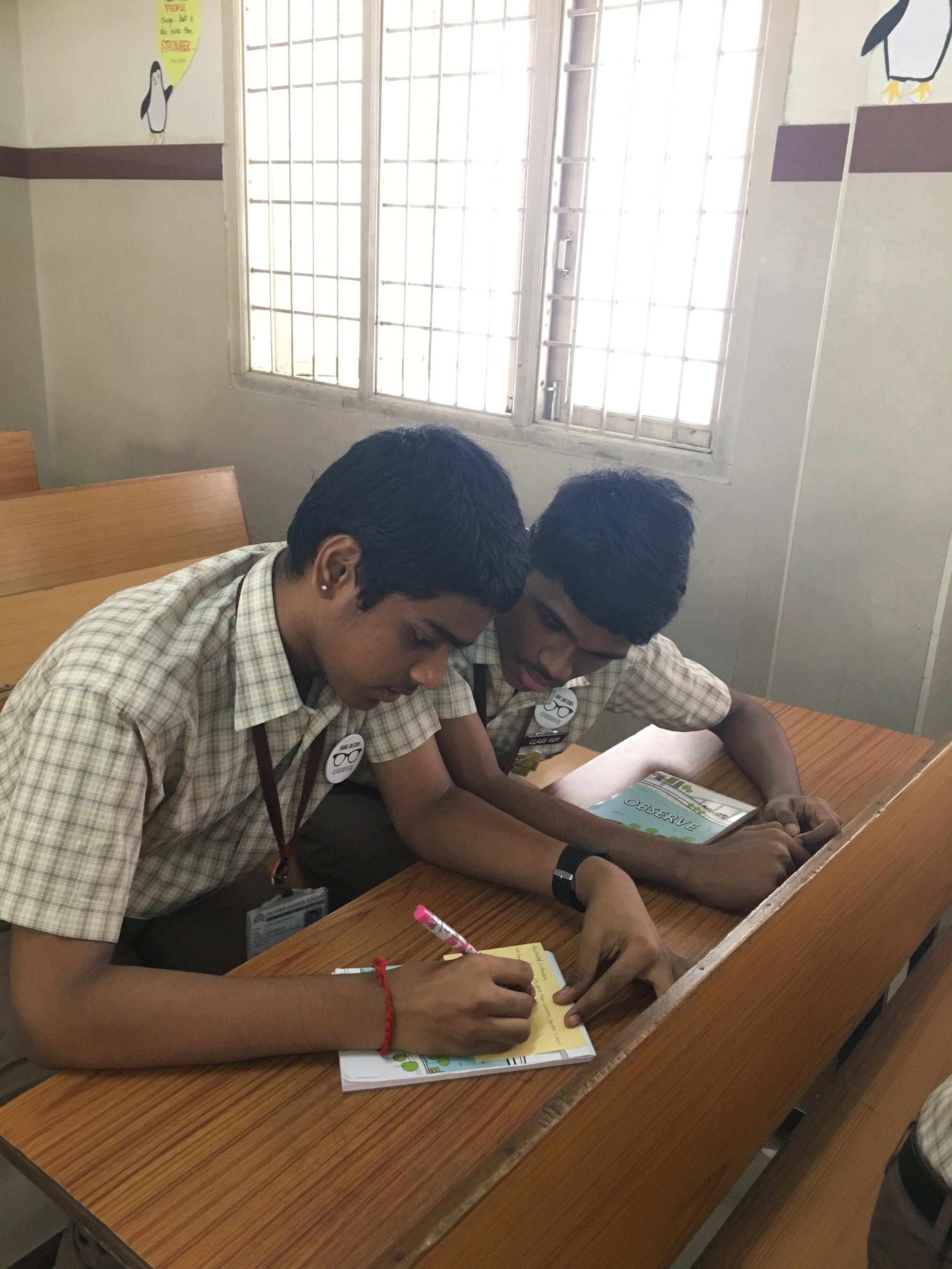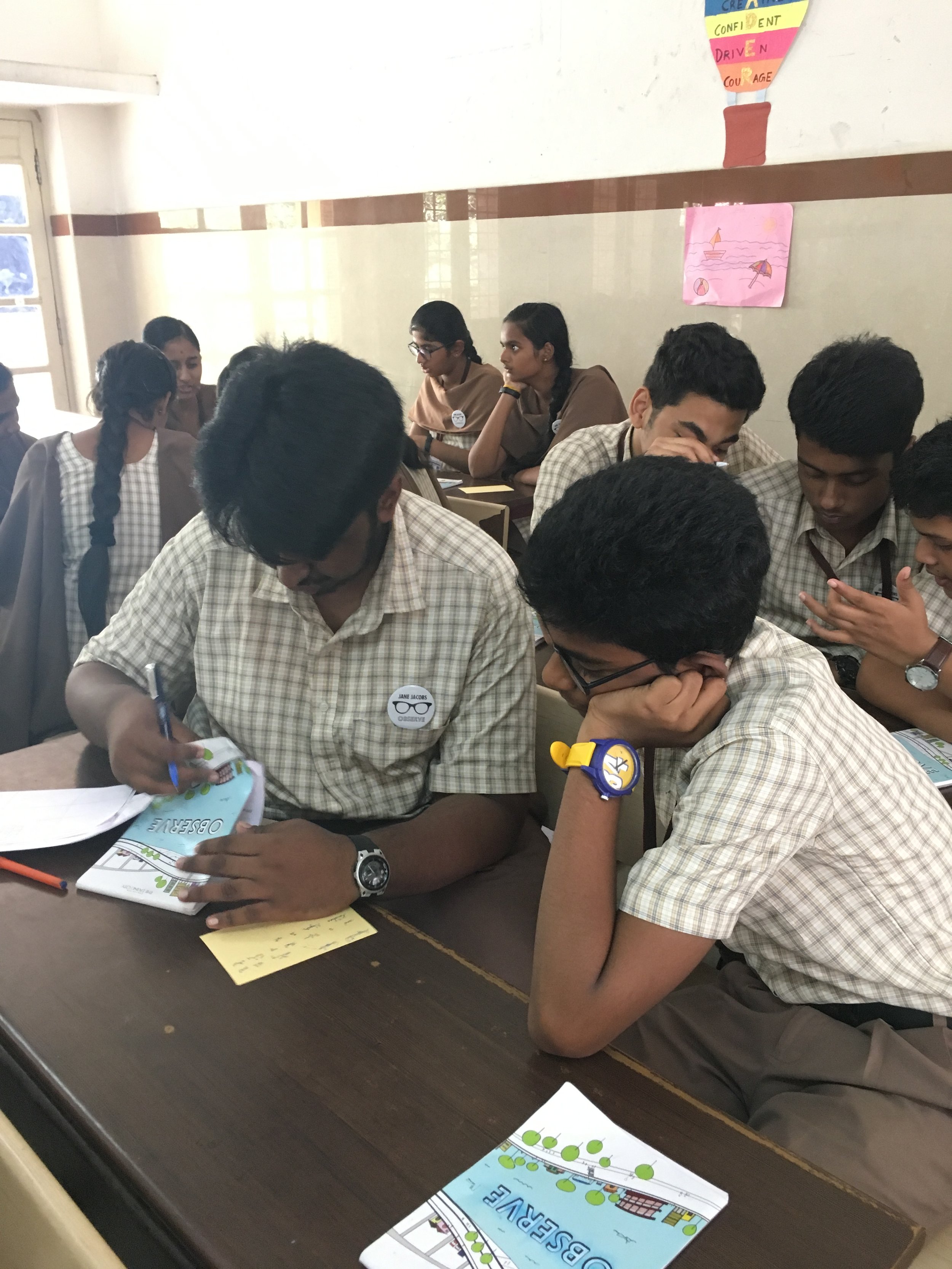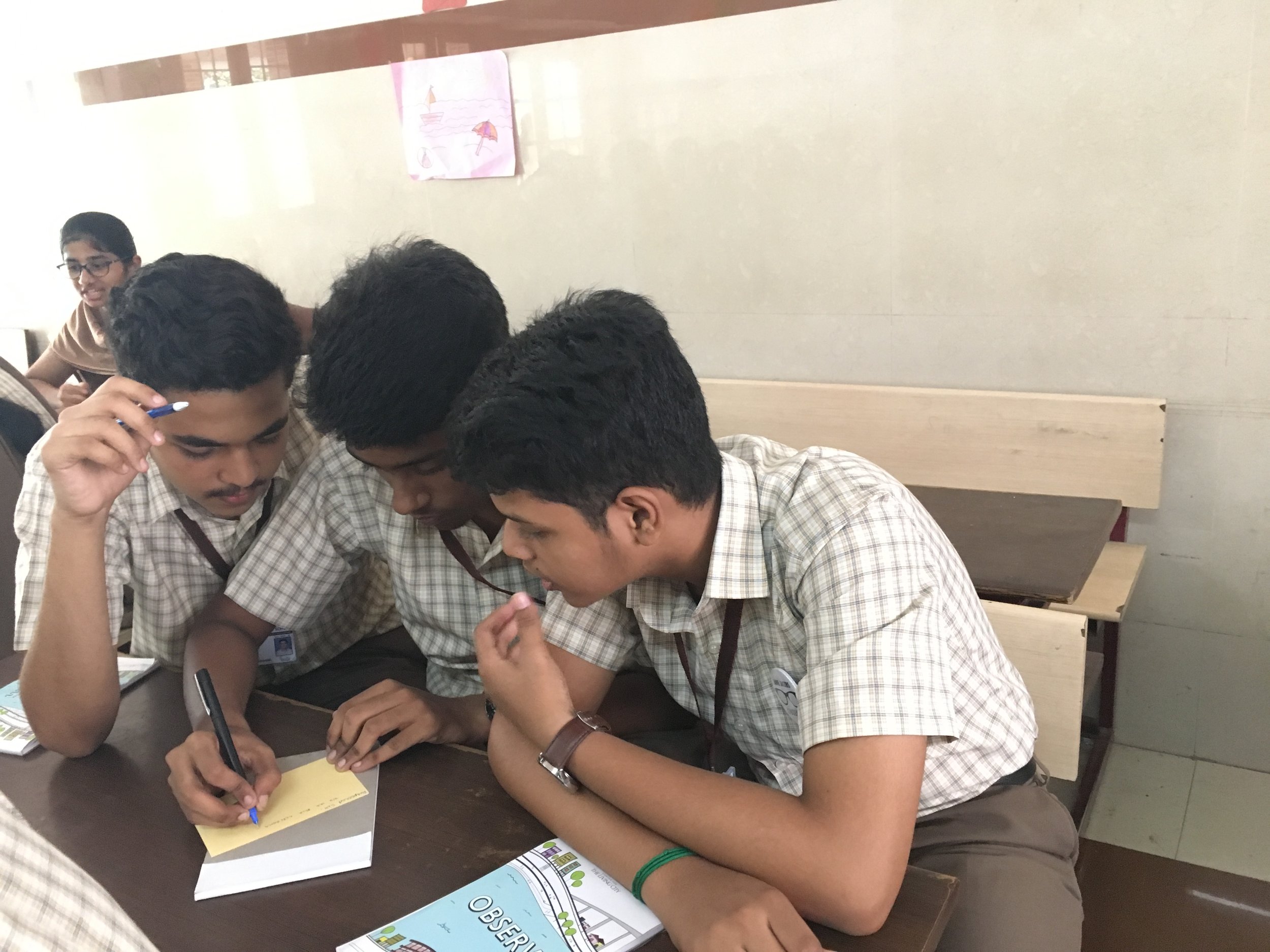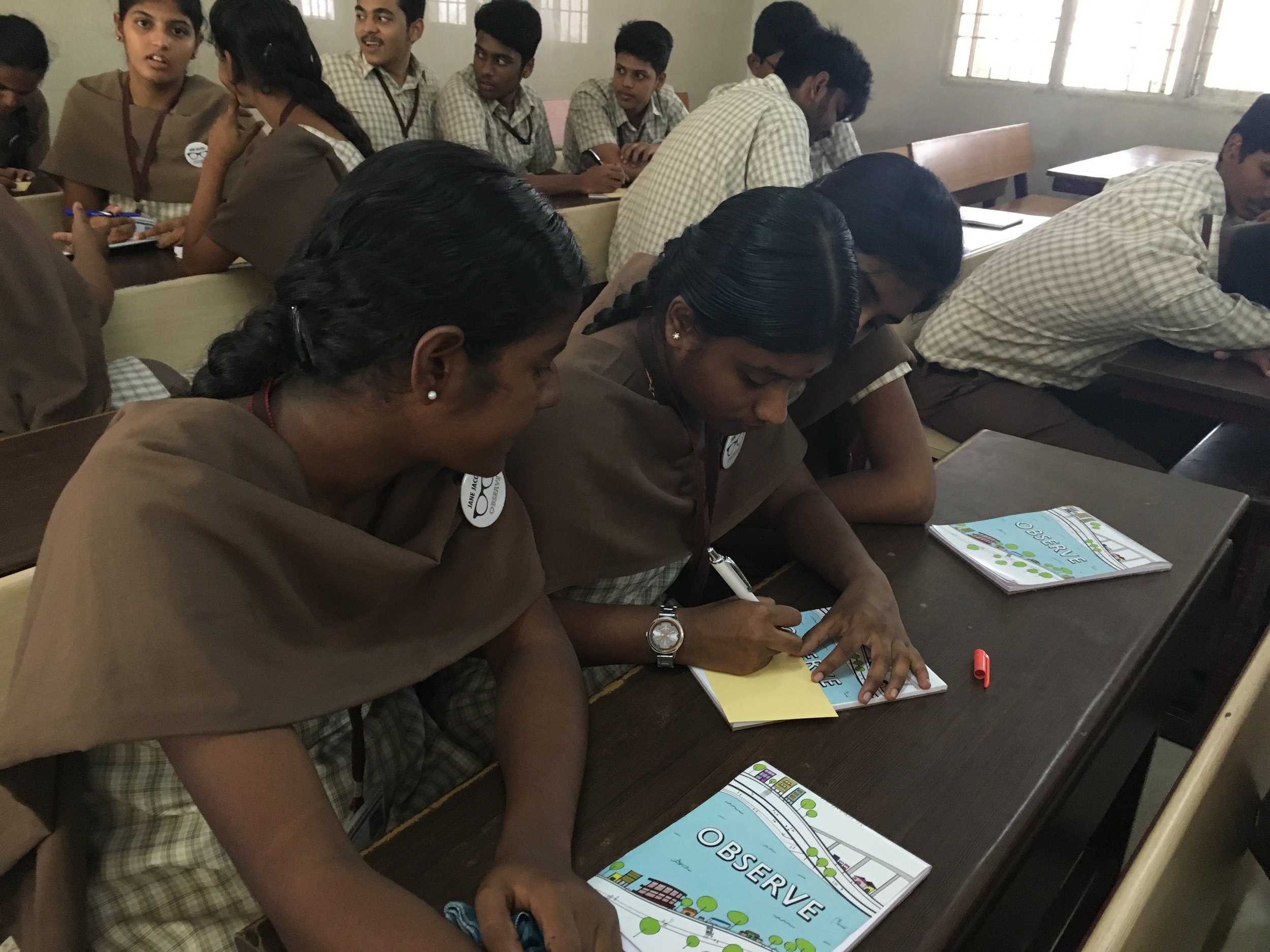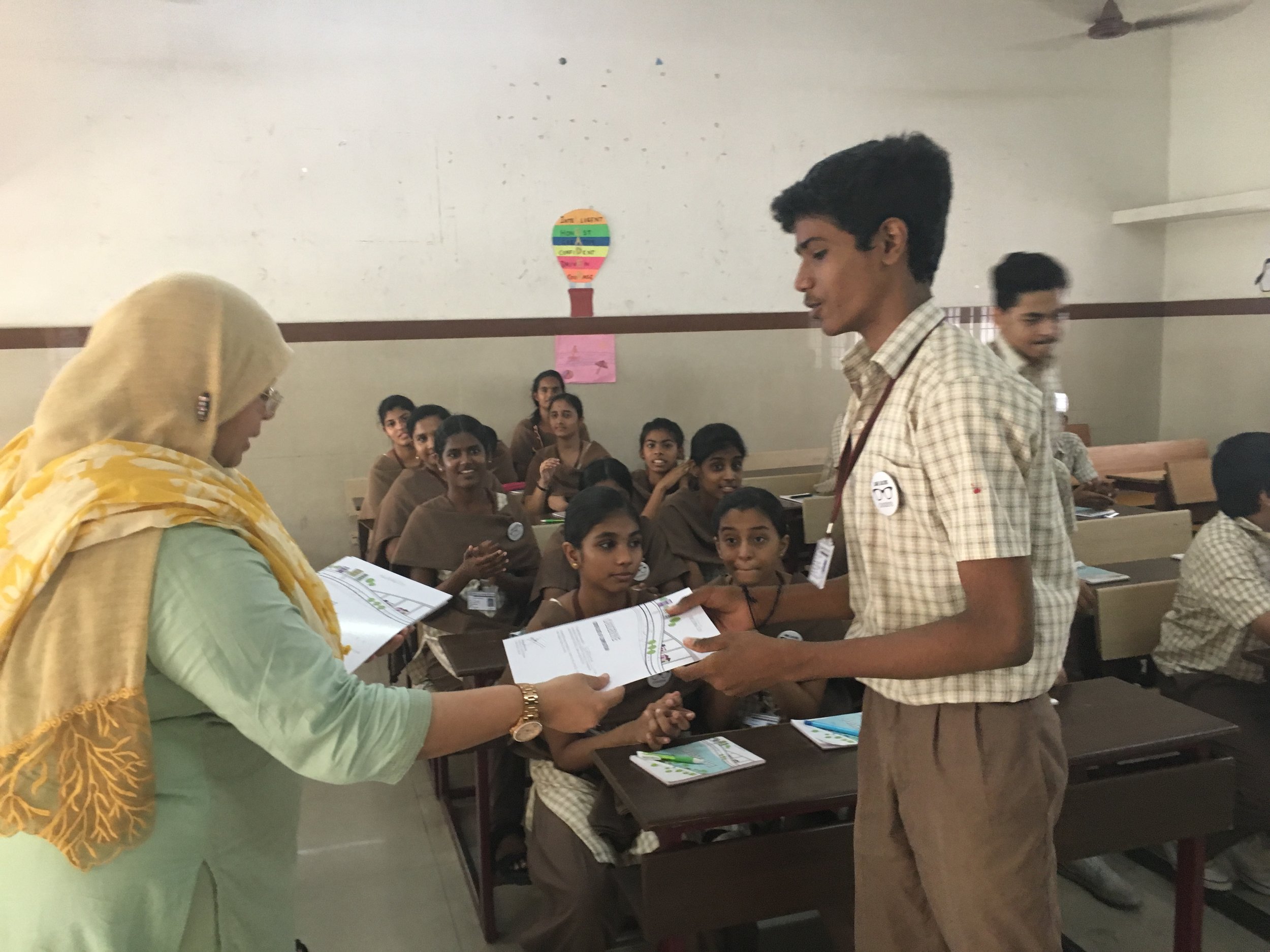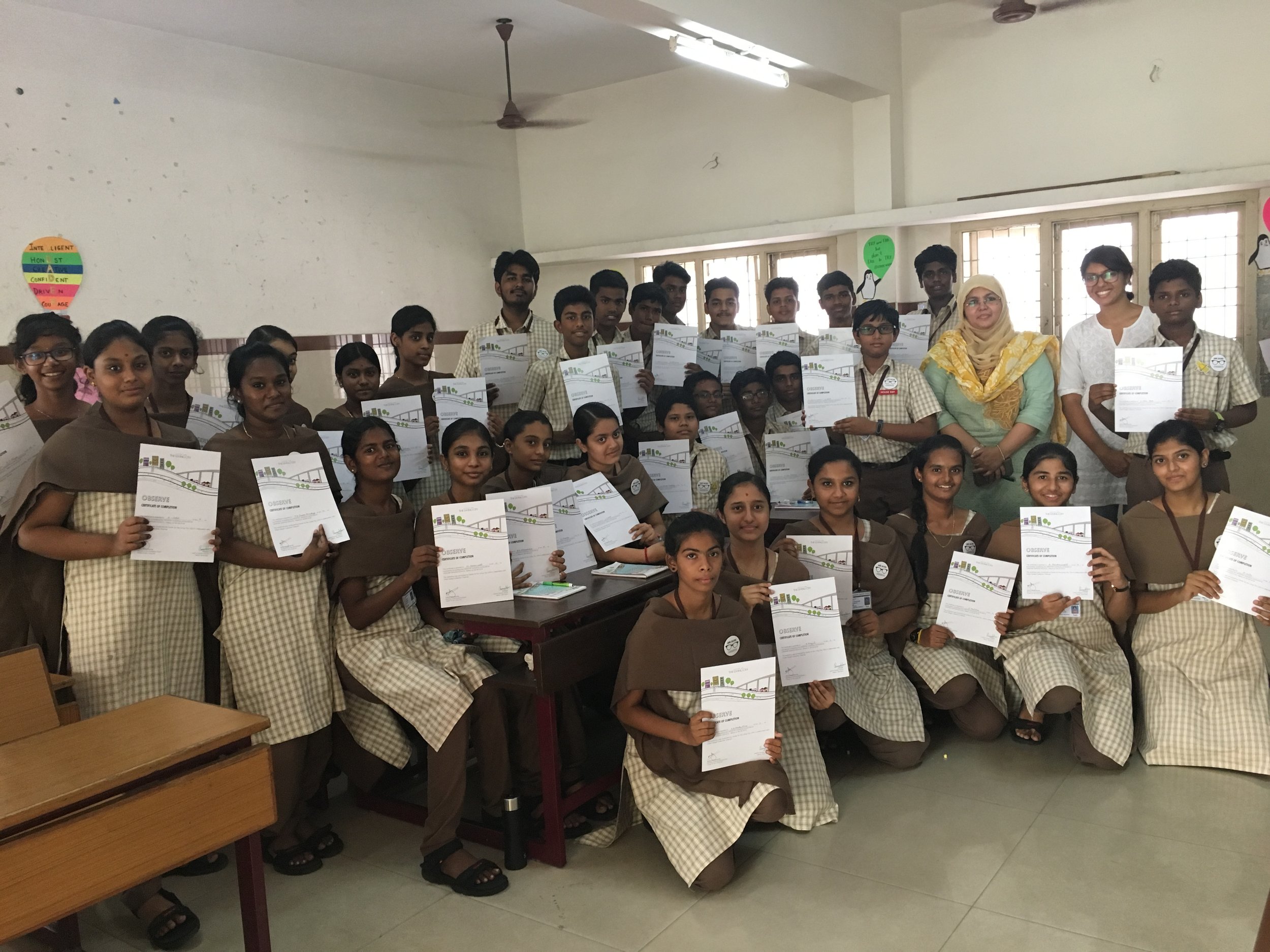It was a nice pleasant cloudy morning when I arrived at Lakshmi Garden School on 31st August 2018. The school was built on a former tobacco factory and I was very excited to find out how they transformed a factory in to a school, or if any of the factory was left at all. I took a stroll around the school to understand its spaces. Though it was not very large, it was well designed with open pockets and parts of the factory adapted into sports facilities.
I was taken to the principal's office and I spent a good twenty minutes giving her an insight into the Observe! Programme and Center for the Living City. Later, she walked me to a classroom on the first floor where a mixed group of students from 9th standard and 10th standard had assembled. I was introduced to the students as their teacher for the day and the principal left the room. Noticing that the students had toughened up on hearing the words teacher, I immediately loosened up the group saying that today was going to nothing like a regular day of school and all we were going to do was chat and have fun.
As the routine goes, we commenced the workshop with a round of introductions from the students and figured out that most of them lived in the north of the city. I gave them a brief of the day and we went on to the first exercise of the day.
The Jane(u) Cards and Jane Jigsaw
As soon as I said I would need 12 volunteers for this exercise, an enthusiastic bunch organised themselves and came to the front of the classroom. I handed the cards and the first person started reading Janu’s story. The students listened to each card and participated actively in discussions that followed the questions at the end of each card.
When we were discussing about the modes of transport in a city, many students voiced their opinion that they liked to travel in a car because it kept them away from pollution and it was a convenient mode of transport. As we took the discussion further, they were quick to realise that cars are not a very sustainable mode of transport for the city and we need to look at making public transport more efficient. While many liked cycling or walk, there are no (I’m talking ZERO) pedestrian pathways or cycle paths in the city and so they thought these modes were not very safe. However, a few of them had travelled to cities where pedestrian was priority and understood the need for pedestrian paths.
“I have been to Singapore and the footpath was very wide there. Around four people could fit in it if they stood in a line. It made walking a pleasant experience for me and I think I would walk more if we had paths like that here. Oh! Also I would like for these paths to be shaded with trees” - participant
The participants also were very excited about the idea of silambattam (an indian martial art form) on the street. Jane Jacobs’s talks about active streetlife as a ballet and somehow in India you don’t see too much of a ballet. You see people negotiating for spaces between all the traffic, the shops, the bikes, the cycles, the cars, the cows, the dogs, the garbage and the honking- it is almost like martial arts, where you try to dodge every blow. Hence we adapted Ballet of the sidewalk to Silambattam of the streets.
“Gandhi road (a shopping street in Vellore) is a very busy road and I really like it. It is always very busy and bustling with activity. So many different things to eat and shop and look at. It is like you saw a theatre performance.” - participant
They also had a few inhibitions about informal settlements and that they were unsafe. Through a more in depth discussion, the participants understood that the city is for everyone and it is the city’s responsibility to ensure everyone a decent place to stay and provide good services.
We went on to discuss about more topics that ranged from how to do decide what project is relevant for a city to how to execute projects in cities. At the end of the cards and finding out about Janu’s story, the students firmly believed that it was a fictitious story and there was noone who had taken on big city officials like she had. They were surprised when I told them that this was actually the story of Jane Jacobs the journalist-urbanist from The United States of America.
They were excited to put the jigsaw together that forms the face of Jane Jacobs. Somehow they were all very enthused by Jane’s string of pearls when we were suddenly bombarded by 30-40 young children running into our classroom. Turns out we were sitting in the 4th standard class room the students of 4th standard wanted their class back and ran into the class ready to protest. Though I would appreciate their sense of ownership of the class, we have to send them elsewhere to get on with our workshop.
Observe with your Five Senses
The school was situated at the junction of a quiet residential area called Krishnanagar and a busy arterial road. The participants and I were to go on a walk in this neighbourhood to observe this neighbourhood and to see if the concepts we learned in the morning were used in this neighbourhood. I distributed the Five Senses notepad to the participants and handed them the Jane Jacobs badges. They proudly put on their badges, took their notepads and walked down the stairs and through the back gate of the school onto the streets of Krishnanagar.
We took a walk through the quiet streets of Krishnanagar and stopped at a the end of road that led to a railway crossing. The railway line was bordered with a stone fence indicating that people were not to cross it. However, people had knocked off a few stones and were crossing the railway line to a street across the line. We identified this as a desire line in the neighbourhood. We discussed about how to decide between safety rules for the citizens of the city and providing services where needed.
“There is a secure designated crossing point around 100 meters from here, but nobody uses it because when you cross it you cannot go to any significant street” - participant
We then walked around the area and discussed about the design of compound walls in the area and how some houses had fences that gave the street a welcome warm feeling and the others in contrast had high walls that we felt excluding.
We then walked past several empty plots of land that have been in a state of overgrown wilderness for over fifteen years. The participants discussed ideas of how it could be transformed into a neighbourhood park. Towards the end of the walk, we stopped at the arterial main road to observe it.
On the way back, the participants paired up in twos and took turns closing their eyes while walking back to school. This was an experiment to experience how a blind person would navigate the streets in this neighbourhood.
Mental Mapping
We were back in school and after escorting away the 4th standard students who had reoccupied the classroom, the participants sat down to draw a mental map of the neighbourhood and the interesting points that they noticed about it.
With the art paper, colours and pencils provided to them, they came up with exciting maps that showcased their observations during the walk. Some of the repeated observations were the lack of footpaths, encroachment of public spaces, railway crossing and unsafe junctions for crossing.
We noted these down on the class board as issues that participants noticed during the walk.
Stakeholder role play game
The participants were handed stakeholder role play games where each participant assumed the role of the character jotted down in the card. As the cards were passed around there were several giggles heard from the crowd. They seem very amused by the idea that they could be somebody else for the exercise.
In a circle we went around reading the roles and what each of those characters wanted changed in Krishnanagar to better one’s own life. There were very interesting results from this exercise - some wanted more physical implications like parks, playgrounds, footpaths and proper pedestrian crossing while others went beyond the physical realm in wanting increased awareness, better research into less polluting vehicles, etc.
Letter to the city officials
After this exercise, I put forth the following question to the students - Now that you know what needs to be changed, what are you going to do about it? There was a mixed response from the group where some said they wouldn't be able to do anything and where some said they would mobilize other groups and go fix these problems on the ground. Towards the end of this discussion, I handed out postcards to these students and told them that as a first step write to the councillor (city official in charge of the neighbourhood) and follow up on it.
The participants then excitedly wrote down their desires of change in the postcards and were extremely thrilled that the councillor would be reading it and this was their window of opportunity to make a difference in their school’s neighbourhood.
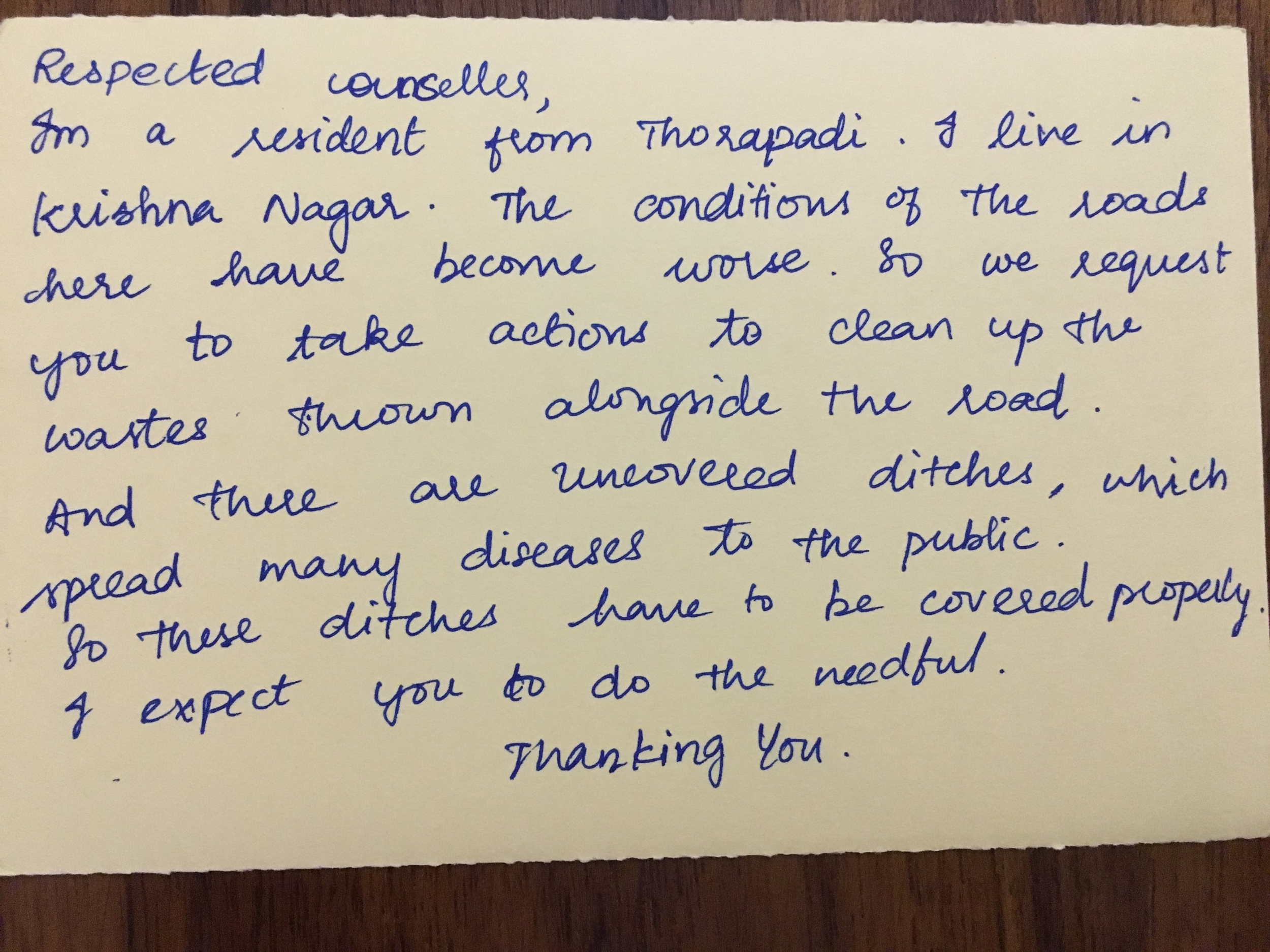
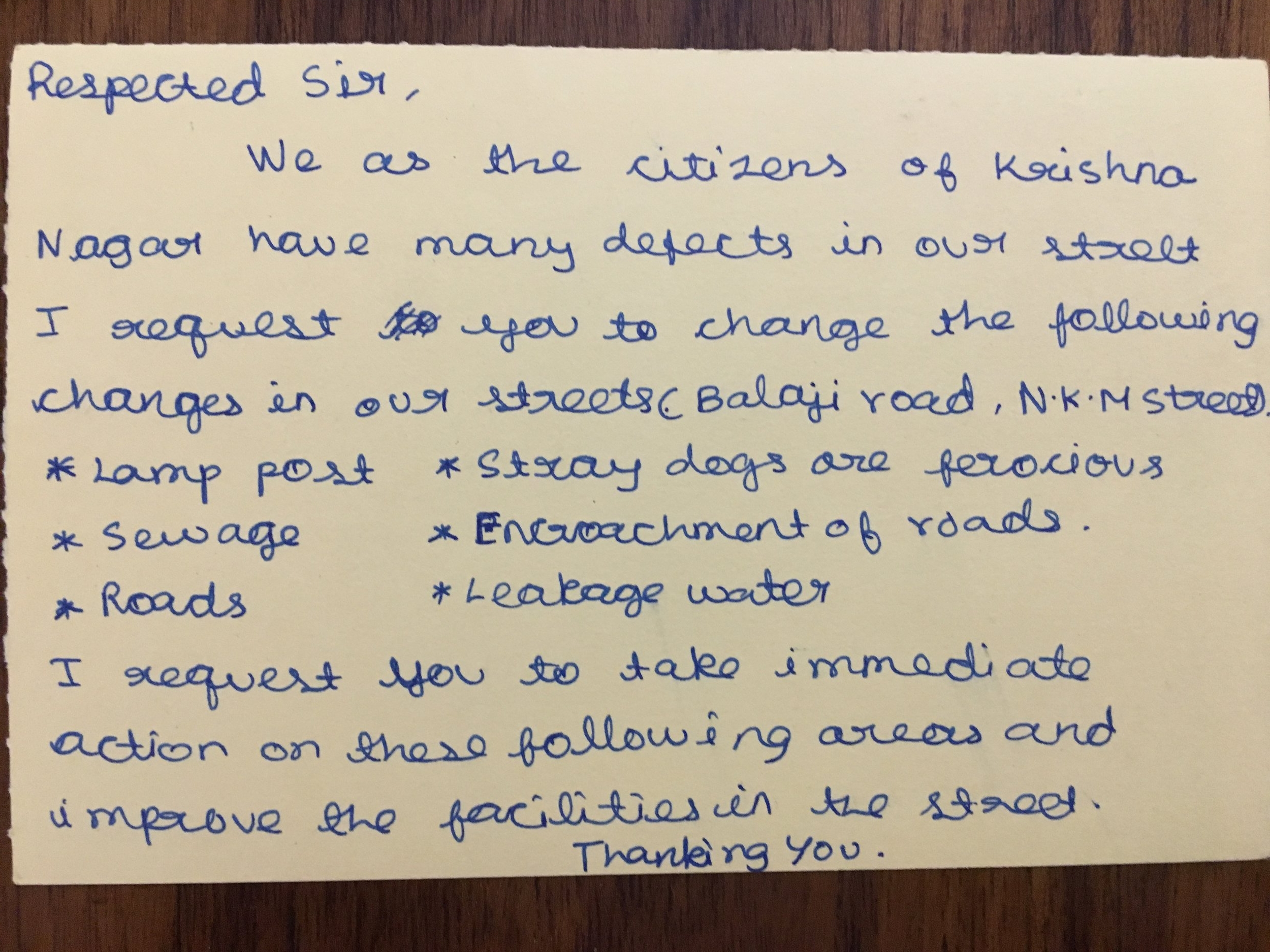
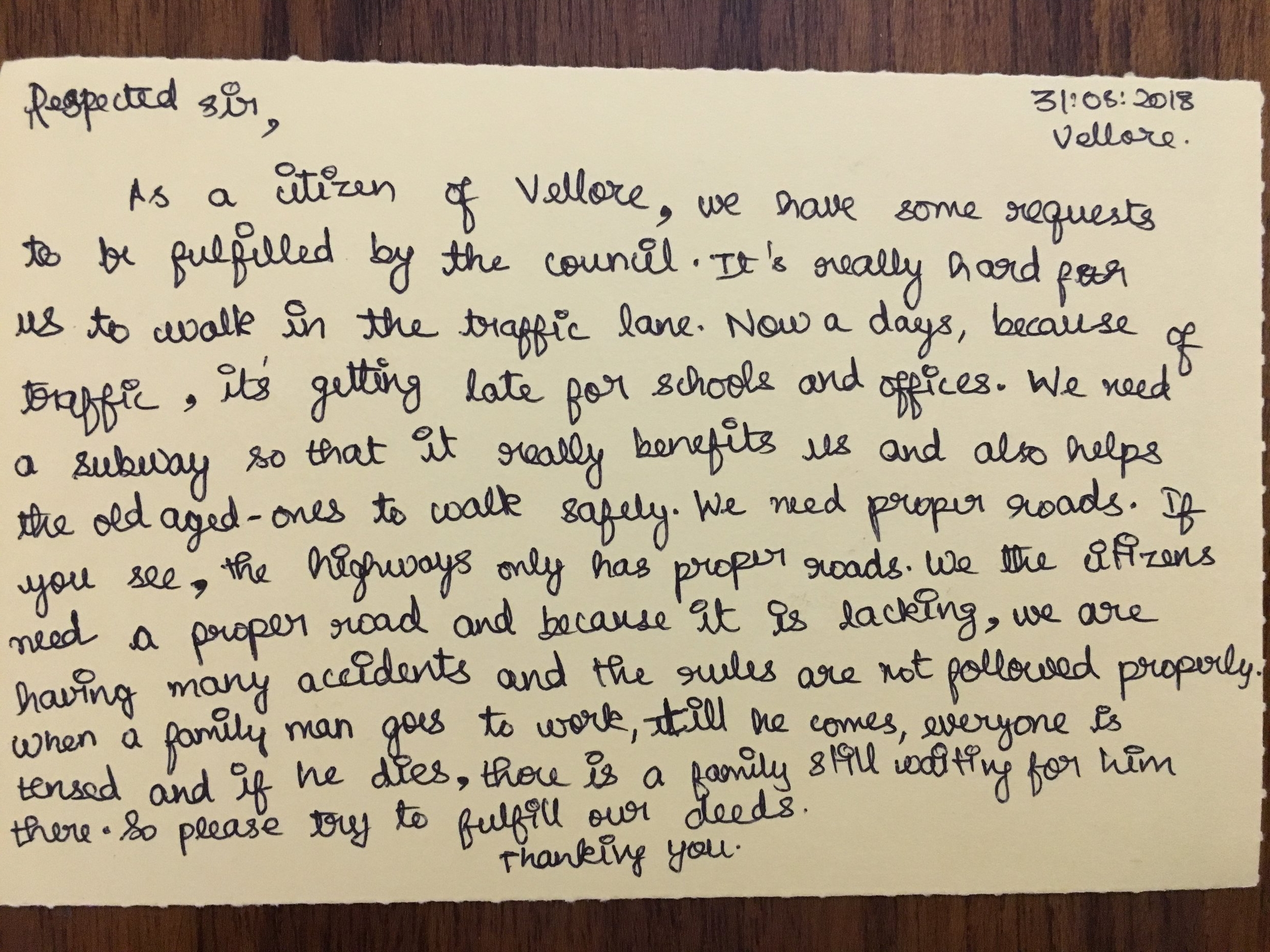
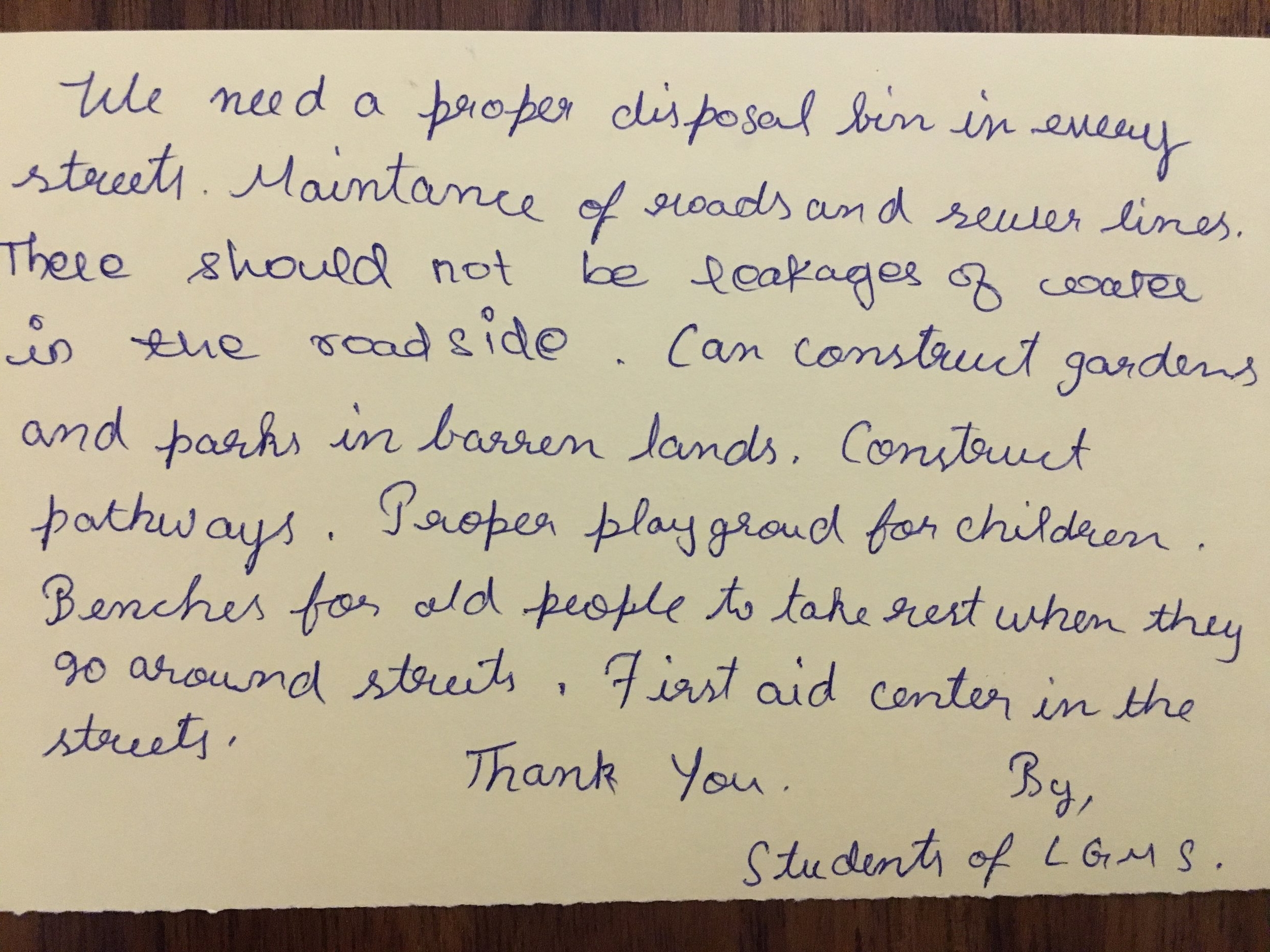
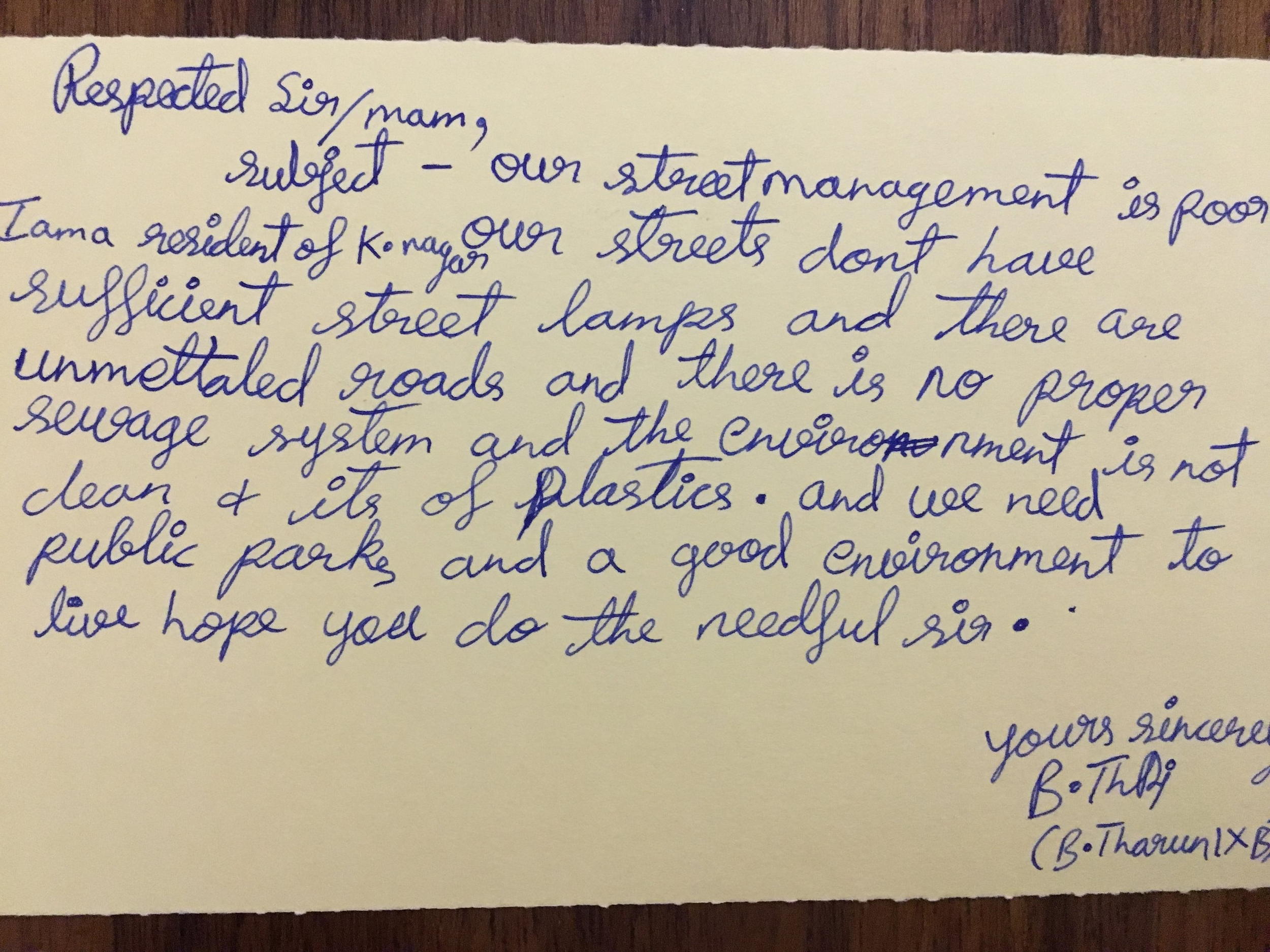
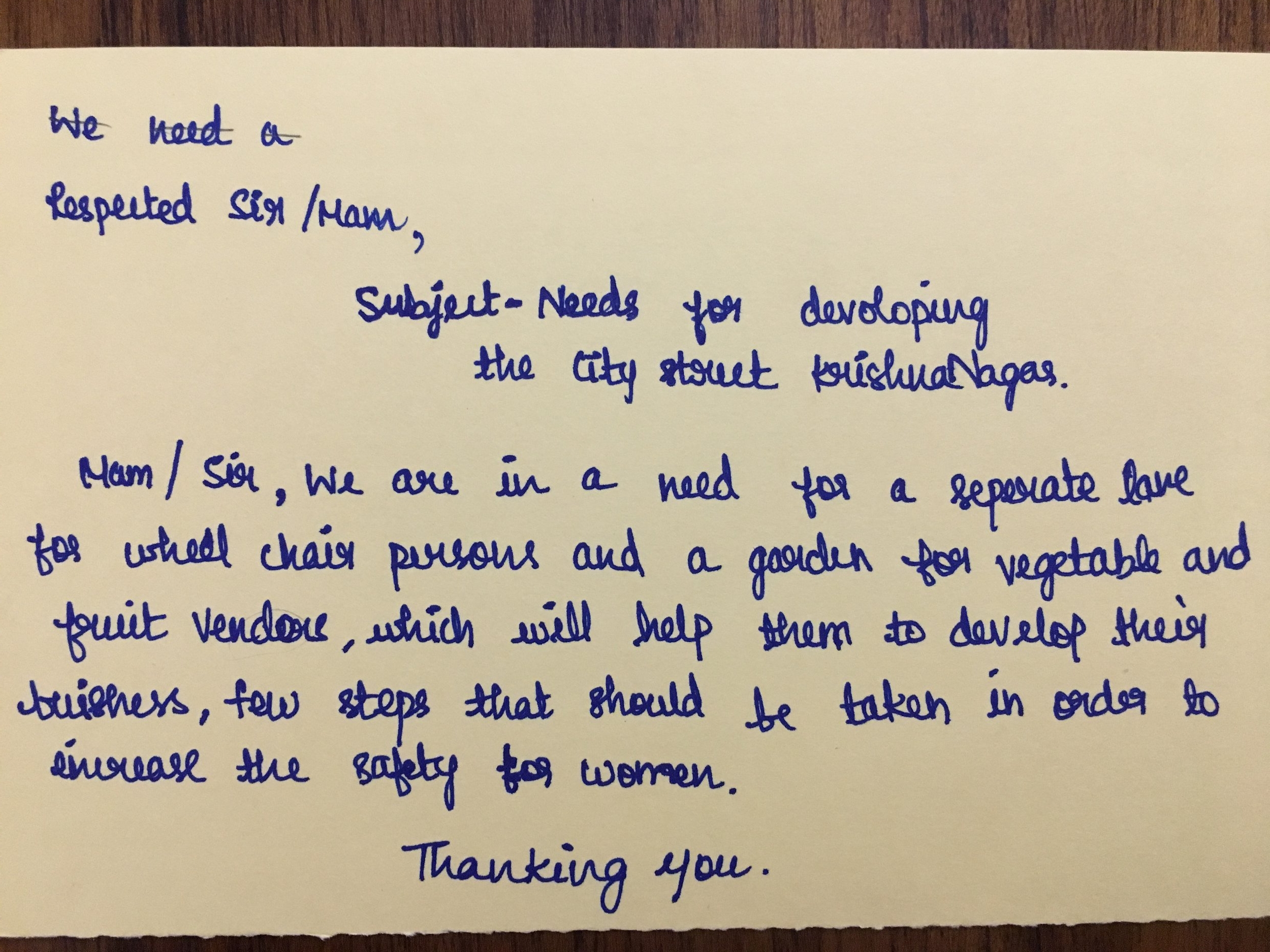
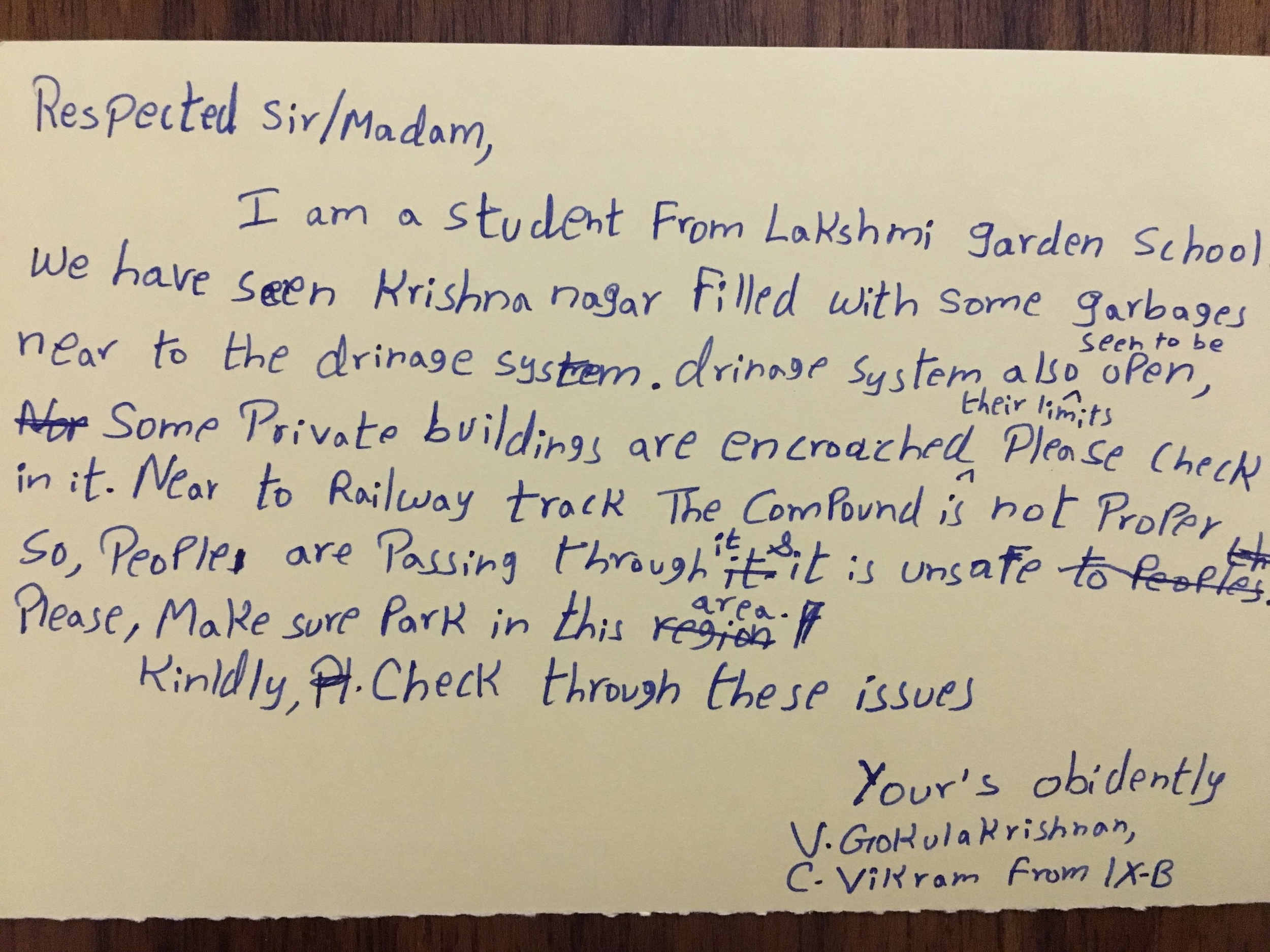

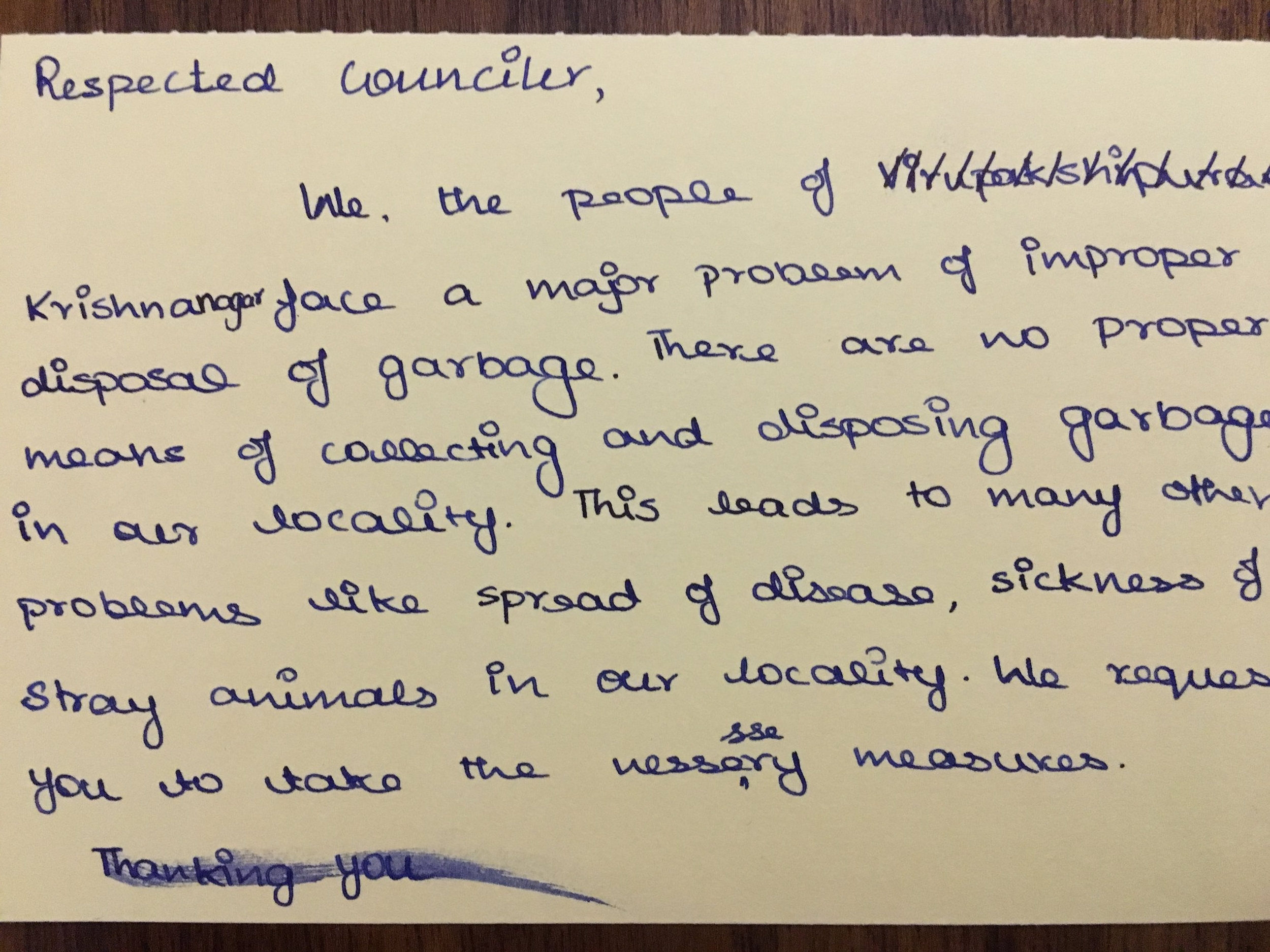
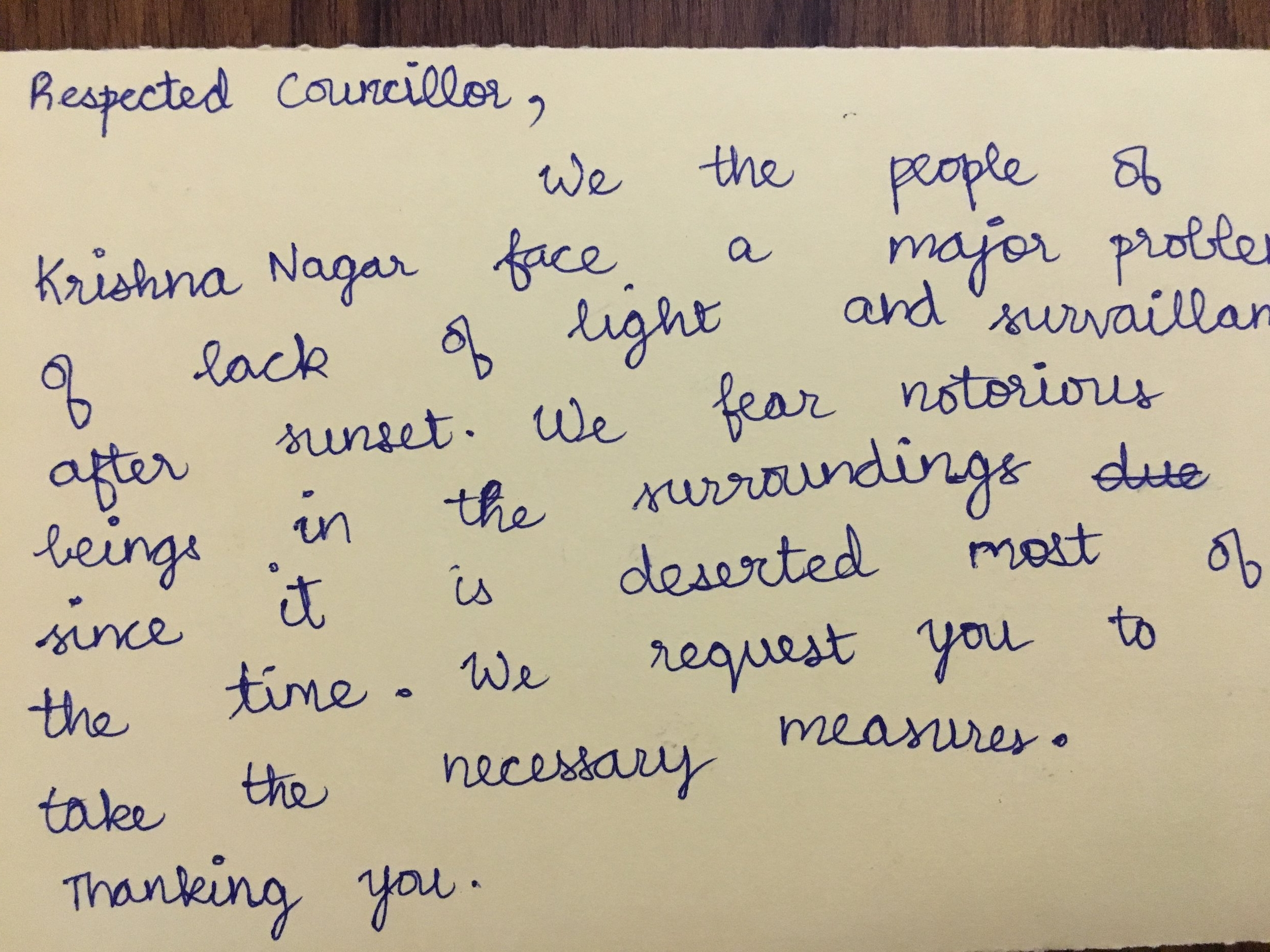
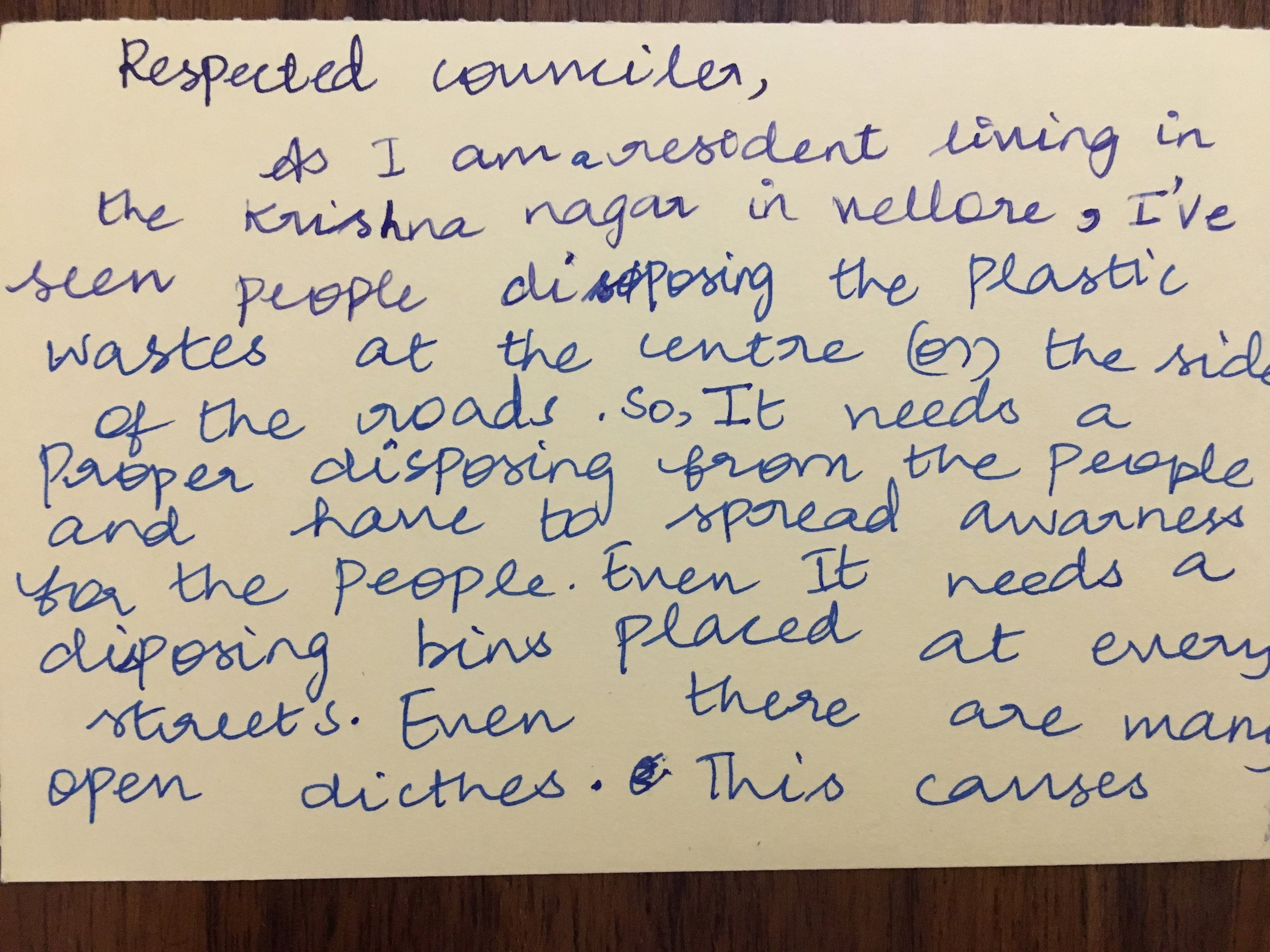
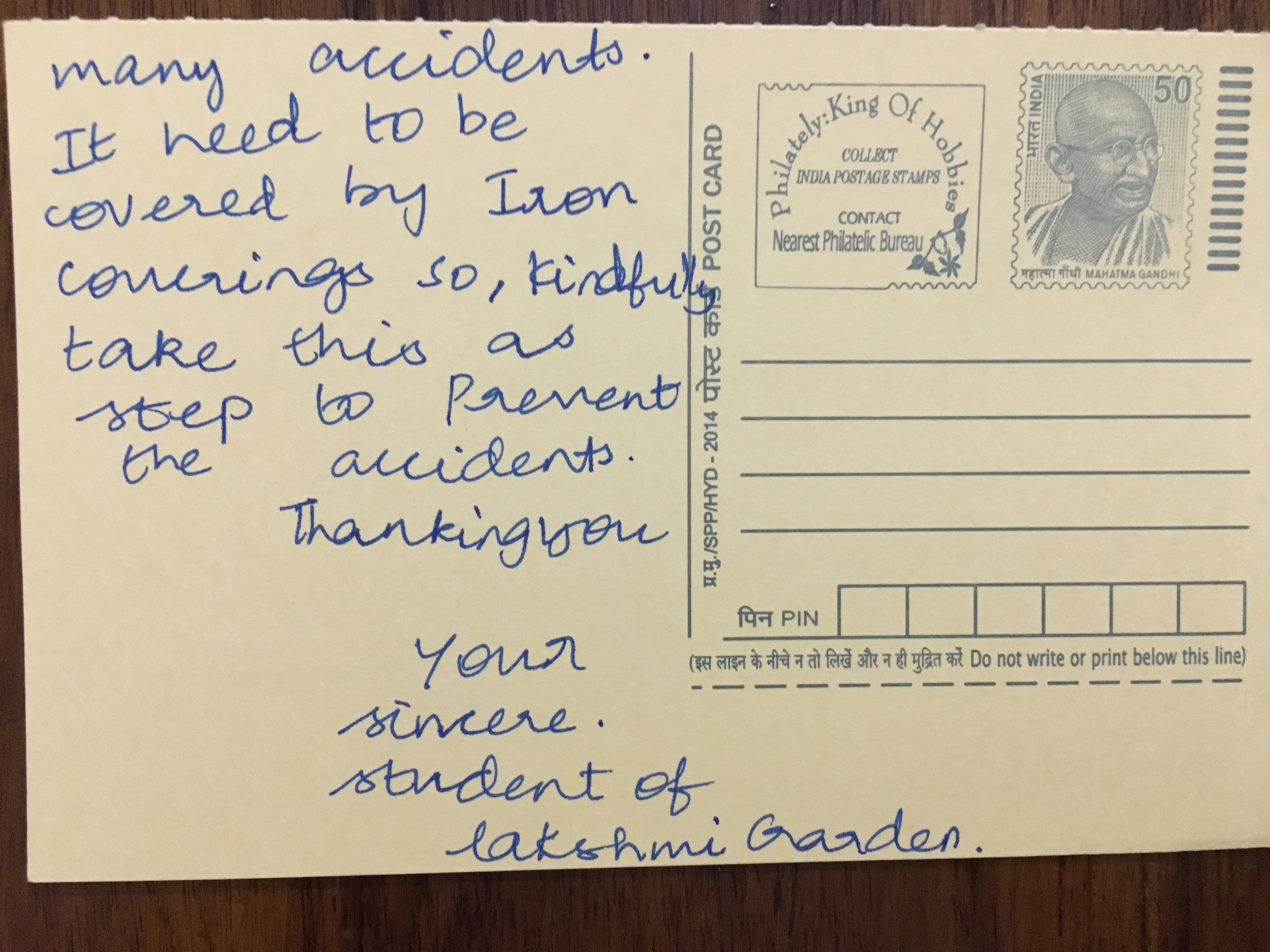
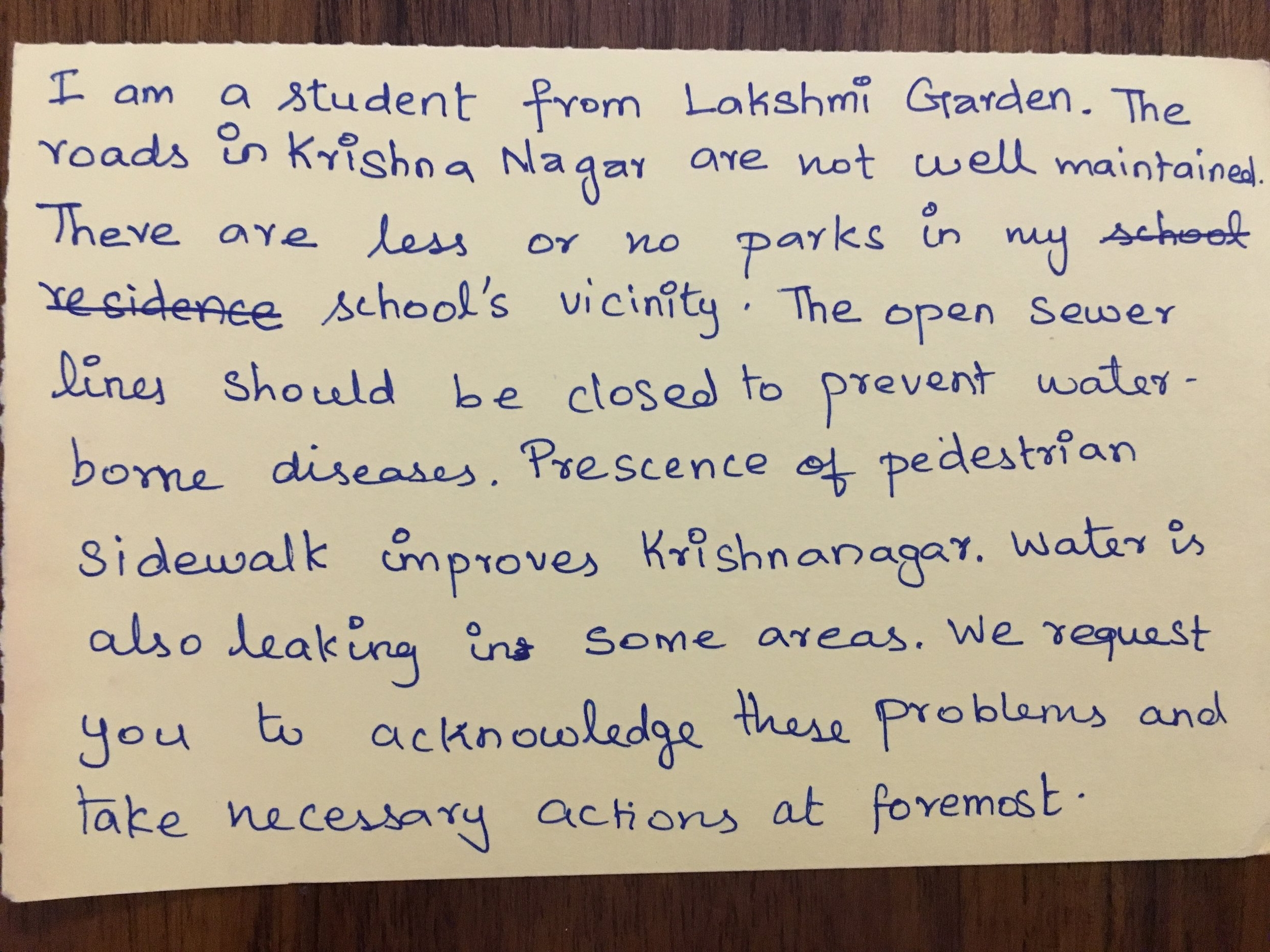
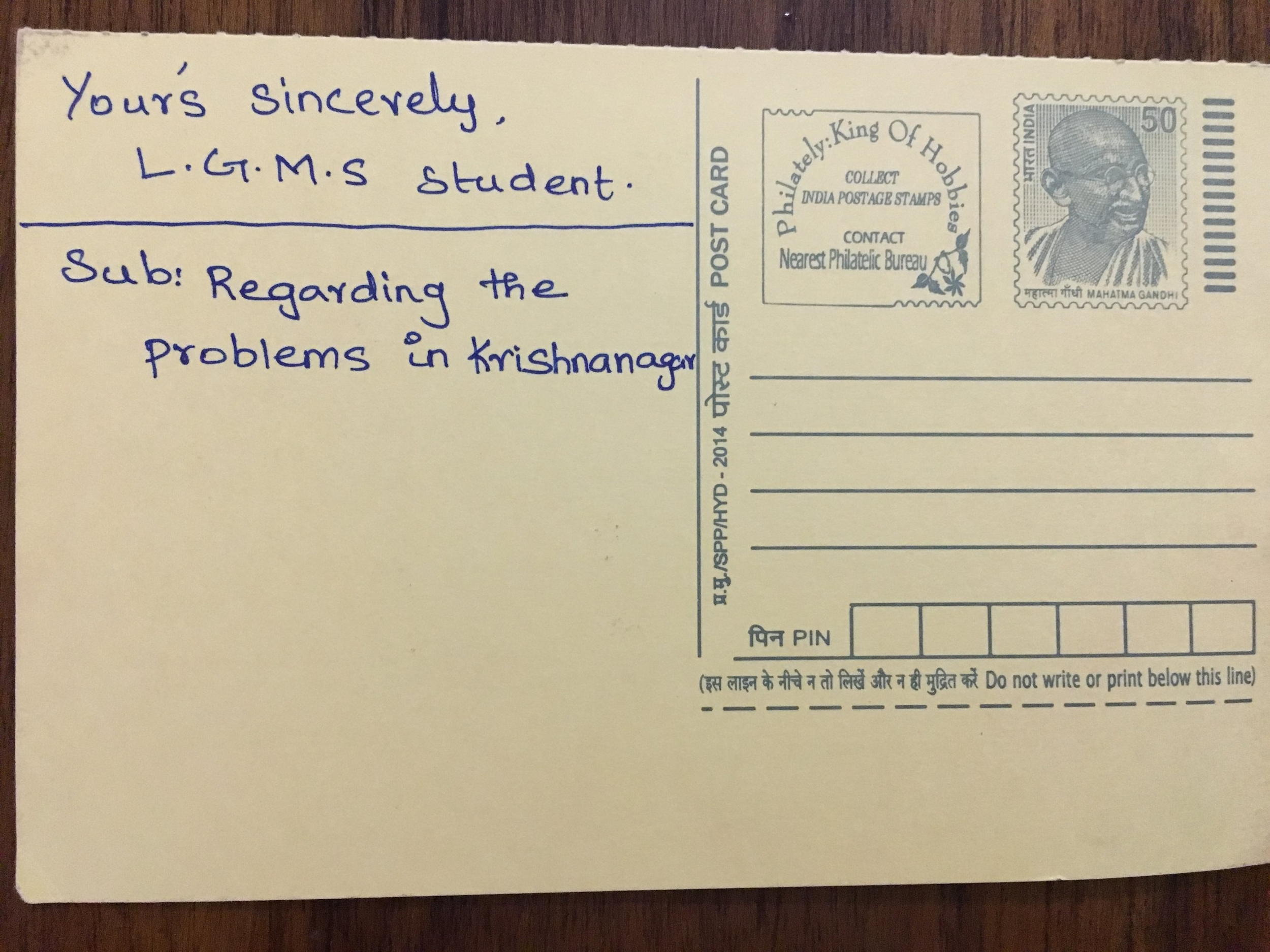
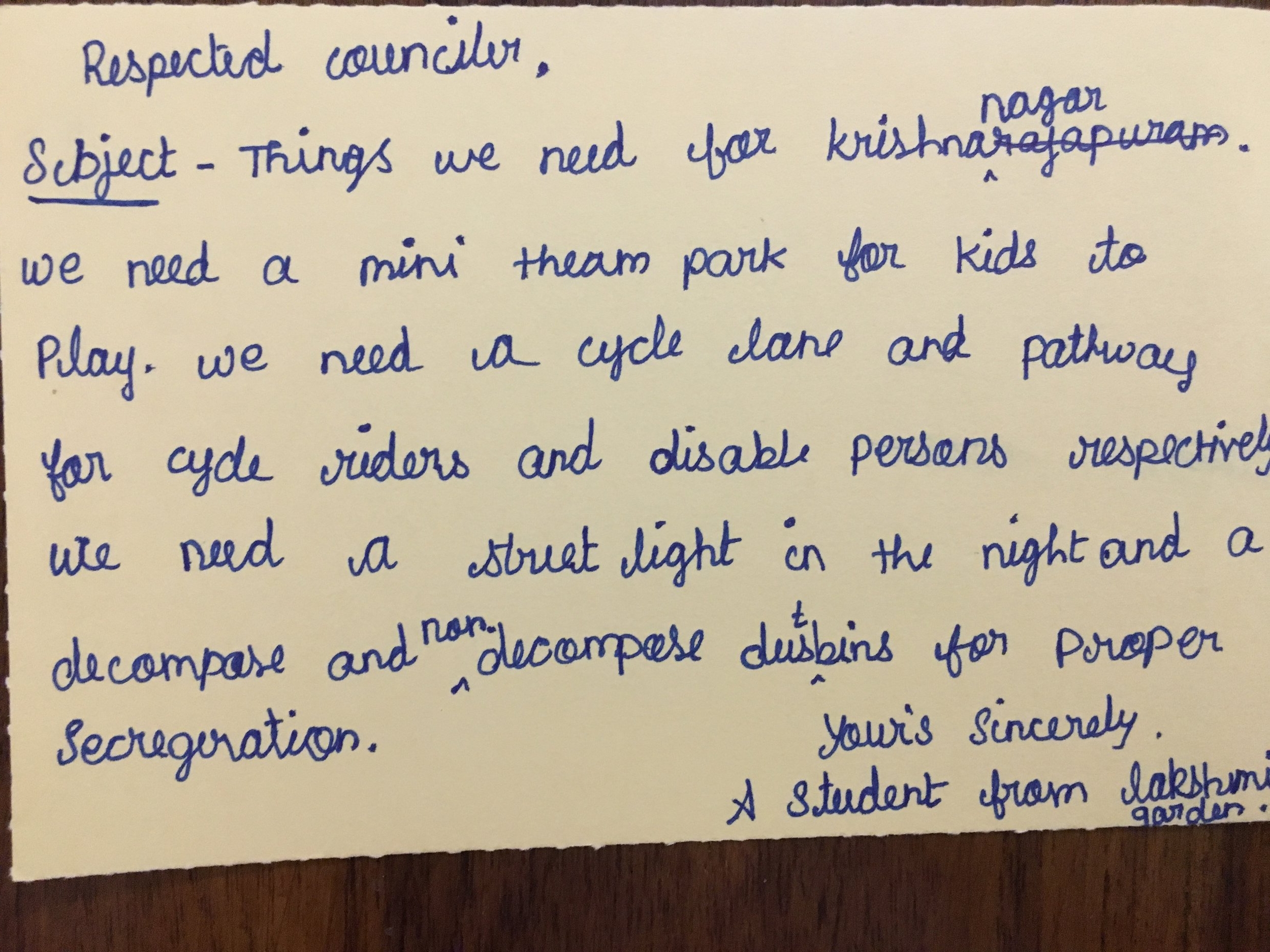
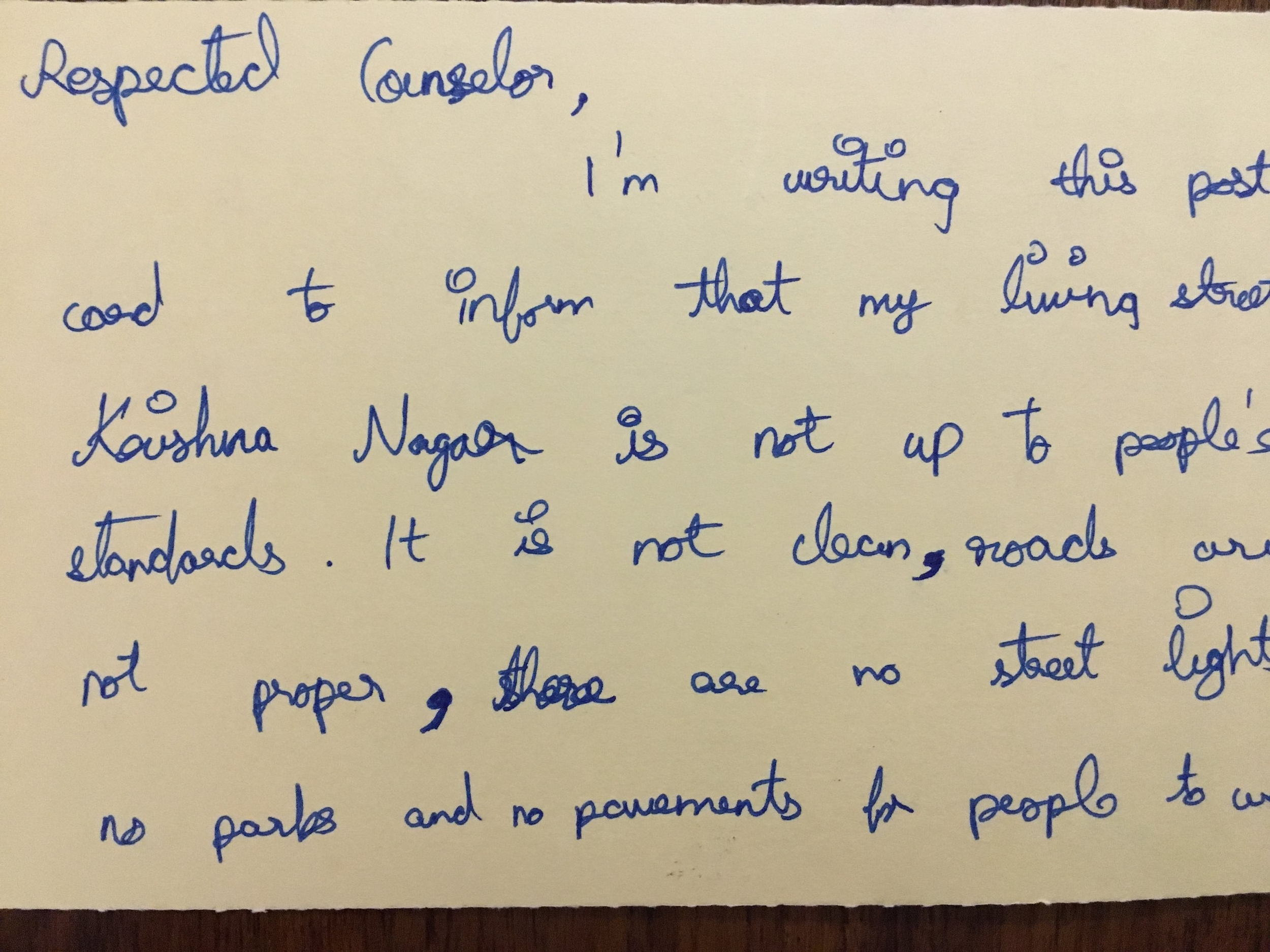
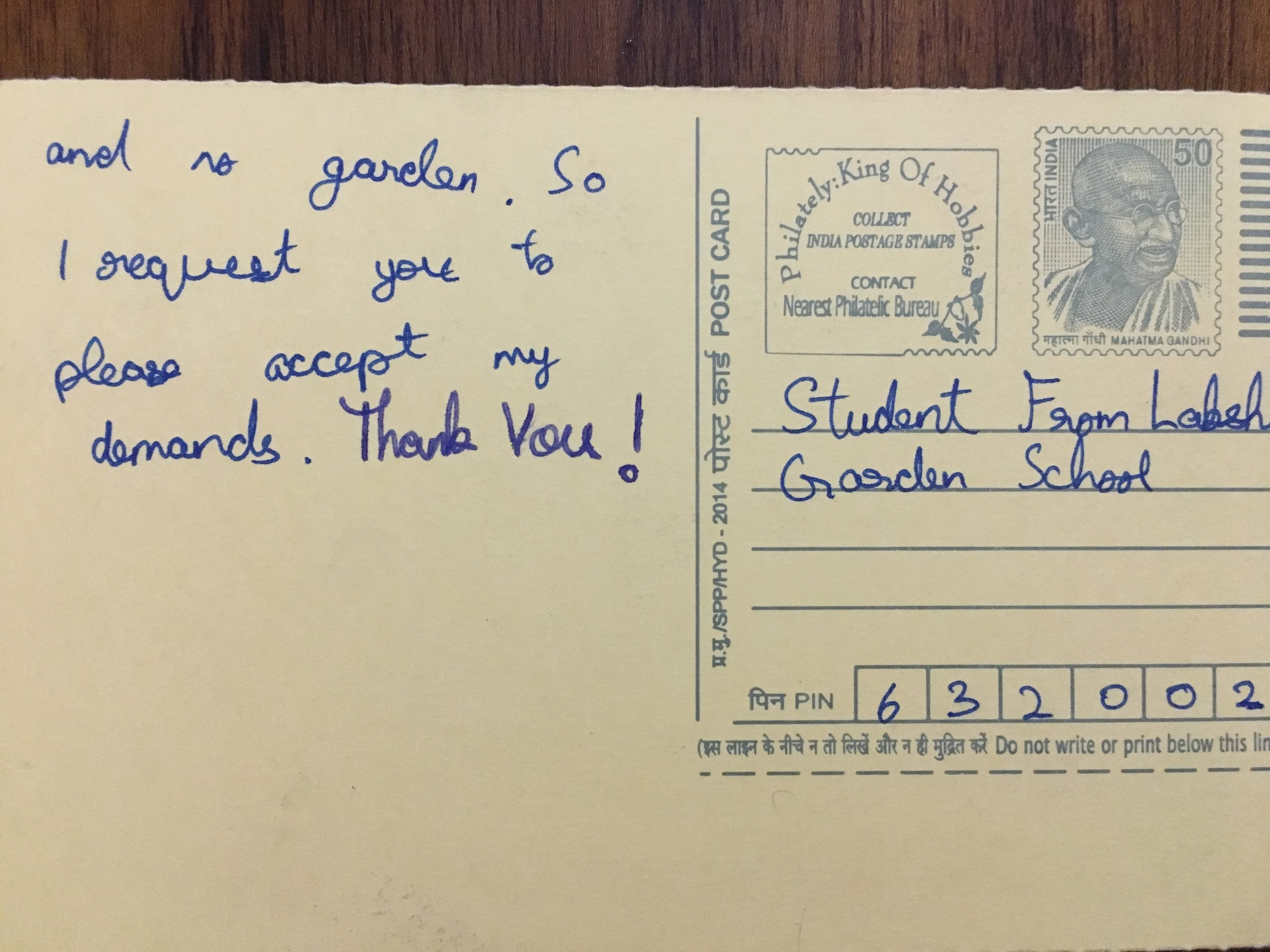
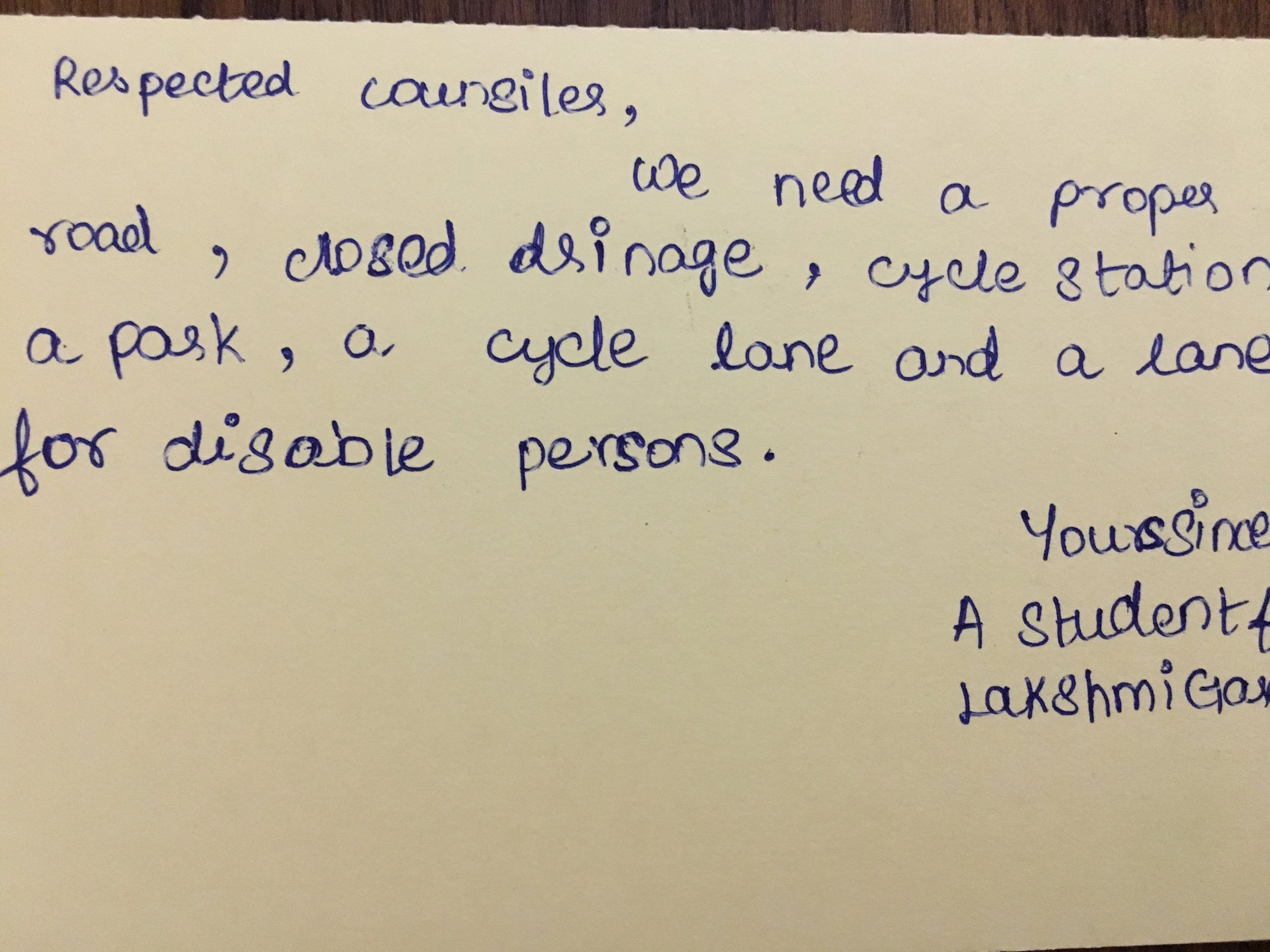
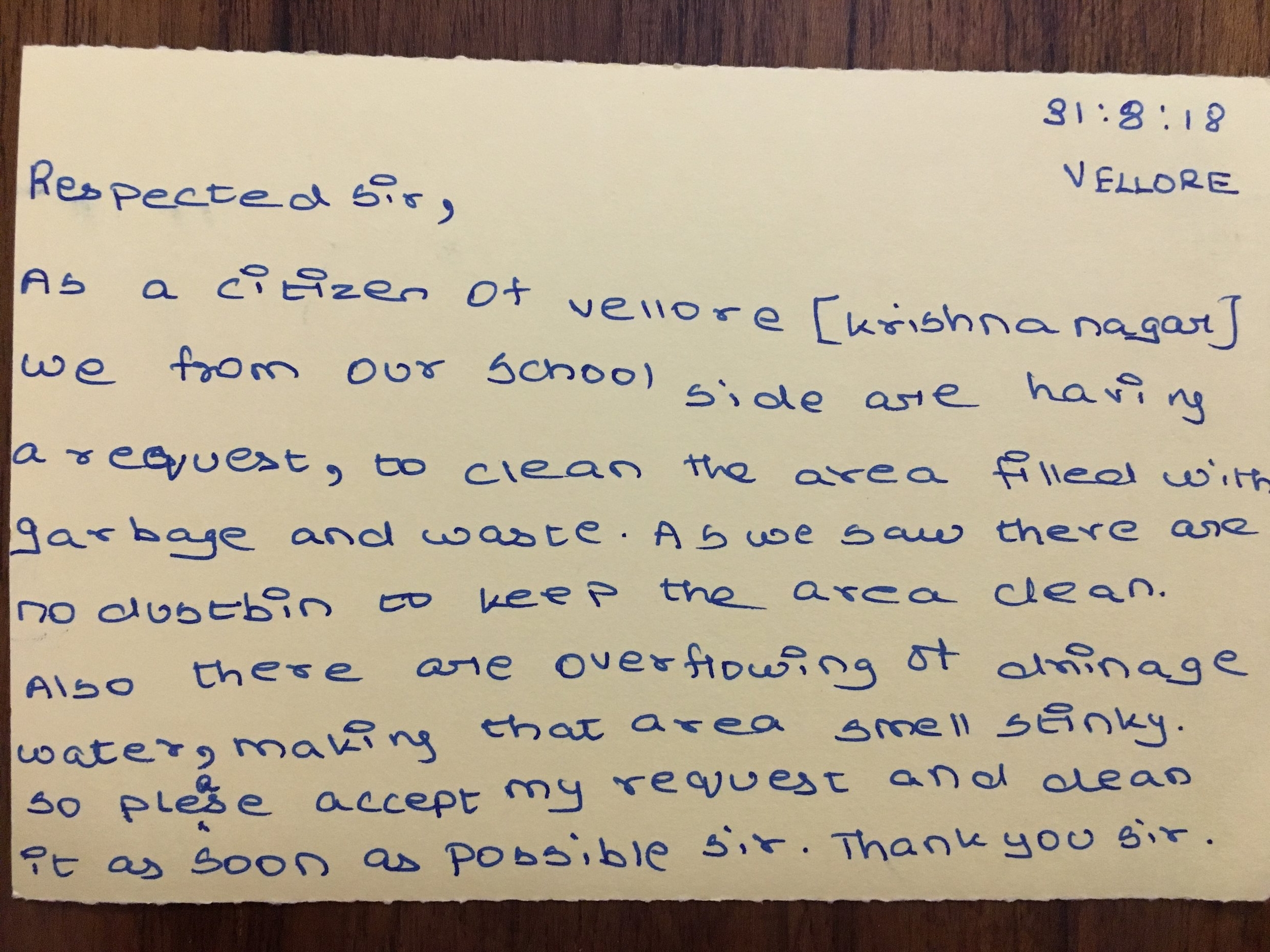
The principal then showed up at the end of the workshop to find out how they liked the workshop. Most of the students said that they had a great time learning about their city and how to actually communicate what they want to the concerned authorities. She then distributed the certificates and we all took a happy group photo at the end of it. Yet again, I left the school with cries from students to come back for another session.


